From I to XLIX: Journalists who have covered every Super Bowl look back
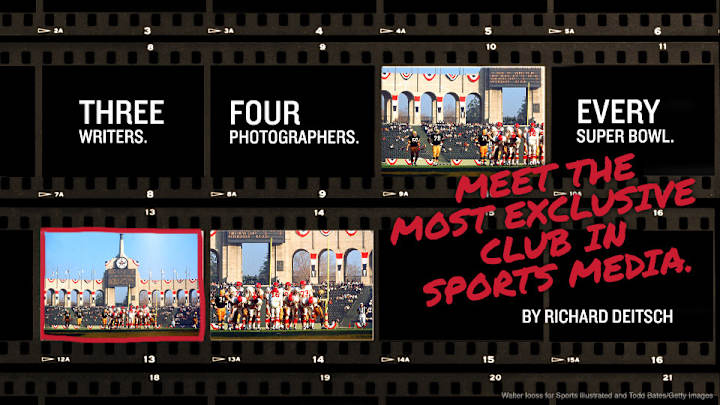
His back hurts on most days, plus there’s the two herniated disks, hearing aids in both ears and the cataract surgery on both eyes. But, hell, no one reaches 86 without a little body work and Jerry Green figures he fell into a bucket of magic dust given how good he feels. Later this week he will drive 257 miles from his home in Palm Desert, Calif., to Phoenix, the site of Super Bowl 49.
You think Tom Brady playing in six Super Bowls is a big deal? Well, try this one on. Green is one of three sports writers who has covered all 48 Super Bowl games. He joined the Detroit News in 1963 and when the beat writer for the Lions left three years later, Green became his newspaper’s pro football reporter, the same year as the AFL-NFL merger. “The timing was perfect,” says Green. “That’s how I got to Super Bowl I."
• SI.com's coverage of Super Bowl XLIX | Grading every NFL coaching hire
Green worked at the News for 41 years before semi-retiring in 2004 at age 76. His wife Nancy passed away two years earlier and though it was tough, he kept covering Super Bowls. His last companion, Arlene Winer, who he was with for six years, died last year. That shook him, too. But he’s leaving for Phoenix this Sunday to cover No. 49.
“I want to keep the streak going as long as I am physically able to do it,” says Green. “I don’t know how long that will be but I am going to this one. I have to go for myself, that is my motivation.”
Through The Lens: 4 photographers who have shot every Super Bowl
Jerry Izenberg will be there too -- he wouldn’t bleeping miss it. At 84, Izenberg drops curses at nearly the same rate he pumped out award-winning columns for the Star-Ledger of Newark before he stepped away from fulltime work seven years ago. He now lives in Henderson, Nev., and is a columnist emeritus for the newspaper and NJ. com. His contract with the Star-Ledger includes covering championship boxing, major horse racing events, bowl games for Rutgers and of course, the Super Bowl. Izenberg had two spinal operations last year and covering Super Bowl 48 wasn’t easy given the cold weather in New Jersey. But he slogged through and he’ll be at the big game once again.
“On a professional level the streak is important because it is the most important football game played every year,” says Izenberg, whose first job at the Star-Ledger was in 1951 as a night copy boy. “On a personal level, it’s not as intense as it used to be for me because many of my friends are dead. But I love the kind of writing that it offers, and I’m totally on my own. I have lost a lot of friends but I’m in this for the full 15 rounds.”
GALLERY: Four who photographed every Super Bowl
Four Who Photographed Every Super Bowl
Super Bowl XLVIII, Feb. 2, 2014: Seattle 43, Denver 8, at East Rutherford
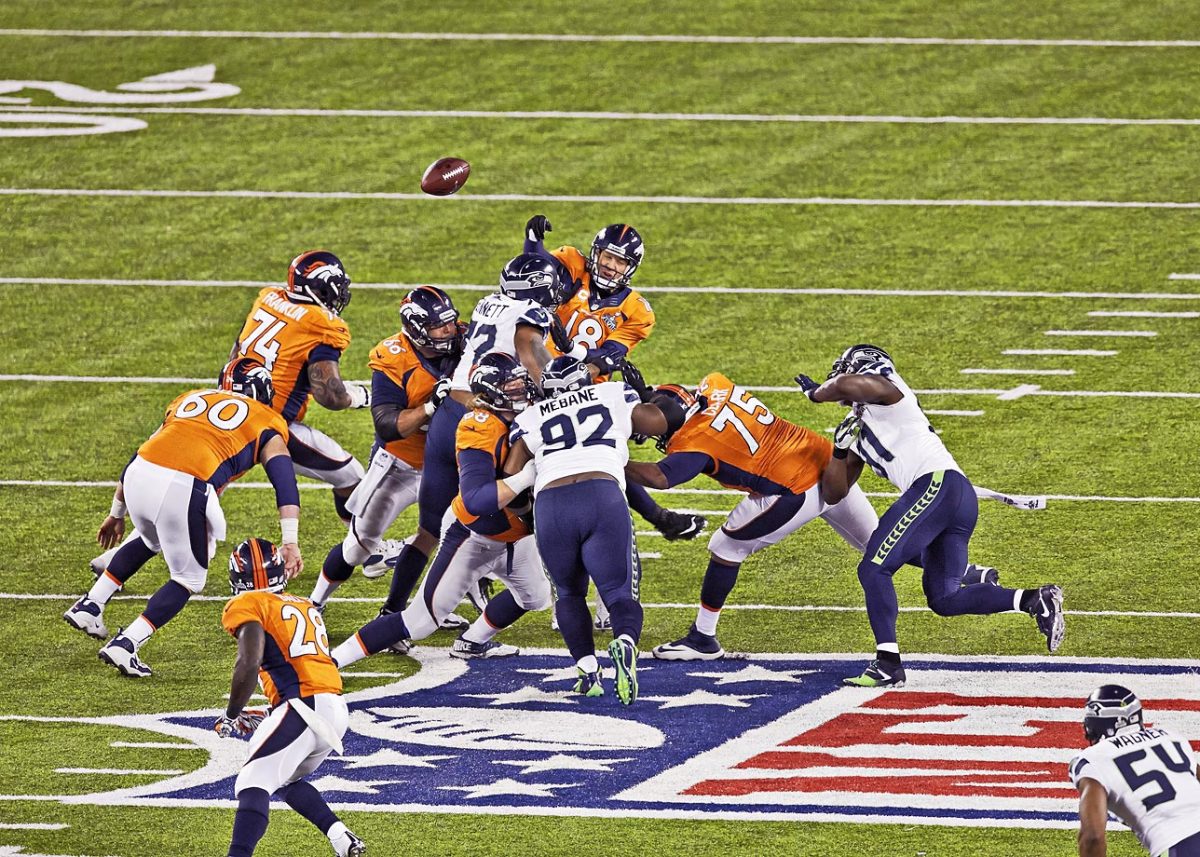
Michael Bennett forces a fumble by Peyton Manning in Seattle's lopsided victory over the Denver Broncos.
Super Bowl XLVII, Feb. 3, 2013: Baltimore 34, San Francisco 31, at New Orleans
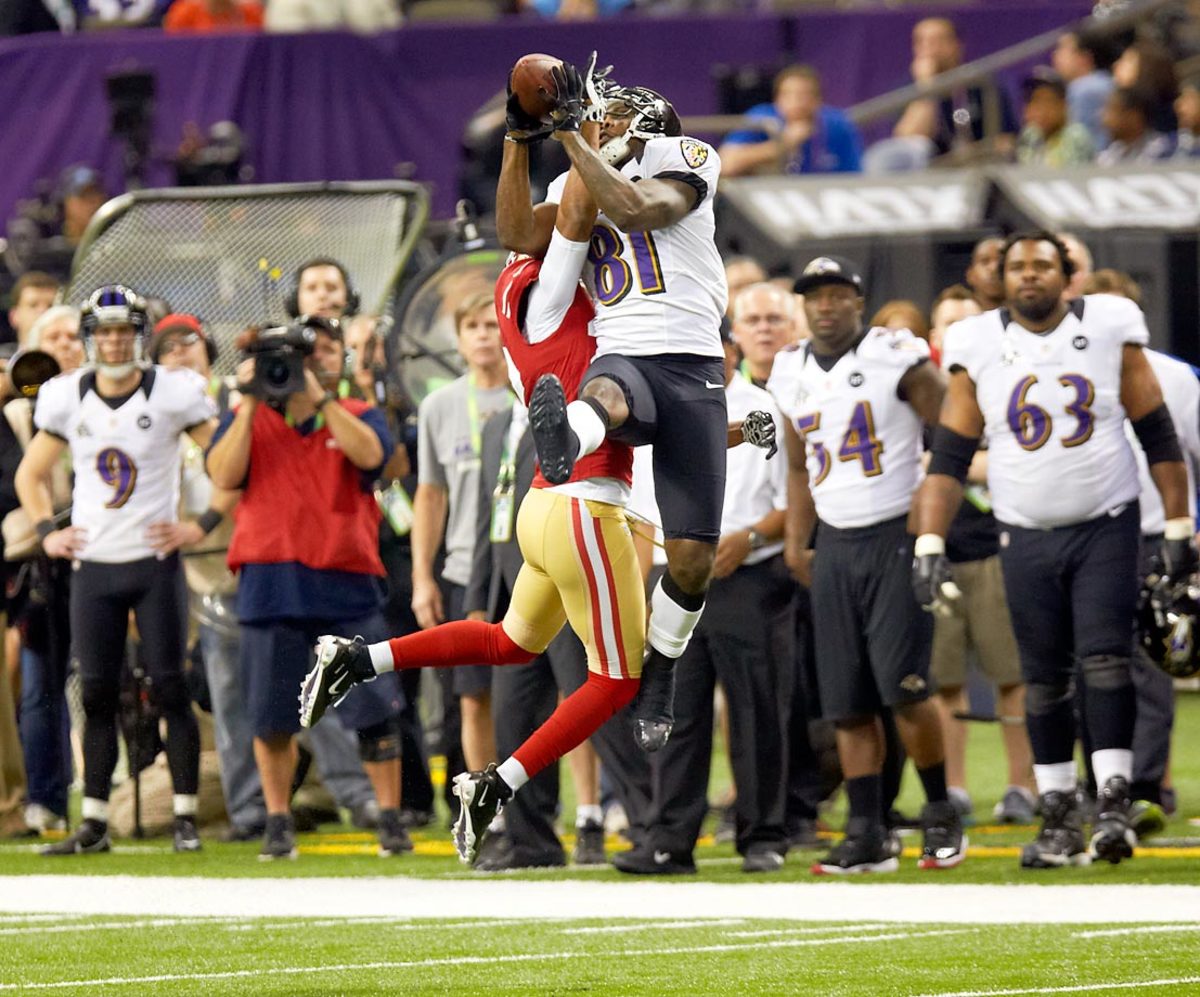
Anquan Boldin made six catches for 106 yards and a touchdown as the Ravens won the second Super Bowl title in franchise history.
Super Bowl XLVI, Feb. 5, 2012: N.Y. Giants 21, New England 17, at Indianapolis
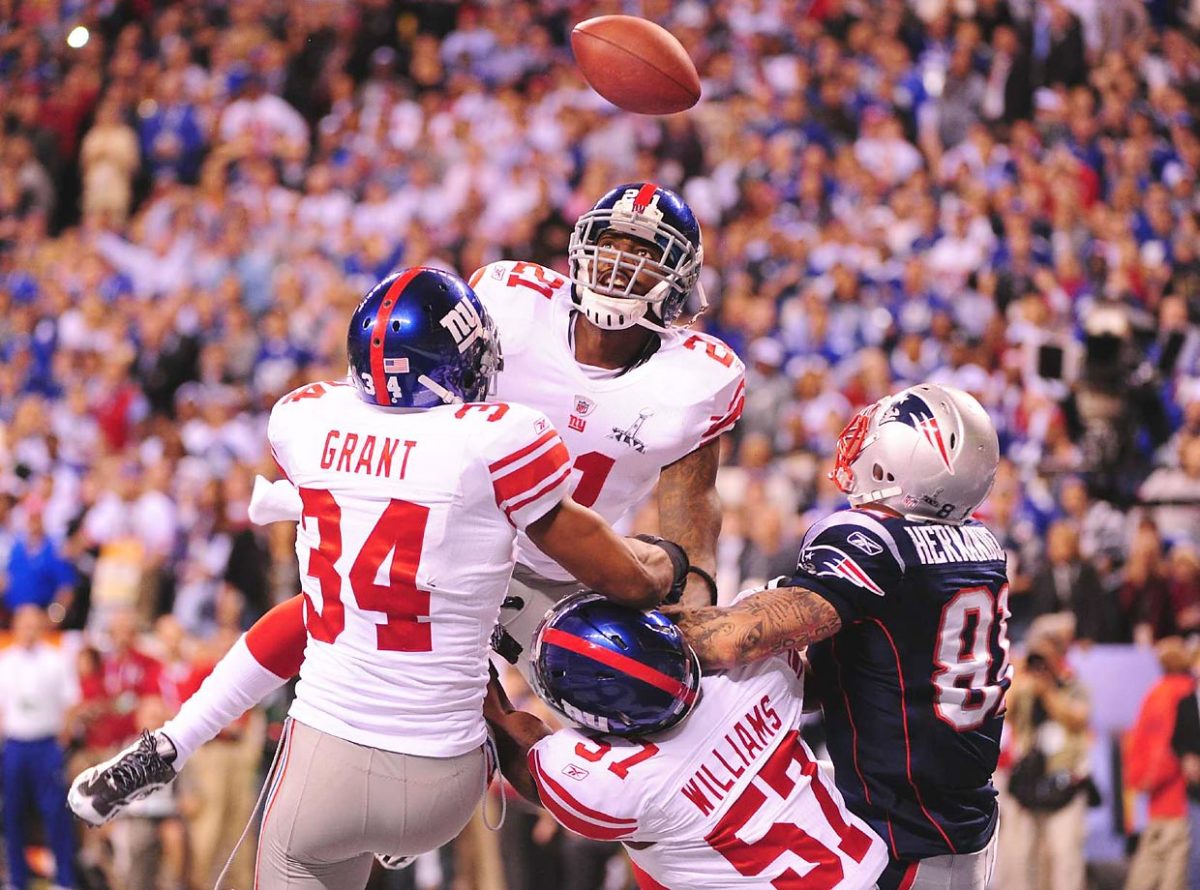
Giants defenders Kenny Phillips (21), Jacquian Williams (57) and Deon Grant (34) break up a Hail Mary pass intended for Patriots tight end Aaron Hernandez.
Super Bowl XLV, Feb. 6, 2011: Green Bay 31, Pittsburgh 25, at Arlington
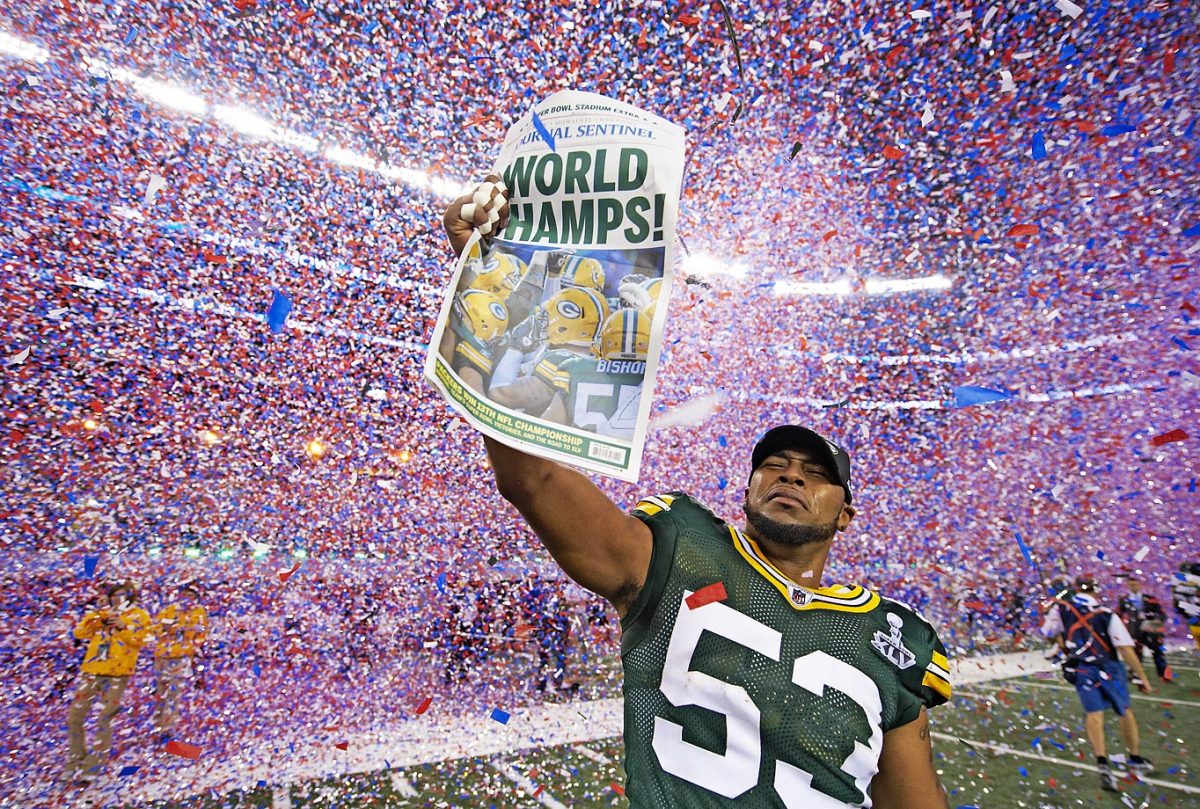
Diyral Briggs of the Green Bay Packers delivers the news via the Milwaukee Journal Sentinel after his team's win over the Pittsburgh Steelers.
Super Bowl XLIV, Feb. 7, 2010: New Orleans 31, Indianapolis 17, at Miami
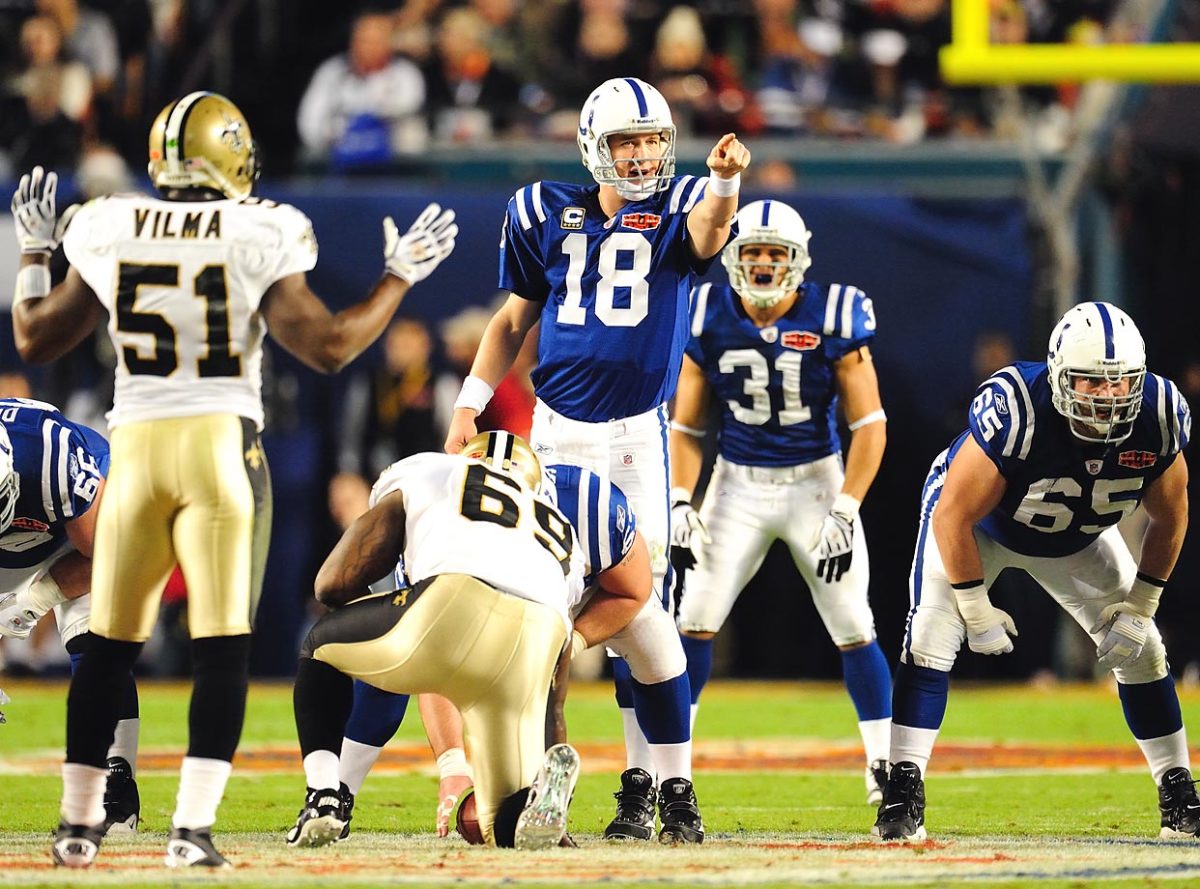
Peyton Manning fell to 1-1 in Super Bowl appearances after he and the Colts were done in by a gutsy onsides kick by New Orleans to start the second half of Super Bowl XLIV.
Super Bowl XLIII, Feb. 1, 2009: Pittsburgh 27, Arizona 23, at Tampa
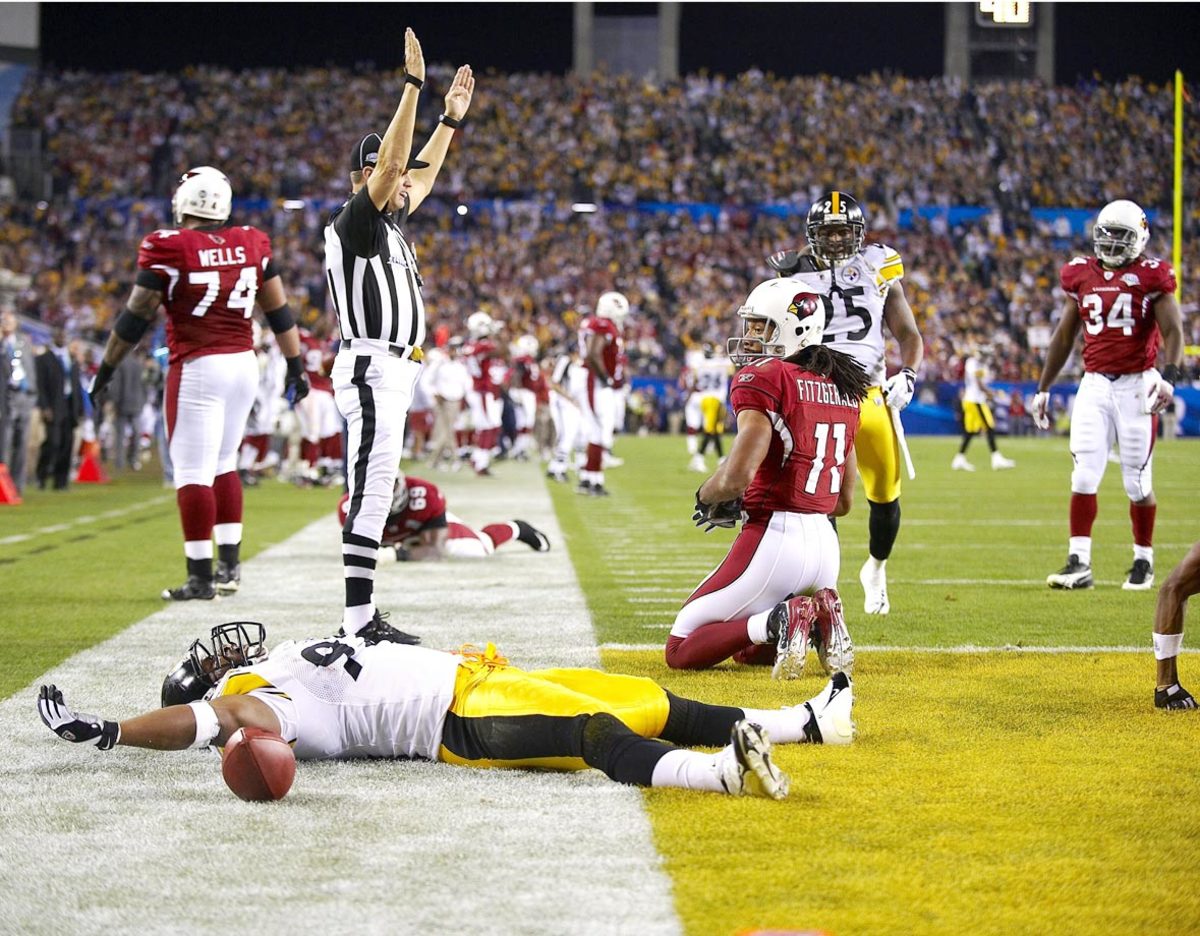
An exhausted James Harrison didn't have the energy to do anything else after returning an interception 100 yards for a score to end the first half of Pittsburgh's victory over Arizona.
Super Bowl XLII, Feb. 3, 2008: N.Y. Giants 17, New England 14, at Glendale
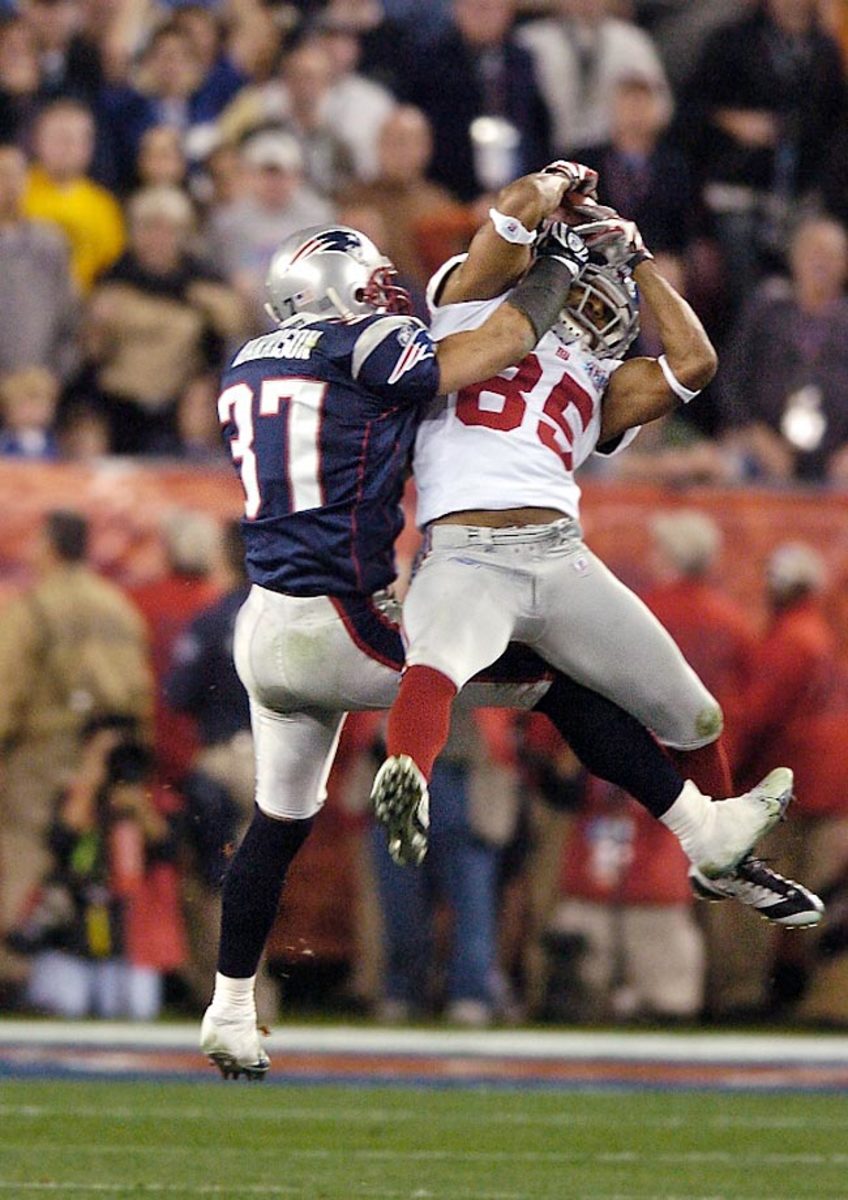
David Tyree's one-handed, helmet-aided catch on 3rd and long revived the Giants' game-winning drive in Super Bowl XLII.
Super Bowl XLI, Feb. 4, 2007: Indianapolis 29, Chicago 17, at Miami
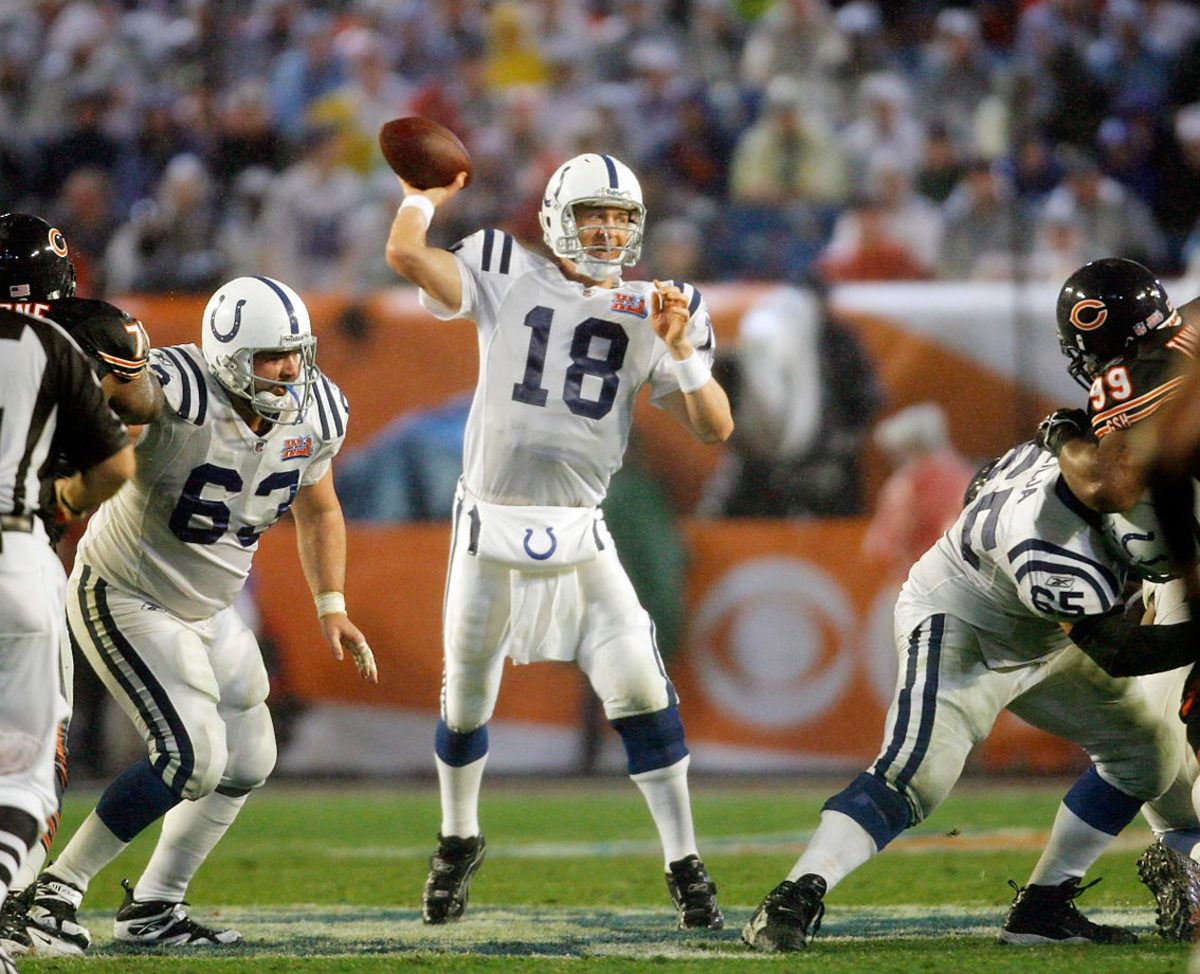
Peyton Manning completed 25 of 38 passes for 247 yards, one touchdown and one interception to take home MVP honors against the Bears.
Super Bowl XL, Feb. 5, 2006: Pittsburgh 21, Seattle 10, at Detroit
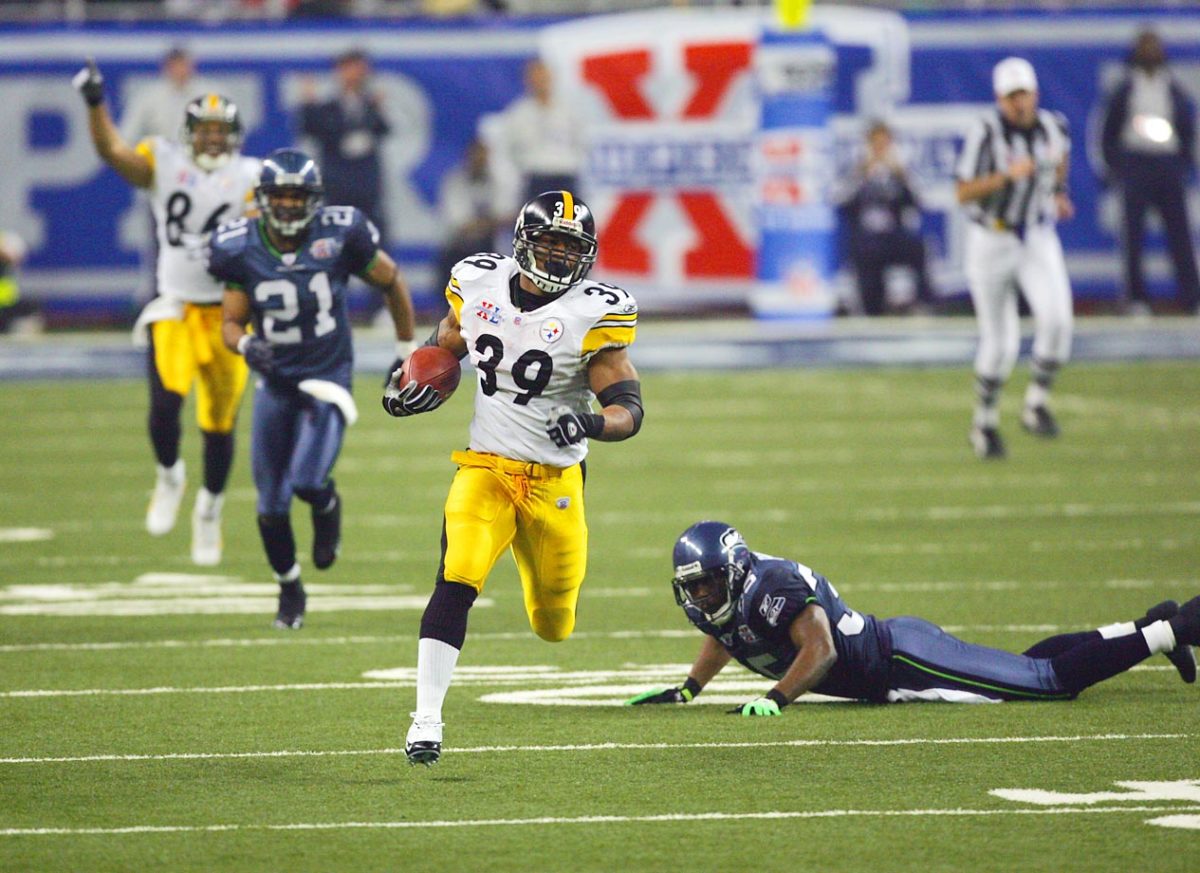
Willie Parker set a Super Bowl record with his 75-yard scoring run, which gave Pittsburgh a 14-3 lead.
Super Bowl XXXIX, Feb. 6, 2005: New England 24, Philadelphia 21, at Jacksonville
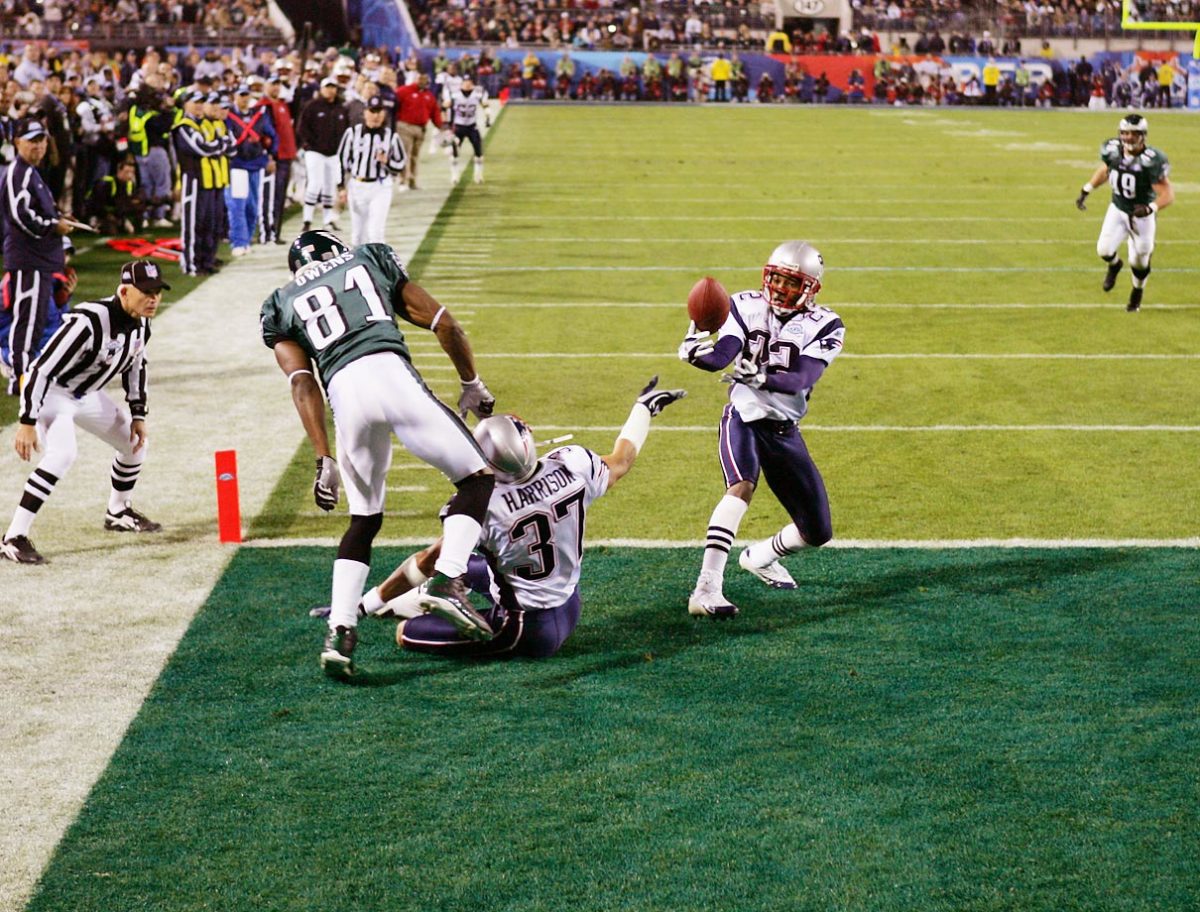
The Patriots came up with three interceptions against Donovan McNabb and the Eagles en route to their third Super Bowl victory in four years.
Super Bowl XXXVIII, Feb. 1, 2004: New England 32, Carolina 29, at Houston
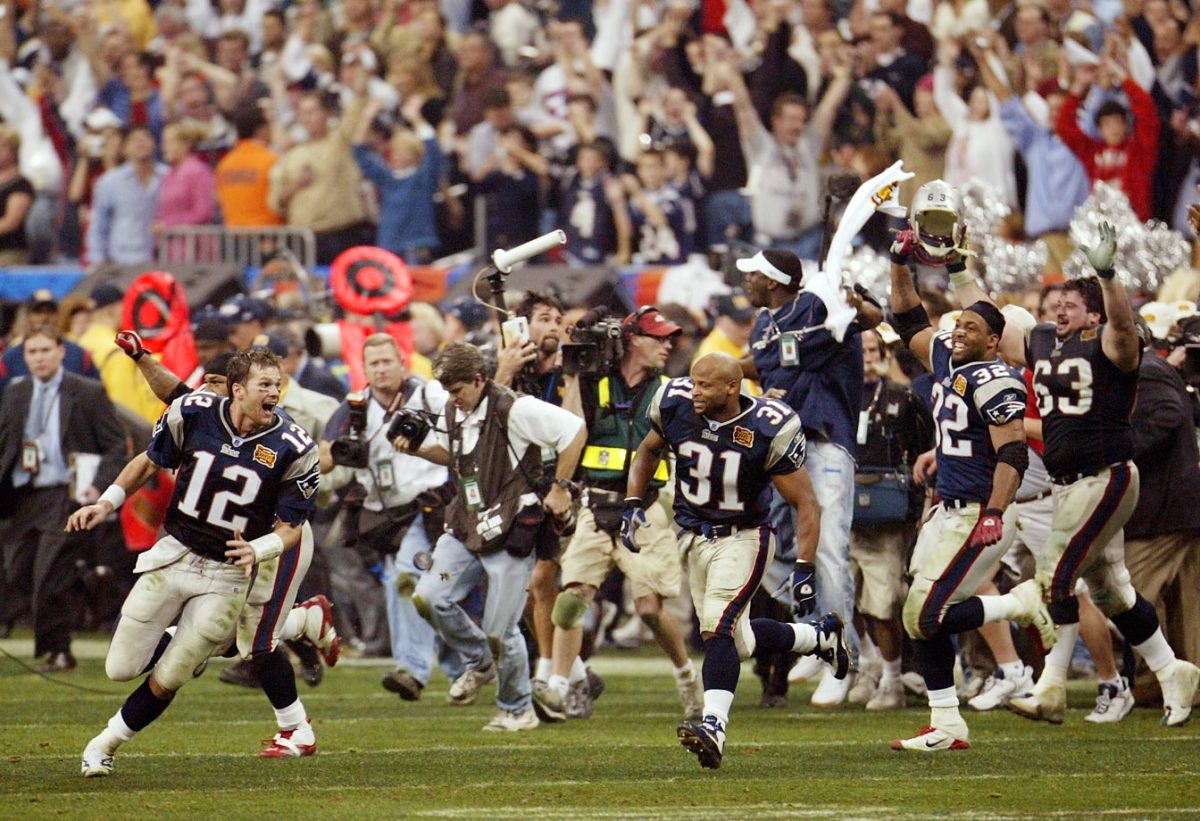
Tom Brady lead the Patriots in celebration at the conclusion of their victory over Carolina. The game was decided on a 41-yard field goal by Adam Vinatieri with four seconds remaining.
Super Bowl XXXVII, Jan. 26, 2003: Tampa Bay 48, Oakland 21, at San Diego
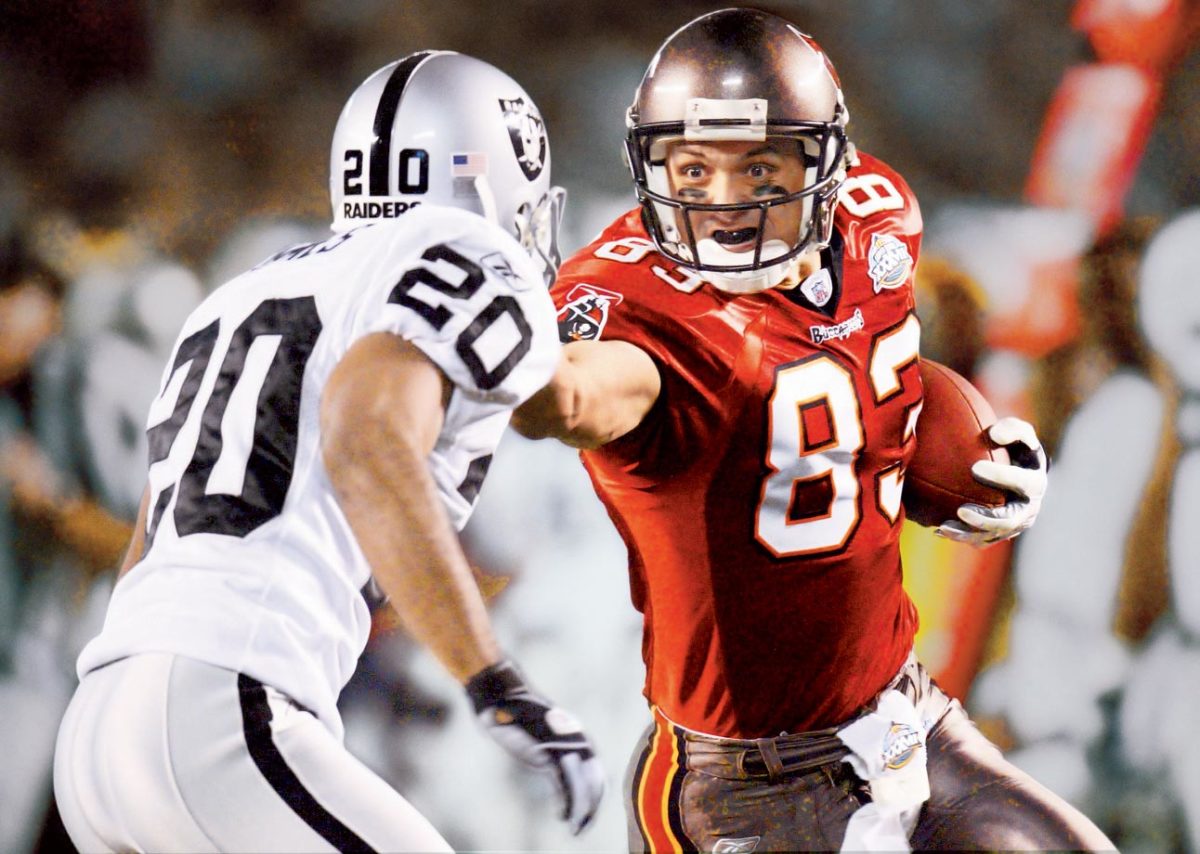
Joe Jurevicius stiff arms Tory James at Qualcomm Stadium.
Super Bowl XXXVI, Feb. 3, 2002: New England 20, St. Louis 17, at New Orleans
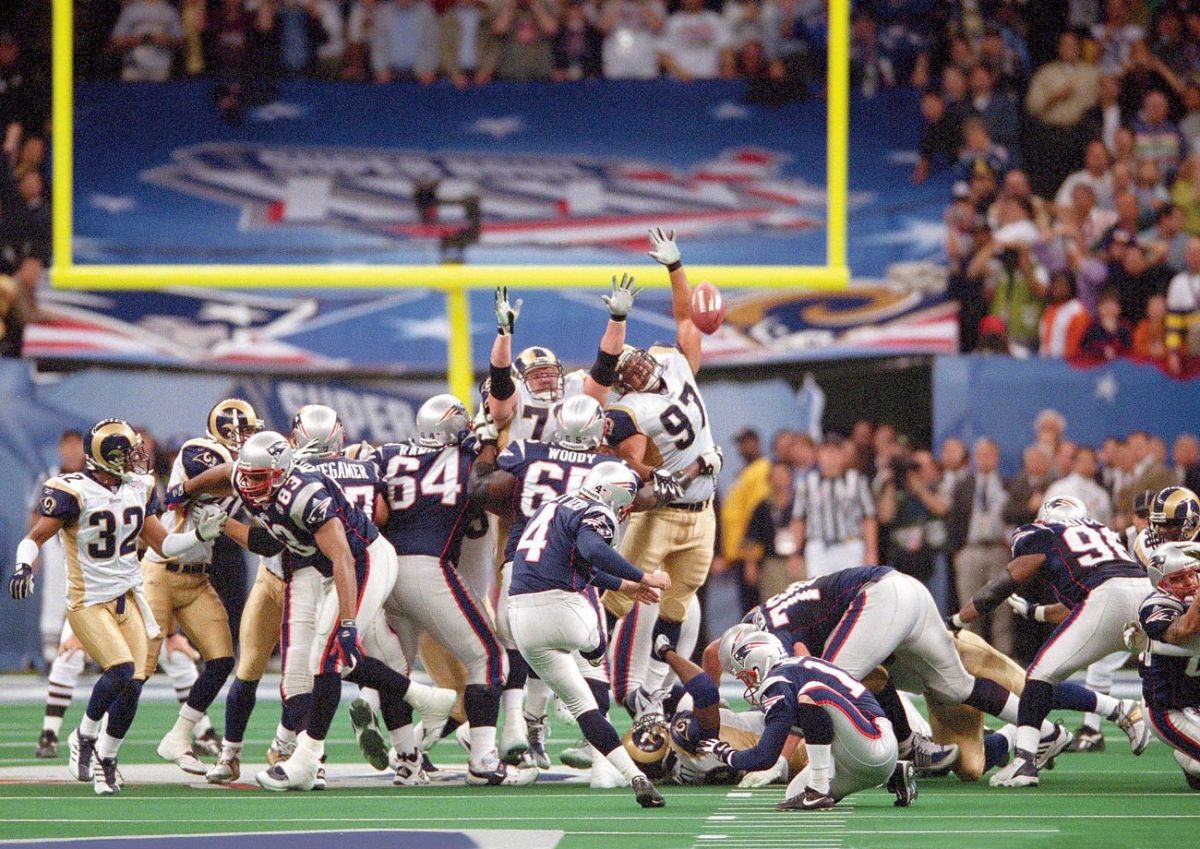
Adam Vinatieri kicks the game-winning field goal from 48 yards out to lift the Patriots over the Rams in the first Super Bowl played in a February.
Super Bowl XXXV, Jan. 28, 2001: Baltimore 34, N.Y. Giants 7, at Tampa
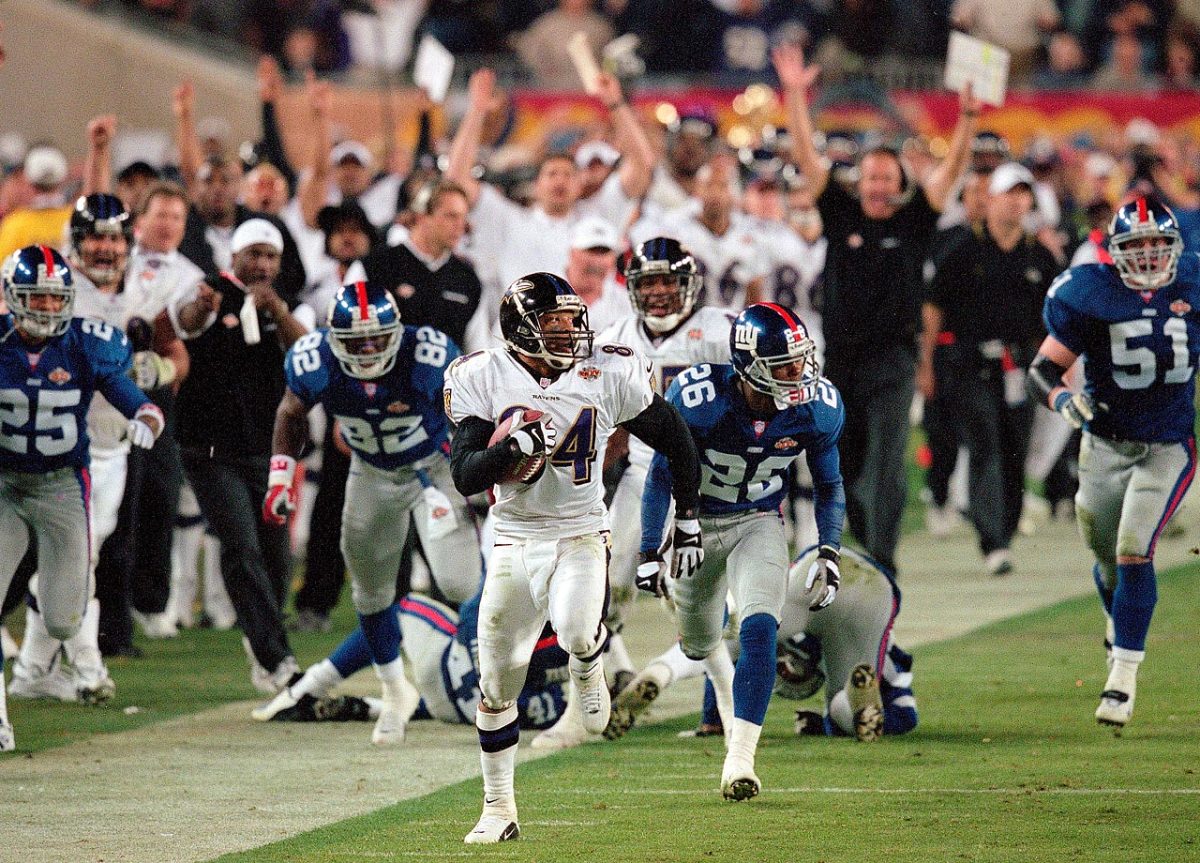
Jermaine Lewis sprints down the right sideline for an 84-yard kickoff return touchdown in the third quarter.
Super Bowl XXXIV, Jan. 30, 2000: St. Louis 23, Tennessee 16, at Atlanta
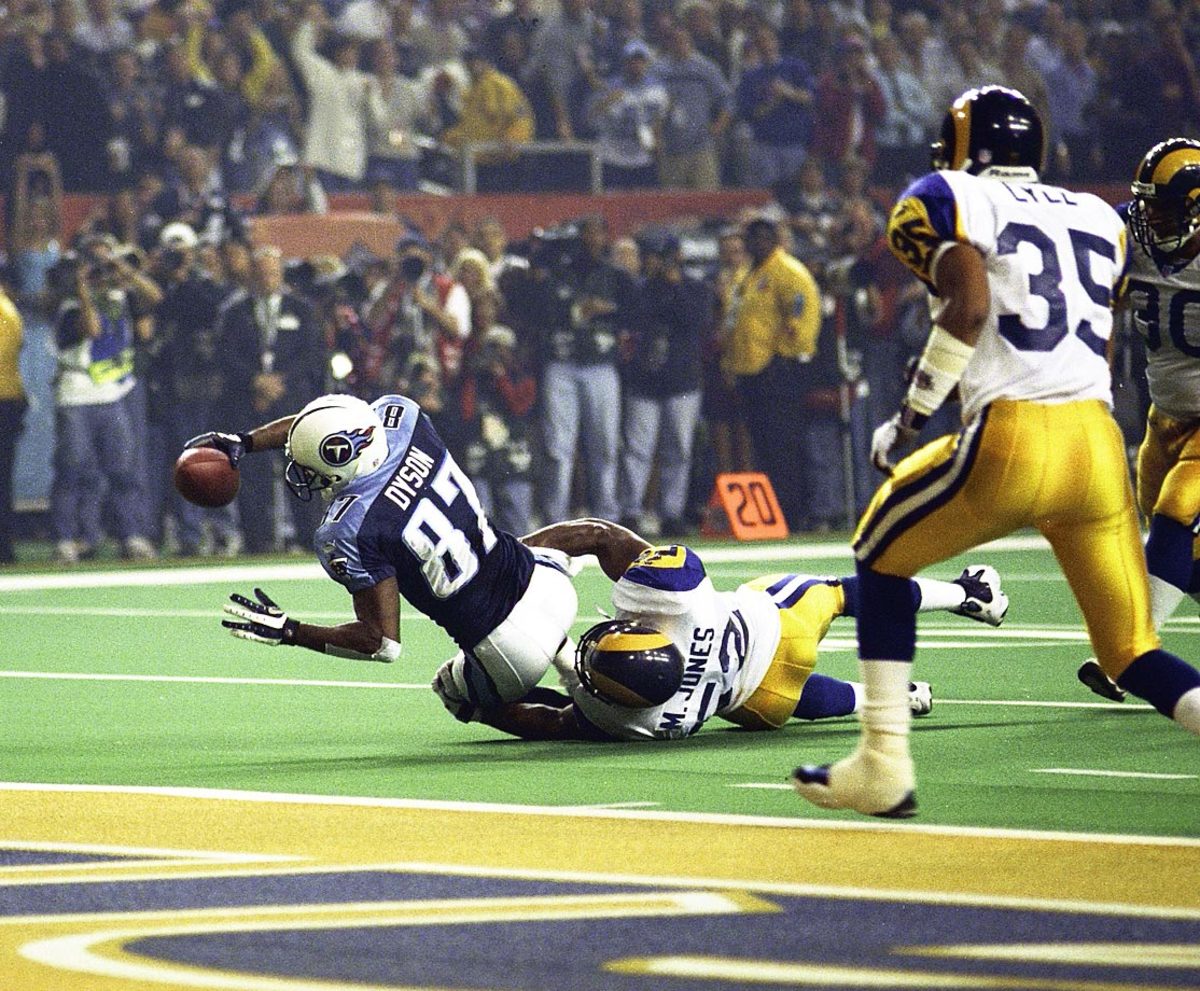
Kevin Dyson of the Tennessee Titans comes up short in his bid to score the winning touchdown as Mike Jones makes the tackle for the St. Louis Rams.
Super Bowl XXXIII, Jan. 31, 1999: Denver 34, Atlanta 19, at Miami
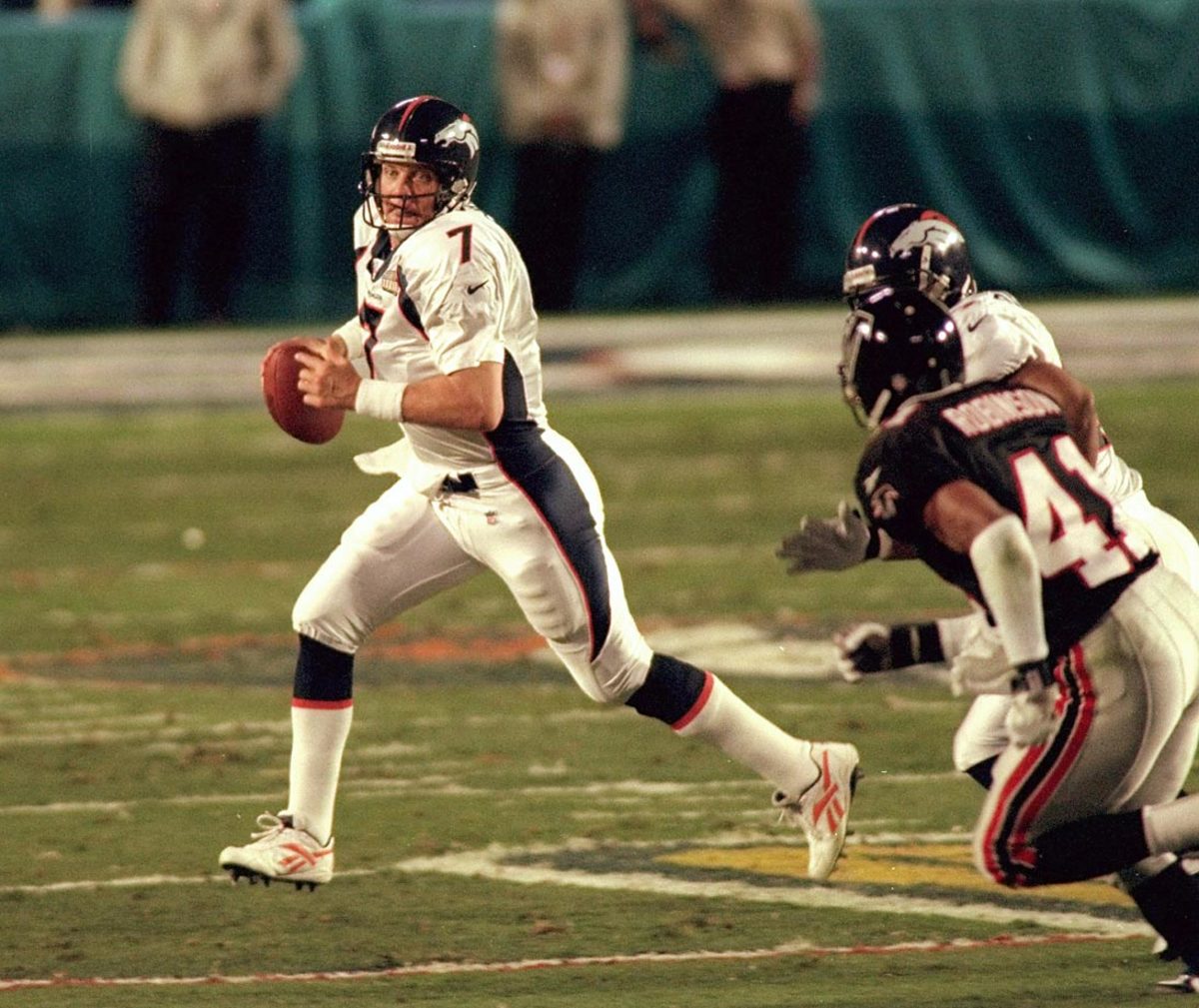
In the final game of his NFL career, John Elway, 38, became the oldest played to be named MVP of the game, completing 18 passes for 336 yards with one touchdown and one interception. He ran in for another score.
Super Bowl XXXII, Jan. 25, 1998: Denver 31, Green Bay 24, at San Diego
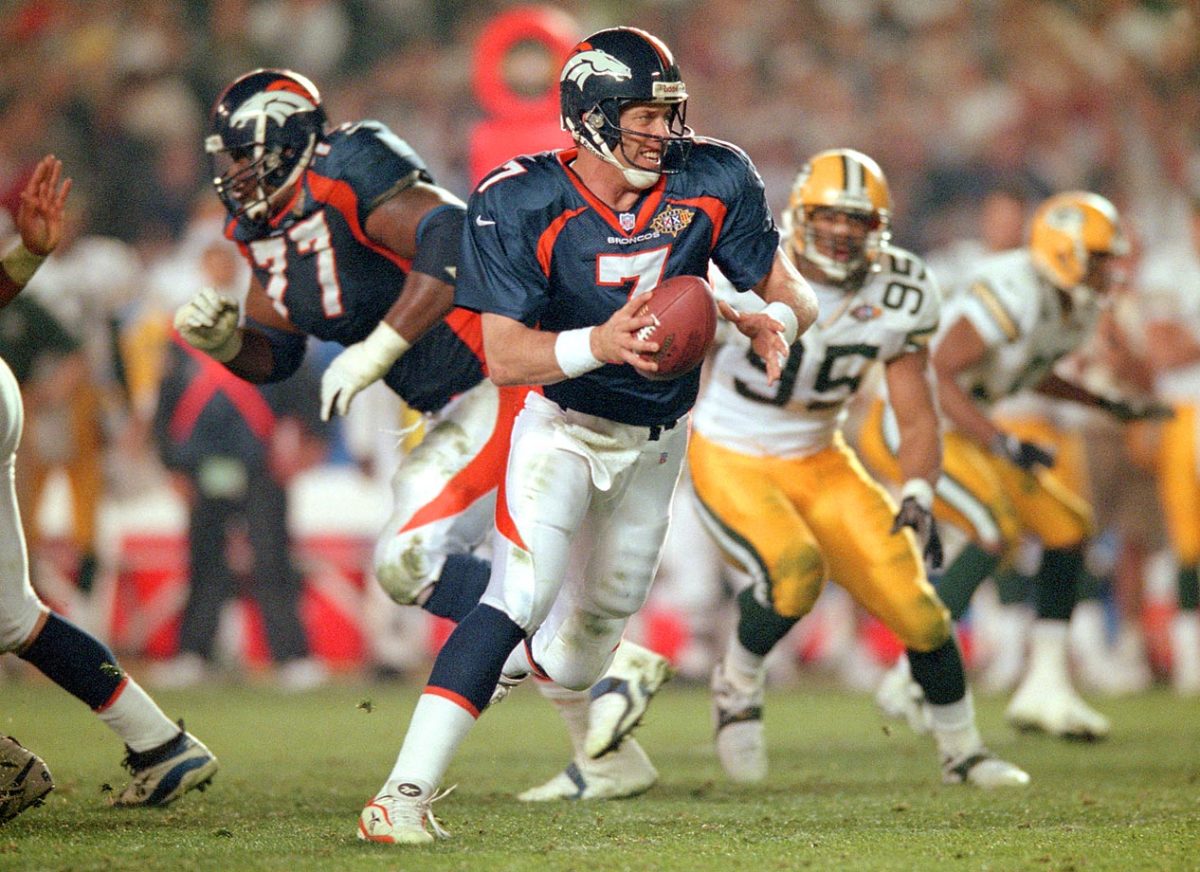
In his fourth try, John Elway finally won a Super Bowl, knocking off the defending Super Bowl champion Green Bay Packers in the process.
Super Bowl XXXI, Jan. 26, 1997: Green Bay 35, New England 21, at New Orleans
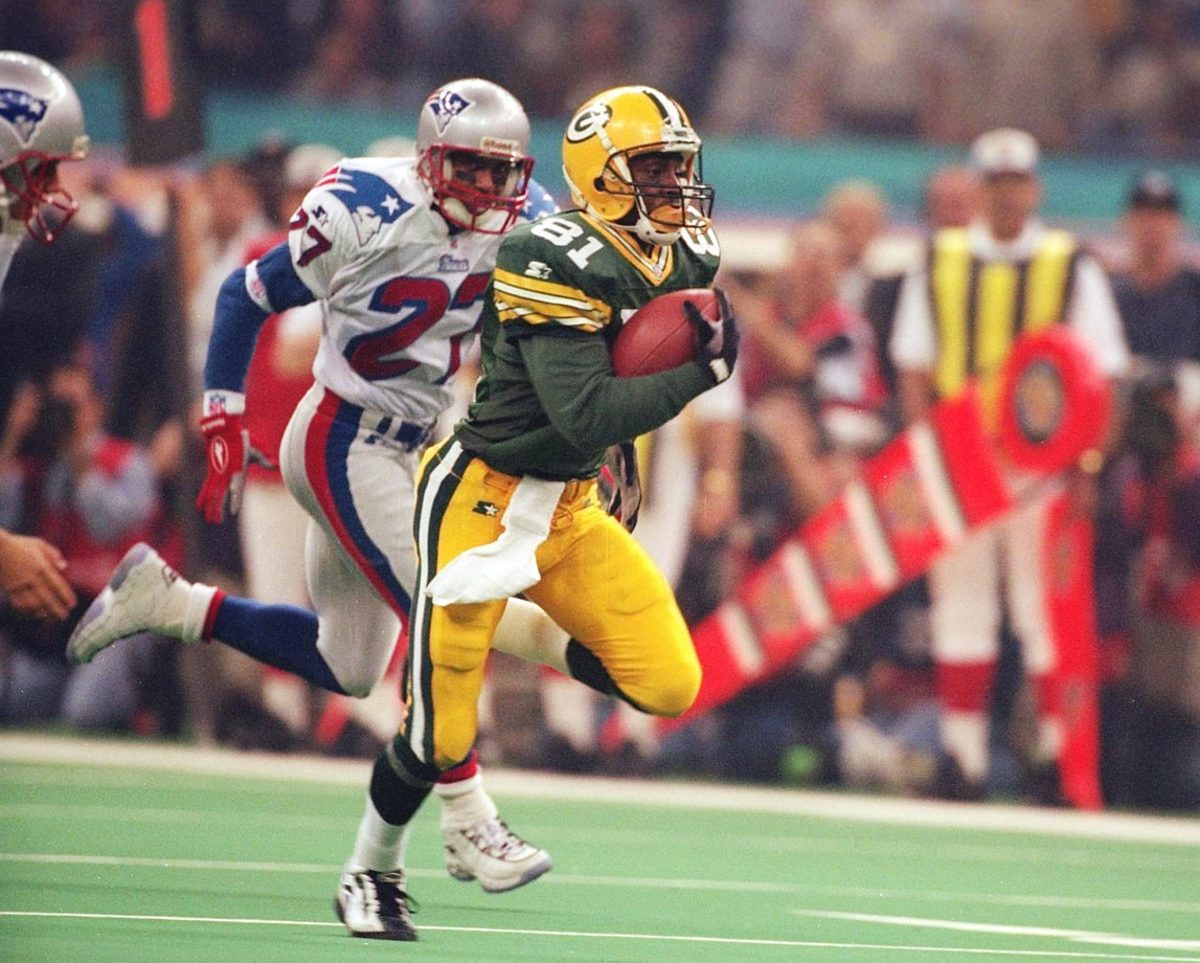
Desmond Howard became the first special teams player to take home the MVP trophy, this after a Super Bowl-record 90-yard punt return and a 99-yard kickoff return touchdown.
Super Bowl XXX, Jan. 28, 1996: Dallas 27, Pittsburgh 17, at Tempe
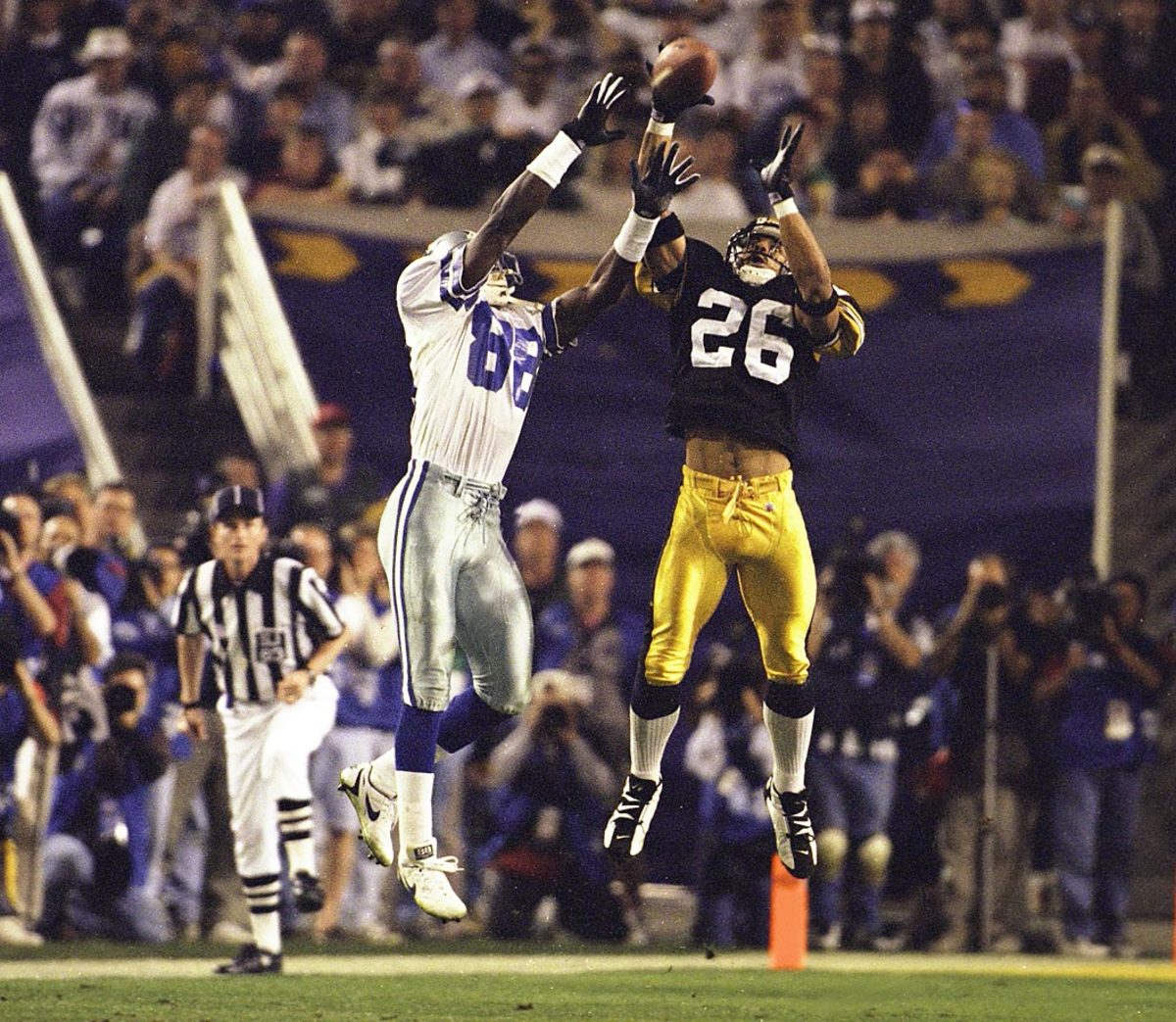
Rod Woodson (26) and Michael Irvin vie for the ball in the third Super Bowl meeting between Pittsburgh and Dallas. The loss was the Steelers first in a Super Bowl.
Super Bowl XXIX, Jan. 29, 1995: San Francisco 49, San Diego 26, at Miami
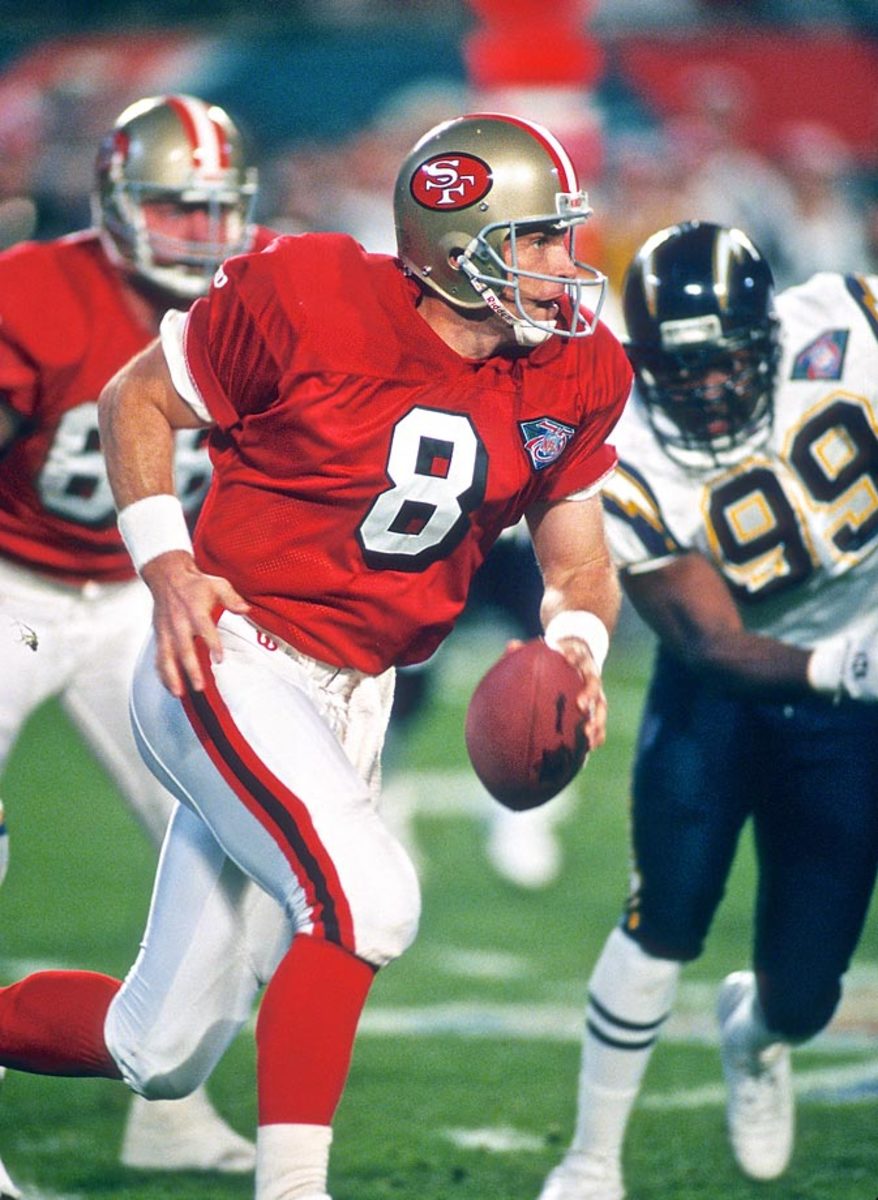
Steve Young threw a Super Bowl-record six touchdown passes against the Chargers.
Super Bowl XXVIII, Jan. 30, 1994: Dallas 30, Buffalo 13, at Atlanta
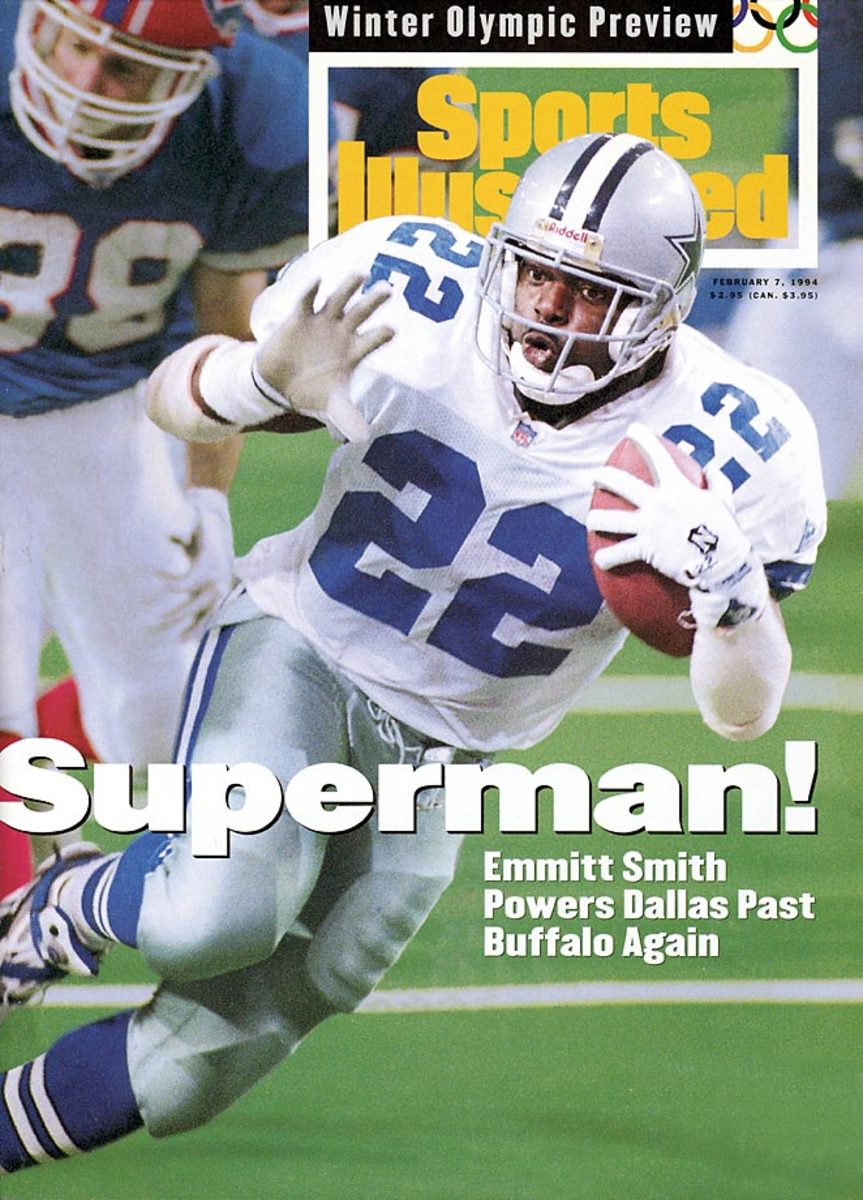
Emmitt Smith helped Dallas dominate the Buffalo Bills in a Super Bowl rematch, rushing for 132 yards and two touchdowns. Smith was named Super Bowl MVP as he and the Dallas Cowboys sent the Bills to their fourth straight Super Bowl defeat, 30-13.
Super Bowl XXVII, Jan. 31, 1993: Dallas 52, Buffalo 17, at Pasadena
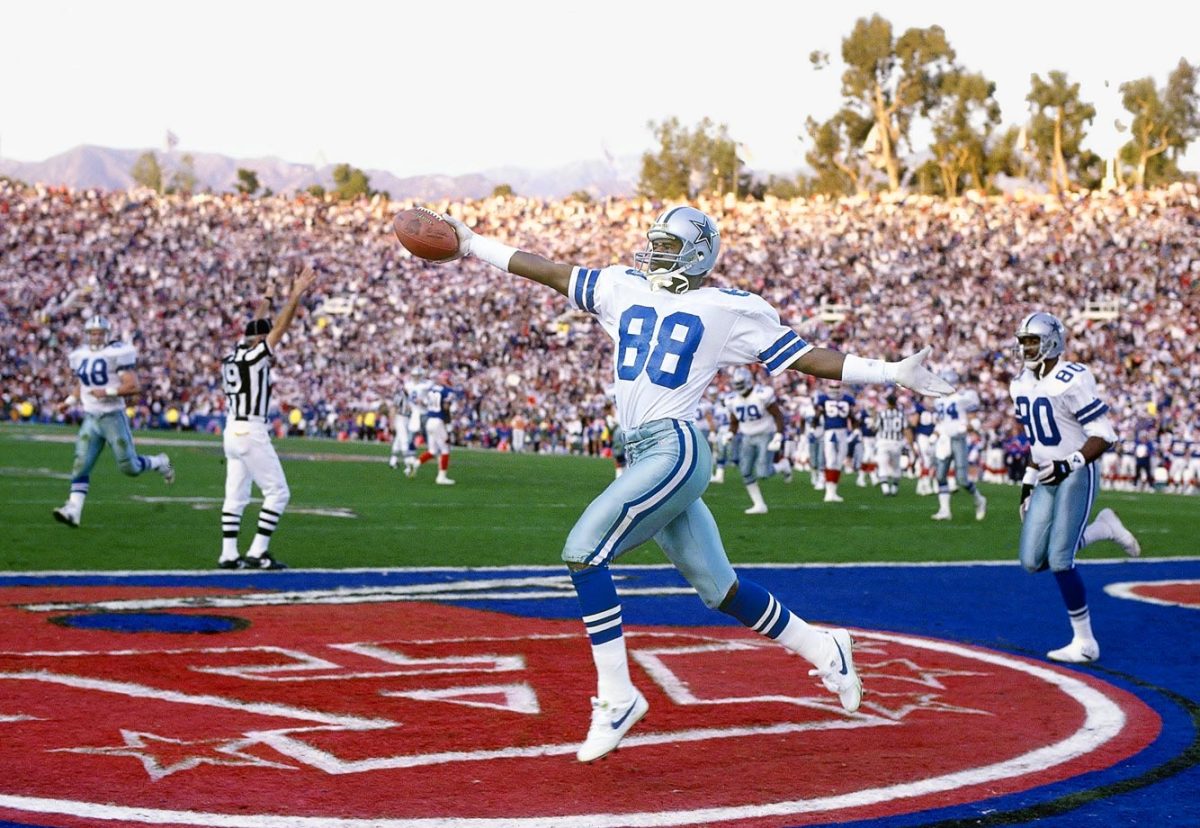
Michael Irvin struts after catching a touchdown pass against Buffalo.
Super Bowl XXVI, Jan. 26, 1992: Washington 37, Buffalo 24, at Minneapolis
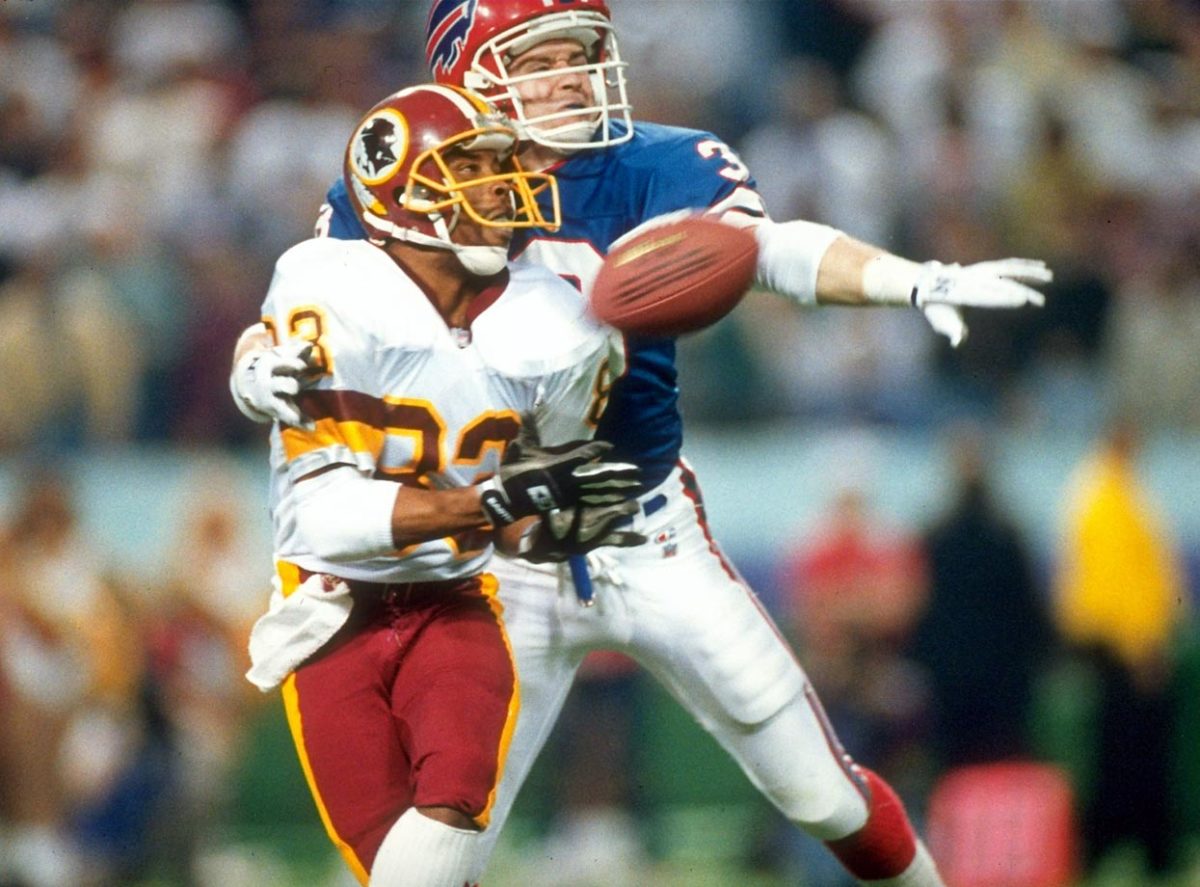
Ricky Sanders makes a catch against Mark Kelso of Buffalo.
Super Bowl XXV, Jan. 27, 1991: N.Y. Giants 20, Buffalo 19, at Tampa
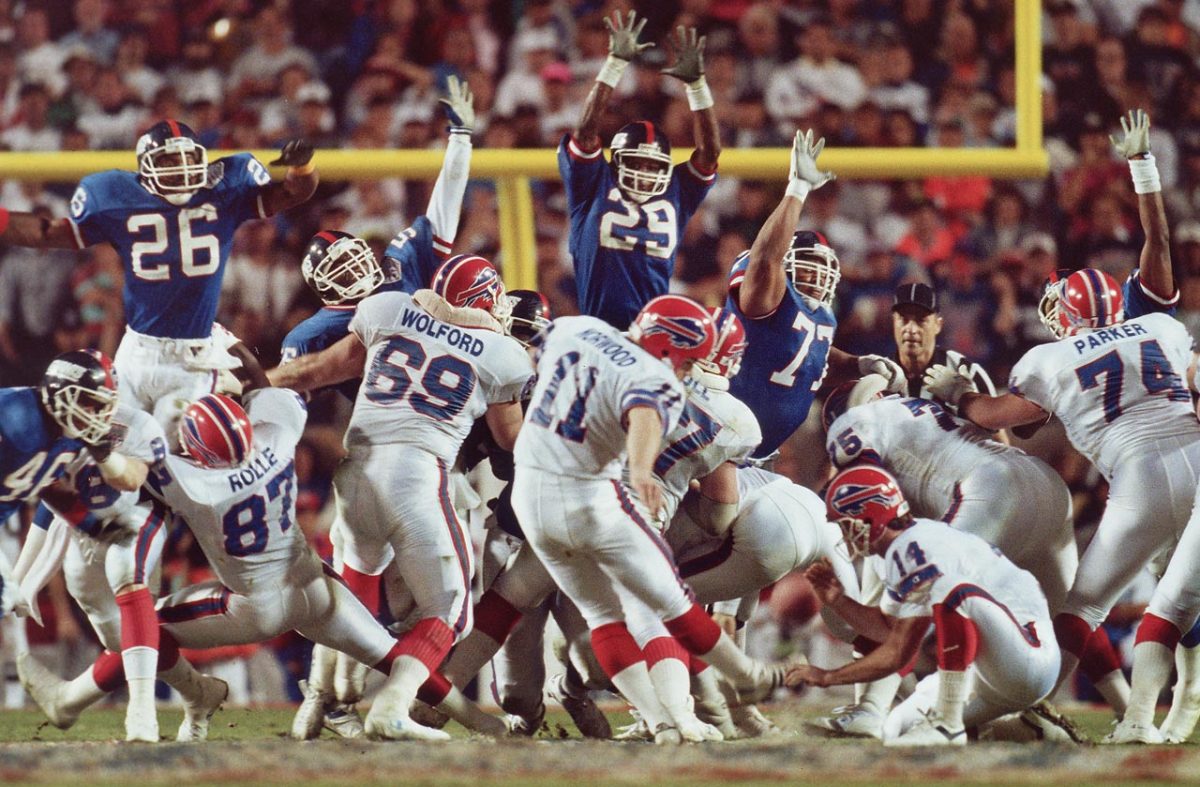
Buffalo Bills kicker Scott Norwood sends his game-winning field goal attempt wide right, securing the New York Giants' 20-19 victory.
Super Bowl XXIV, Jan. 28, 1990: San Francisco 55, Denver 10, at New Orleans
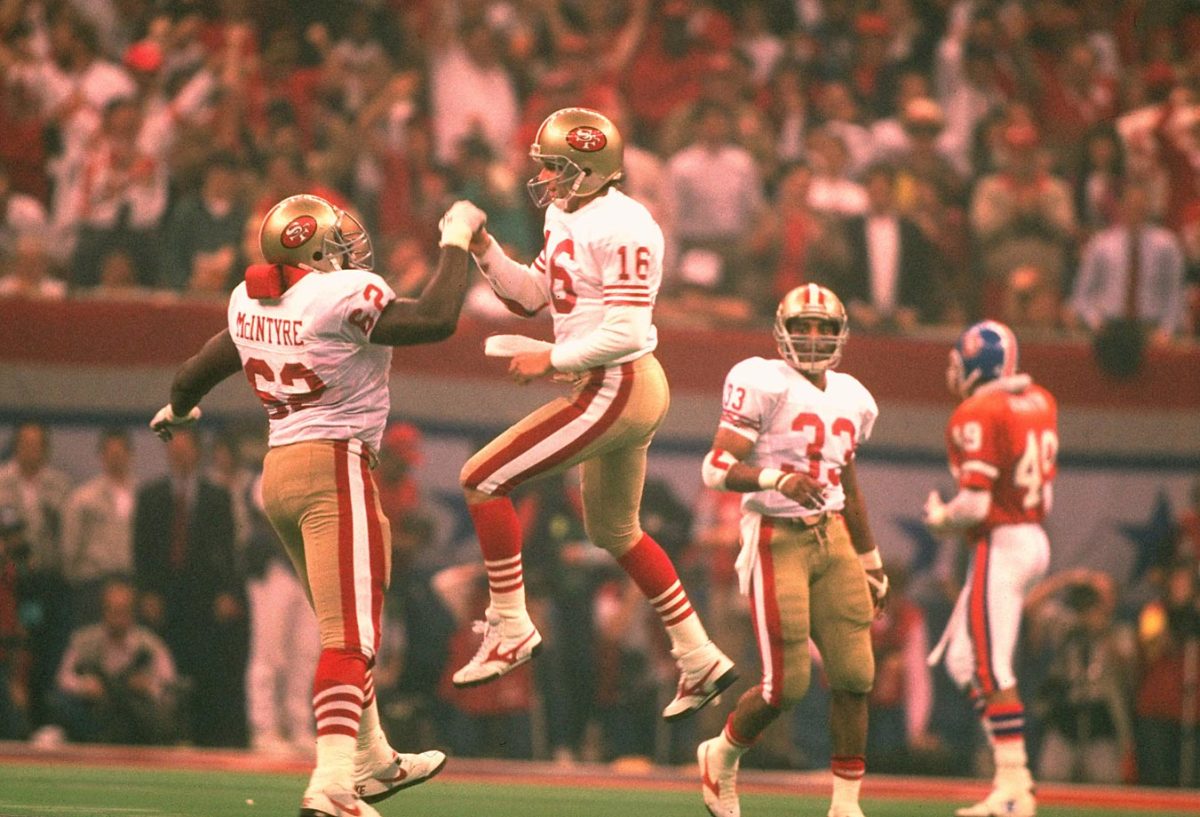
San Francisco quarterback Joe Montana and Guy McIntyre celebrate during their 45 point win over Denver -- the most lopsided in Super Bowl history.
Super Bowl XXIII, Jan. 22, 1989: San Francisco 20, Cincinnati 16, at Miami
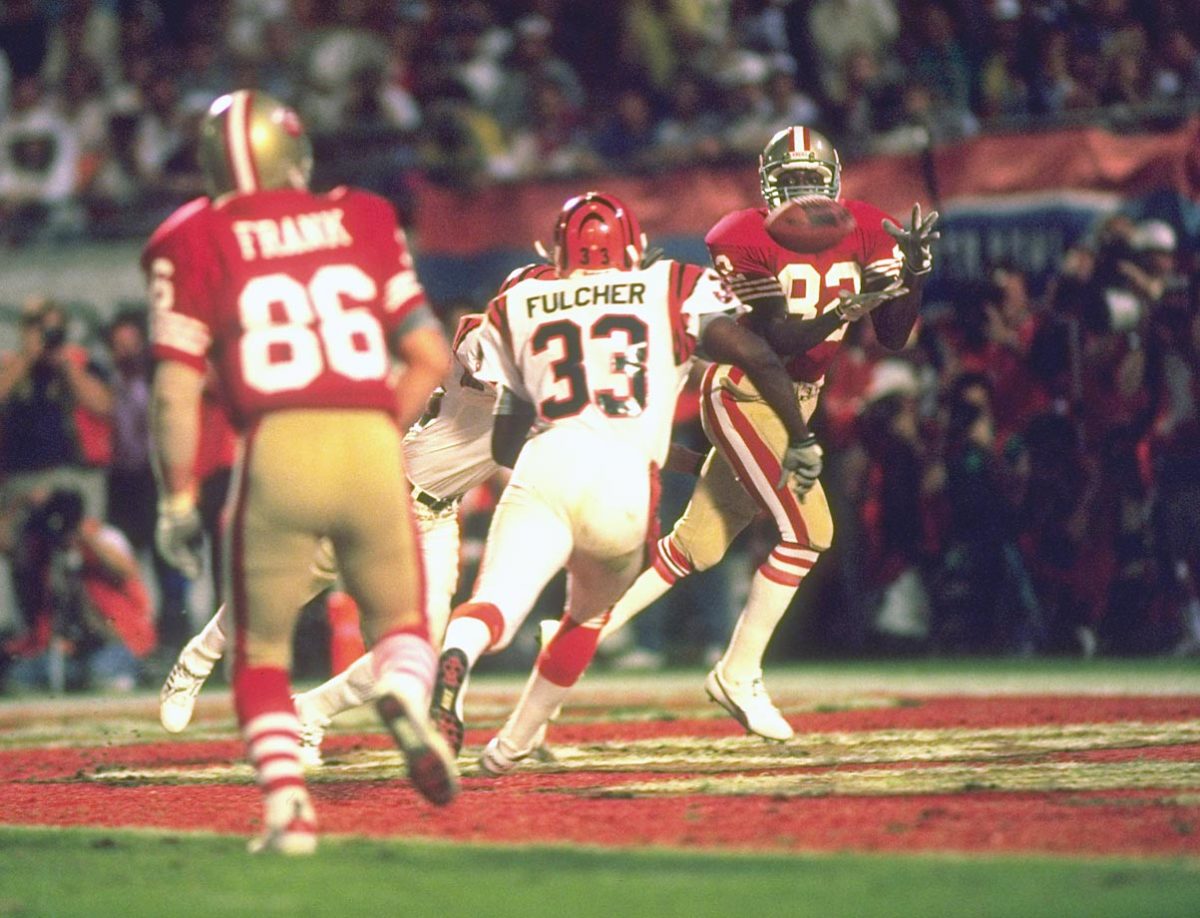
John Taylor catches a 10-yard pass with :34 left for the winning points against the Cincinnati Bengals.
Super Bowl XXII, Jan. 31, 1988: Washington 42, Denver 10, at San Diego
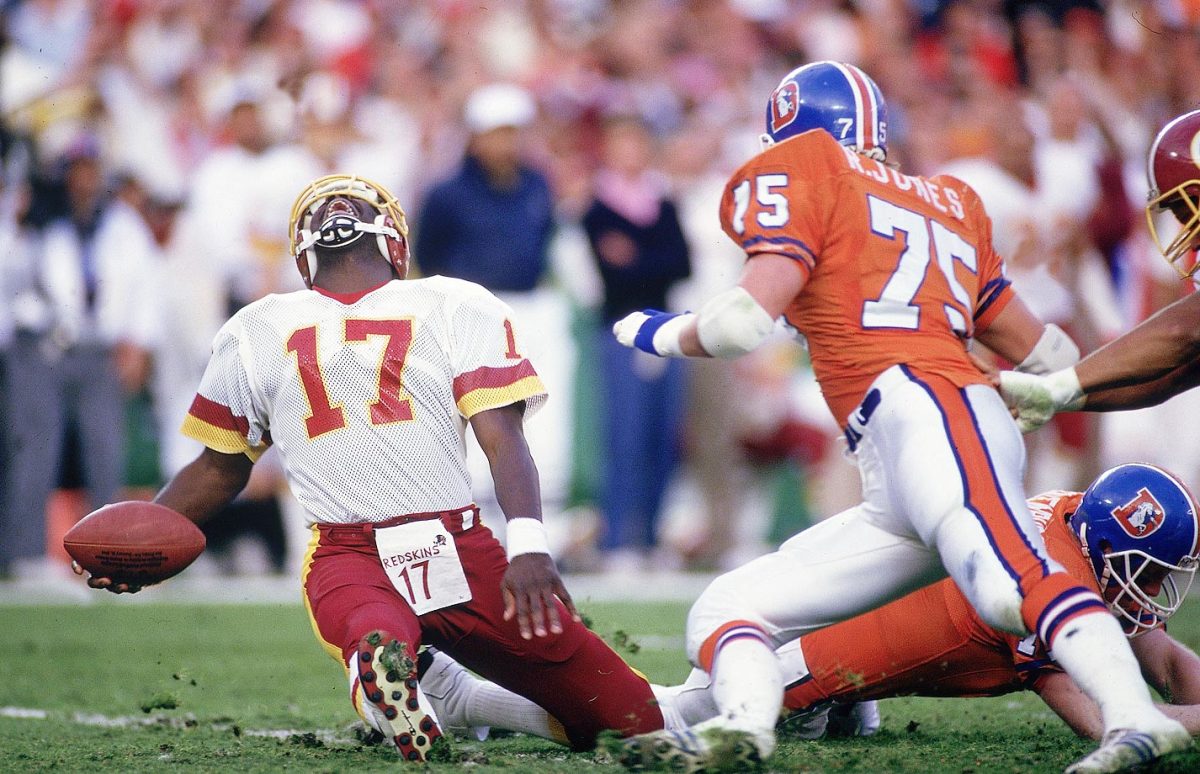
Doug Williams overcame this gruesome hit to finish with four touchdown passes and MVP honors as the Redskins overcame a 10-0 deficit.
Super Bowl XXI, Jan. 25, 1987: N.Y. Giants 39 Denver 20, at Pasadena
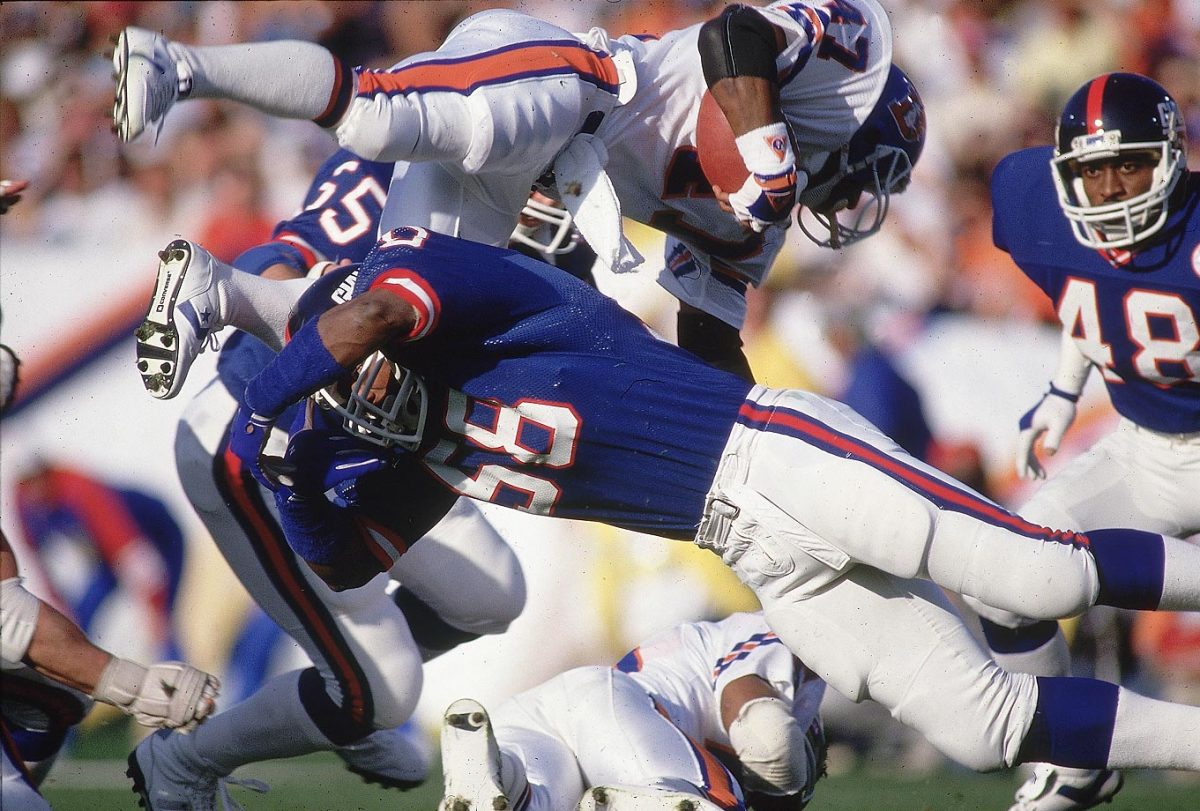
Carl Banks and the New York Giants' Blue Wrecking Crew defense held Gerald Wilhite and the Broncos to 10 second-half points on their way to a 39-20 victory -- the Giants' first ever in a Super Bowl.
Super Bowl XX, Jan. 26, 1986: Chicago 46, New England 10, at New Orleans
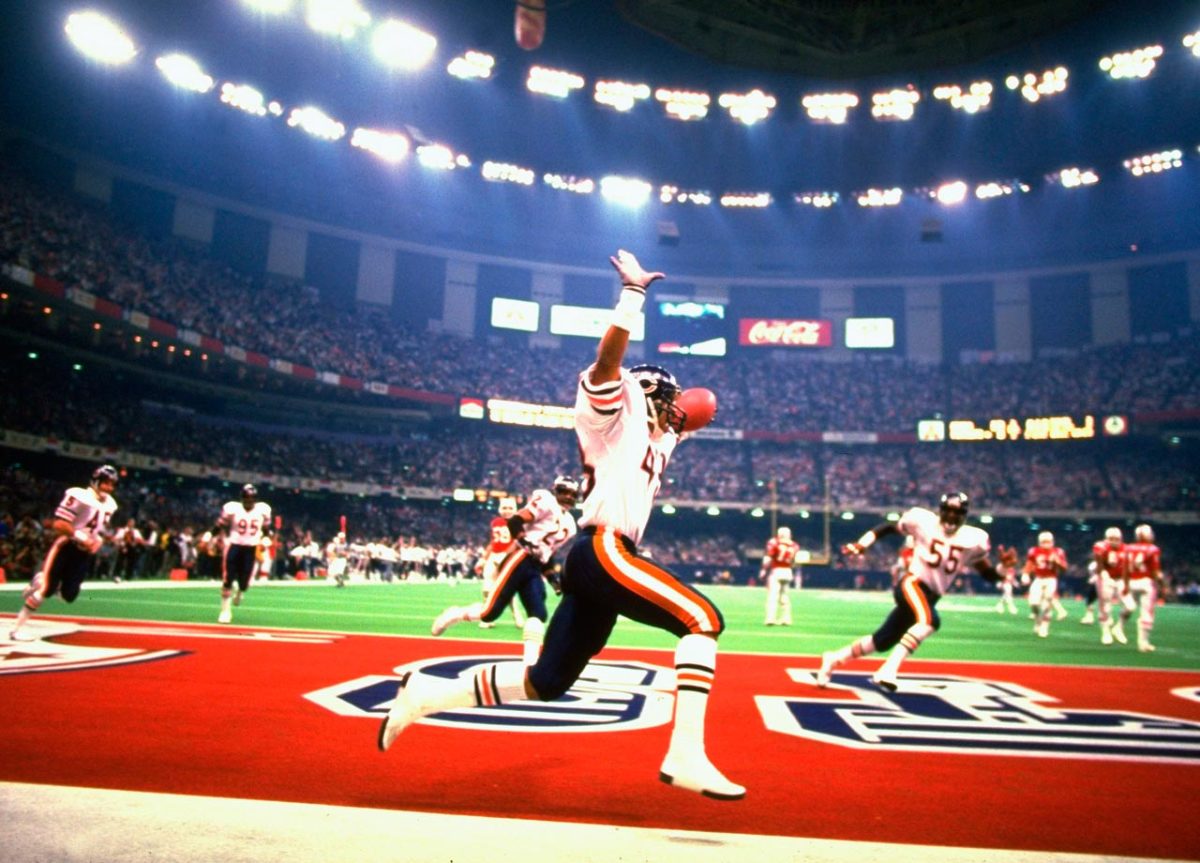
Chicago Bears defensive back Reggie Phillips raises his arms after returning an interception 28 yards for a touchdown against the New England Patriots. The Bears' innovative 46 defense dominated the game, registering seven sacks and allowing just seven rushing yards in the 46-10 win, while directly putting nine points on the board.
Super Bowl XIX, Jan. 20, 1985: San Francisco 38, Miami 16, at Stanford
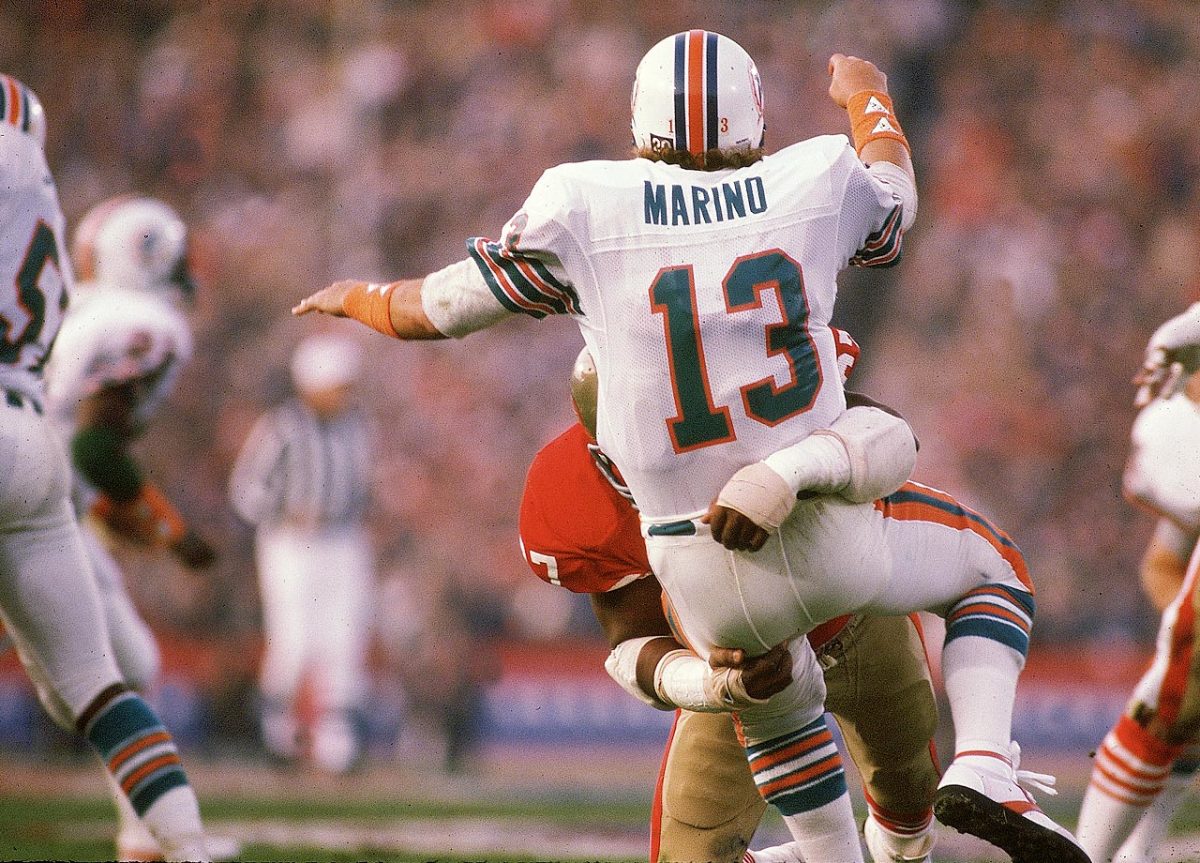
Dan Marino absorbs a big hit from San Francisco 49ers defensive tackle Gary Johnson. Marino completed 29 of 50 passes for 318 yards and a touchdown but his Miami Dolphins fell 38-16.
Super Bowl XVIII, Jan. 22, 1984: L.A. Raiders 38, Washington 9, at Tampa
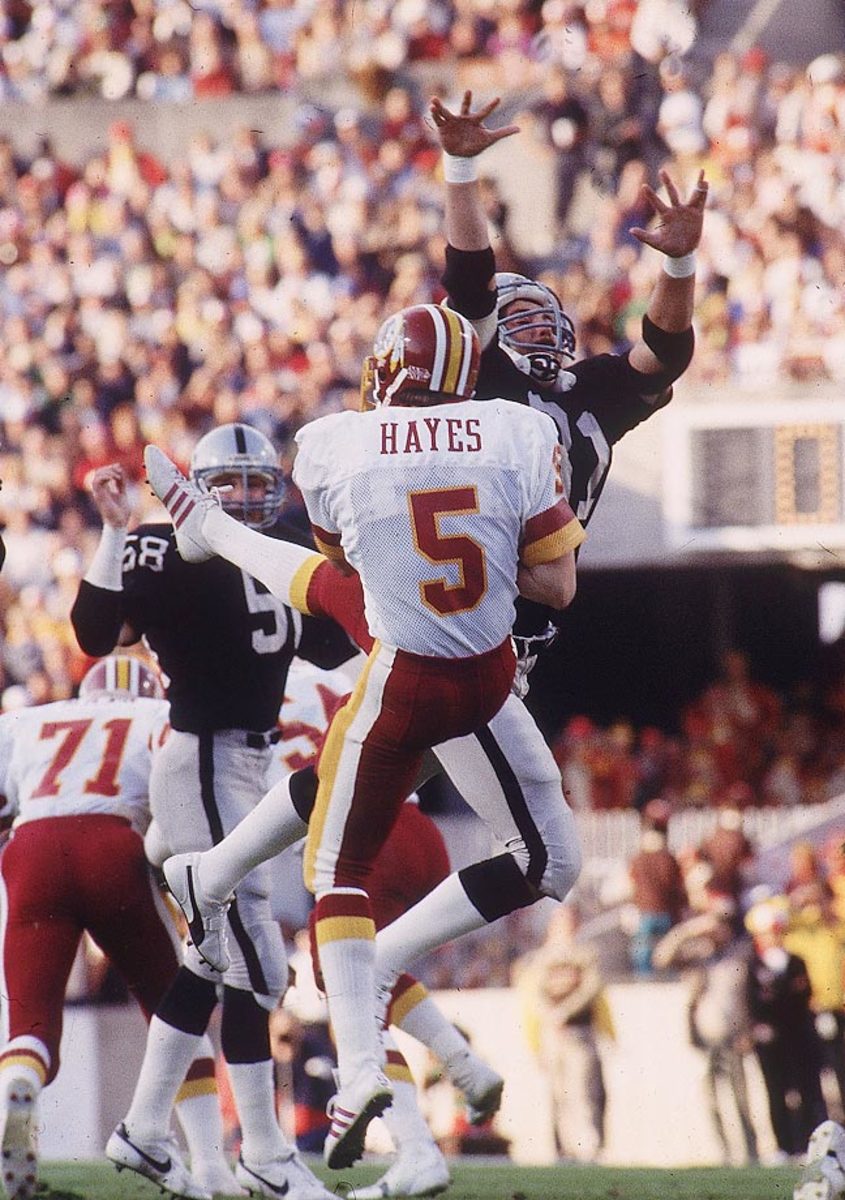
Derrick Jensen of Oakland blocks a punt by Washington's Jeff Hayes during the Raiders' blowout victory.
Super Bowl XVII, Jan. 30, 1983: Washington 27, Miami 17, at Pasadena
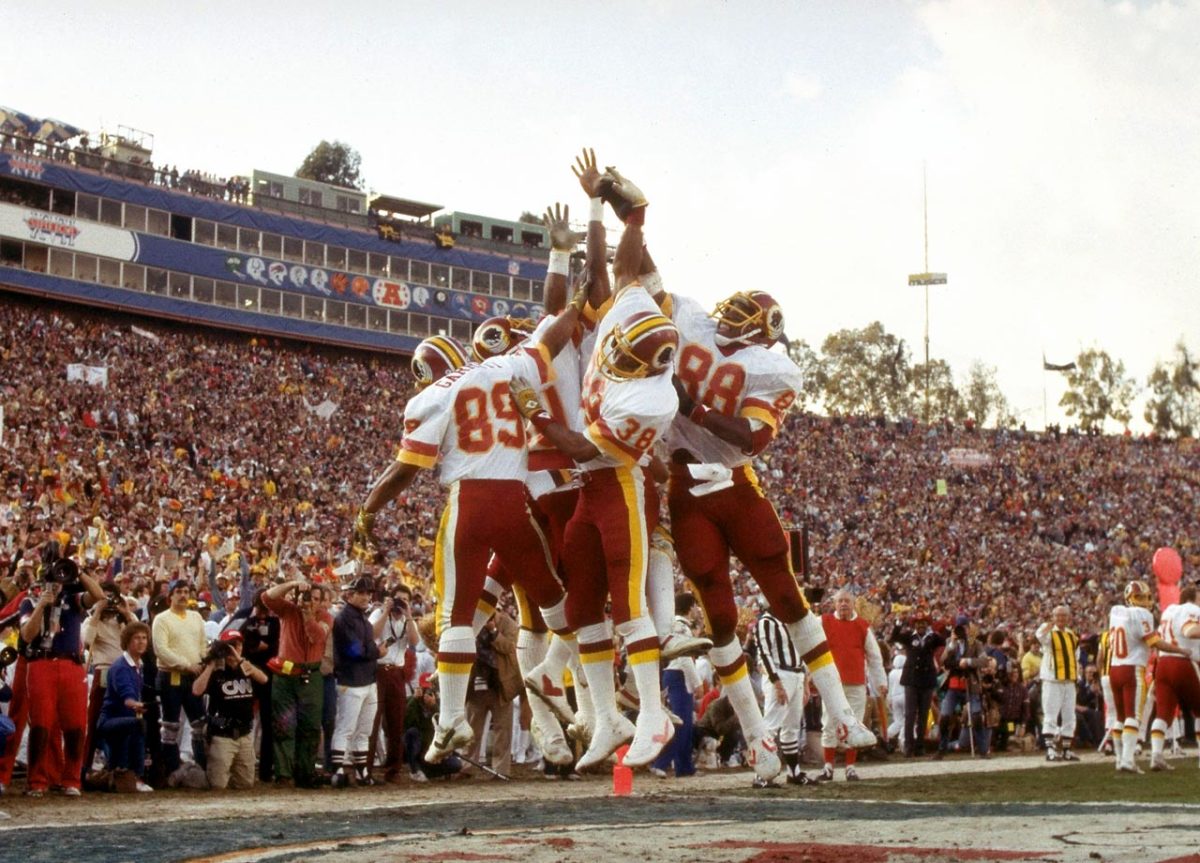
The Smurfs of the Washington Redskins celebrate after a touchdown. Washington scored 17 consecutive points in the second half to defeat the Miami Dolphins 27-17.
Super Bowl XVI, Jan. 24, 1982: San Francisco 26, Cincinnati 21, at Pontiac
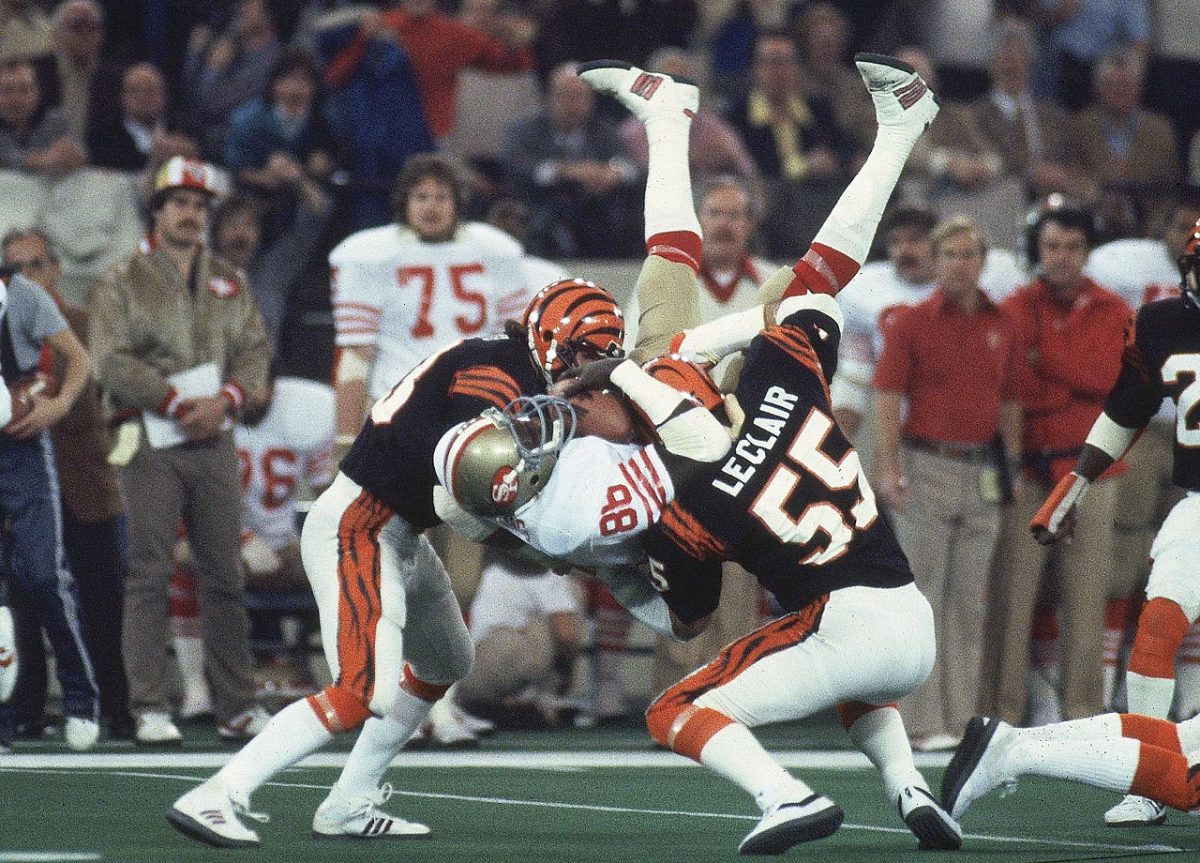
San Francisco 49ers tight end Charles Young hangs on to a pass while being sandwiched between linebacker Jim LeClair and another Cincinnati Bengals defender. Young's grab went for a gain of 14 yards and helped set up the 49ers' first score in their 26-21 victory.
Super Bowl XV, Jan. 25, 1981: Oakland 27, Philadelphia 10, at New Orleans
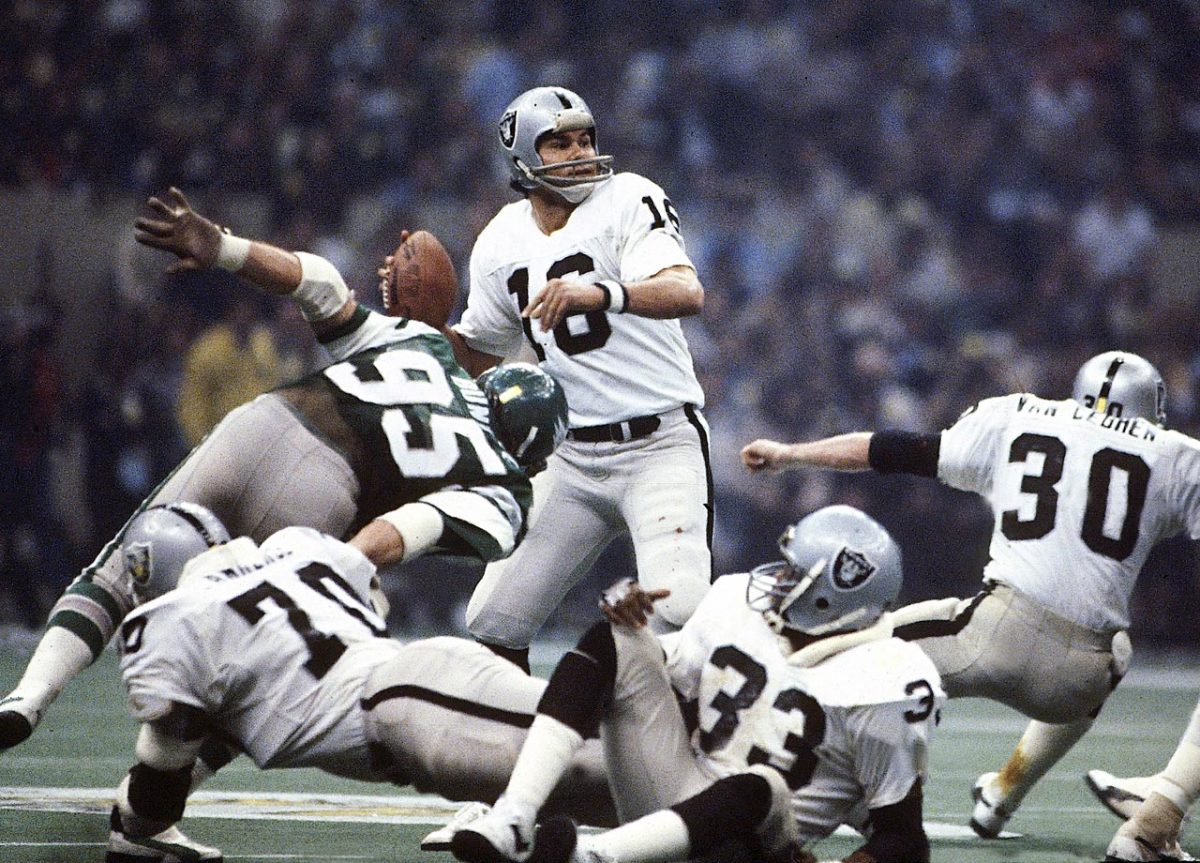
Super Bowl MVP Jim Plunkett looks to pass against the Philadelphia Eagles. Plunkett threw for 261 yards on 13-of-21 passing with three touchdowns to guide the Oakland Raiders to a 27-10 victory.
Super Bowl XIV, Jan. 20, 1980: Pittsburgh 31, L.A. Rams 19, at Pasadena
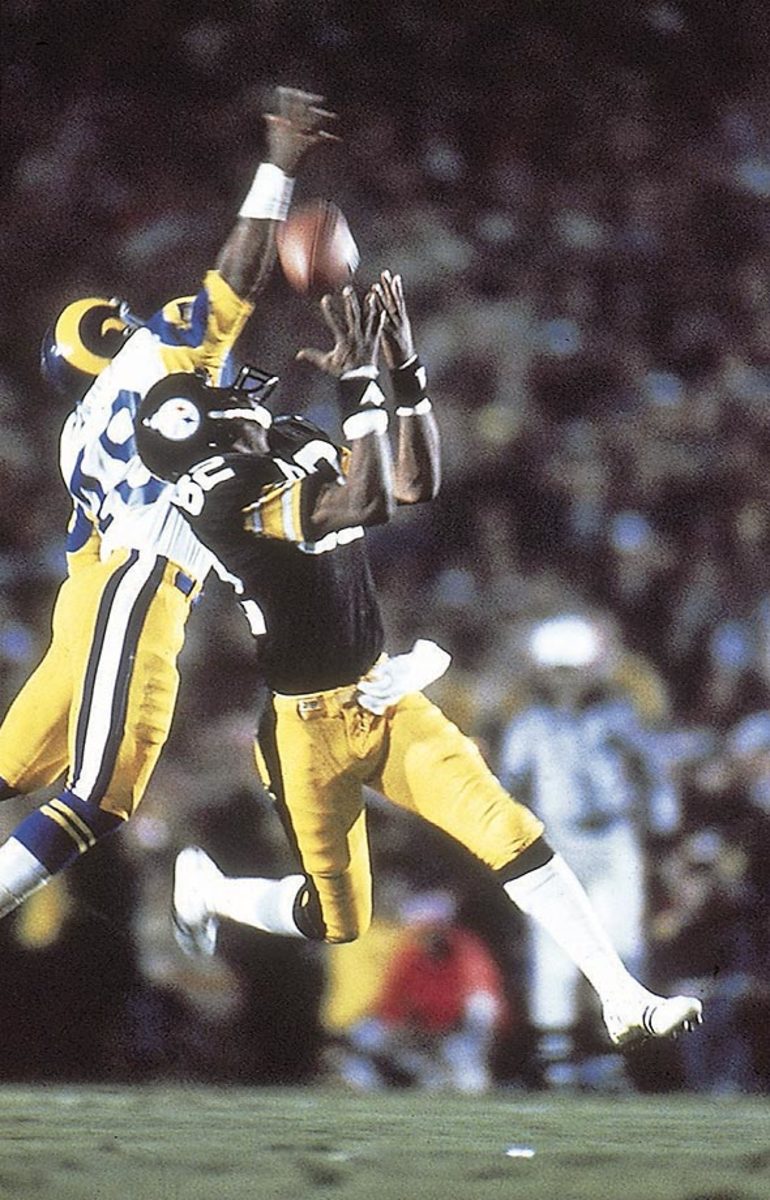
Pittsburgh Steelers wide receiver John Stallworth hauls in a pass from Terry Bradshaw just beyond the outstretched fingers of Los Angeles Rams cornerback Rod Perry. Stallworth took the pass 73 yards to the end zone to give the Steelers the lead for good in their 31-19 win.
Super Bowl XIII, Jan. 21, 1979: Pittsburgh 35, Dallas 31, at Miami
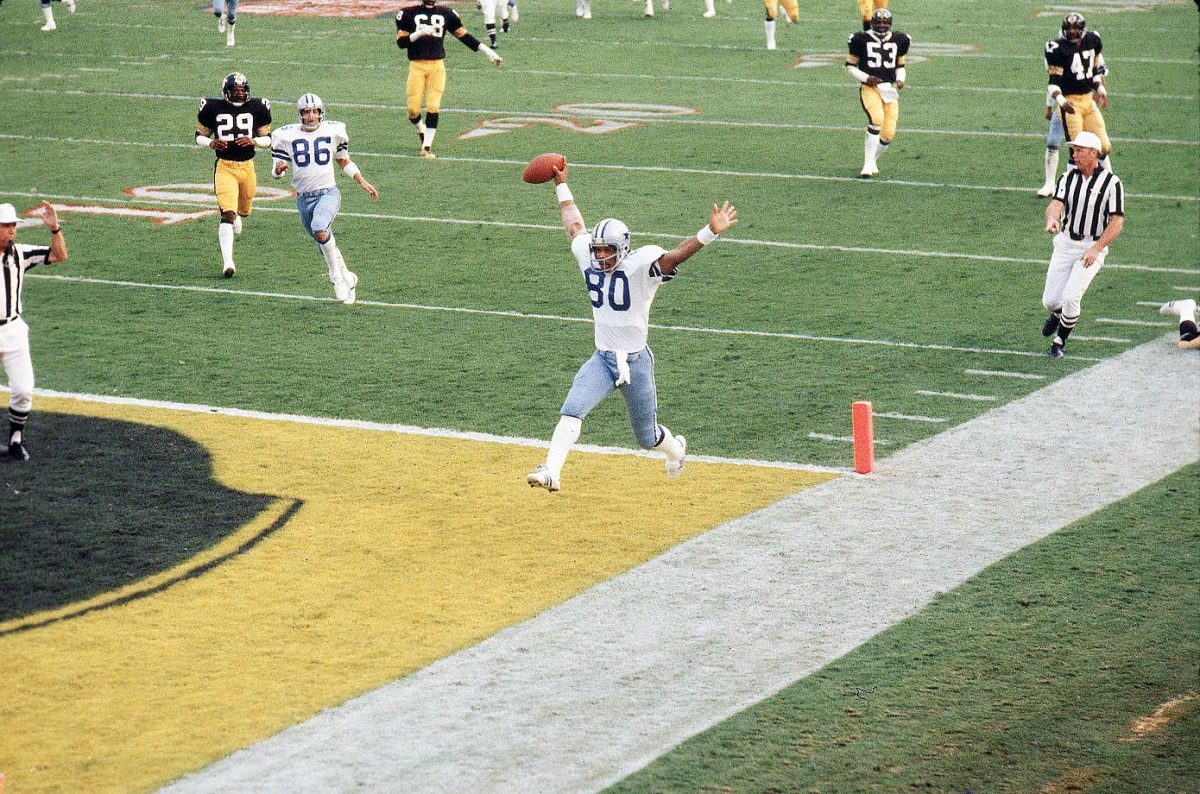
Tony Hill scores a touchdown aganst the Pittsburgh Steelers.
Super Bowl XII, Jan. 15, 1978: Dallas 27, Denver 10, at New Orleans
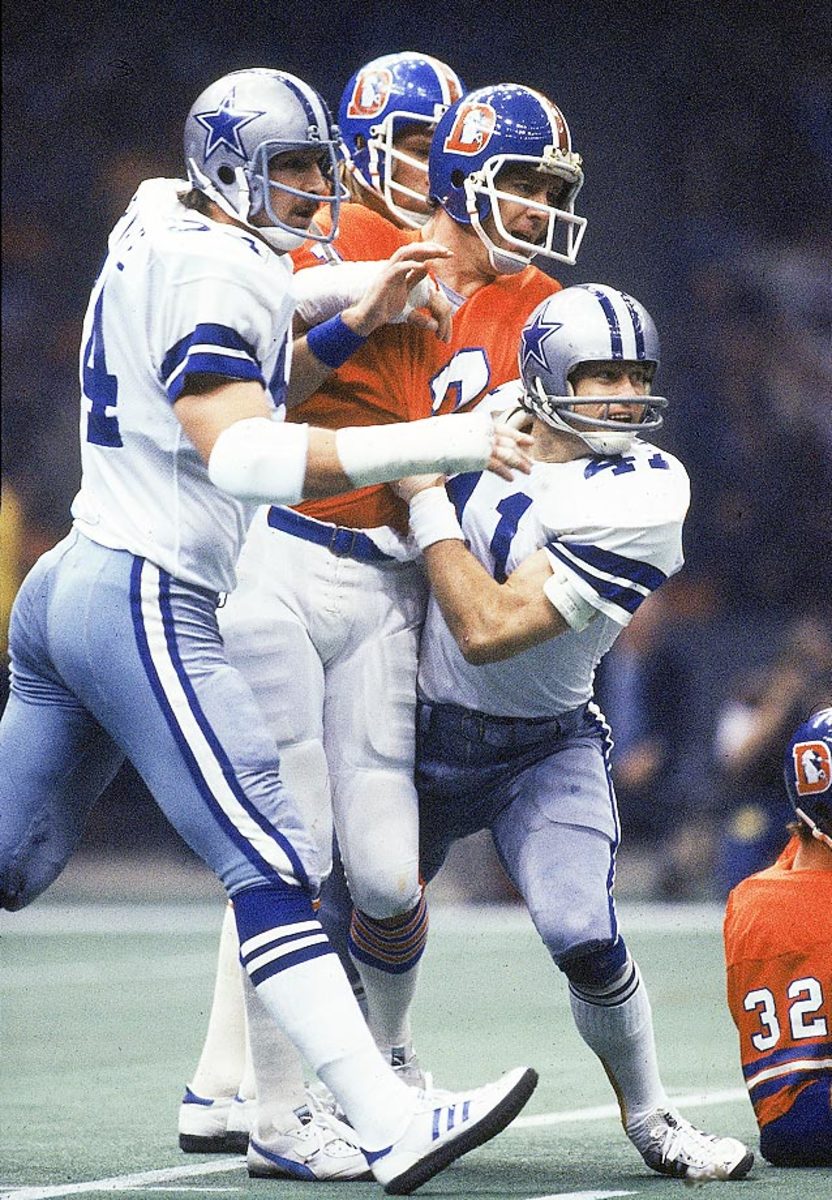
Randy White (54) and Charlie Waters (41) ease up after having pressured Denver quarterback Craig Morton. White shared MVP honors with teammate Harvey Martin, which marked the first time a defensive lineman was named Super Bowl MVP.
Super Bowl XI, Jan. 9, 1977: Oakland 32, Minnesota 14, at Pasadena
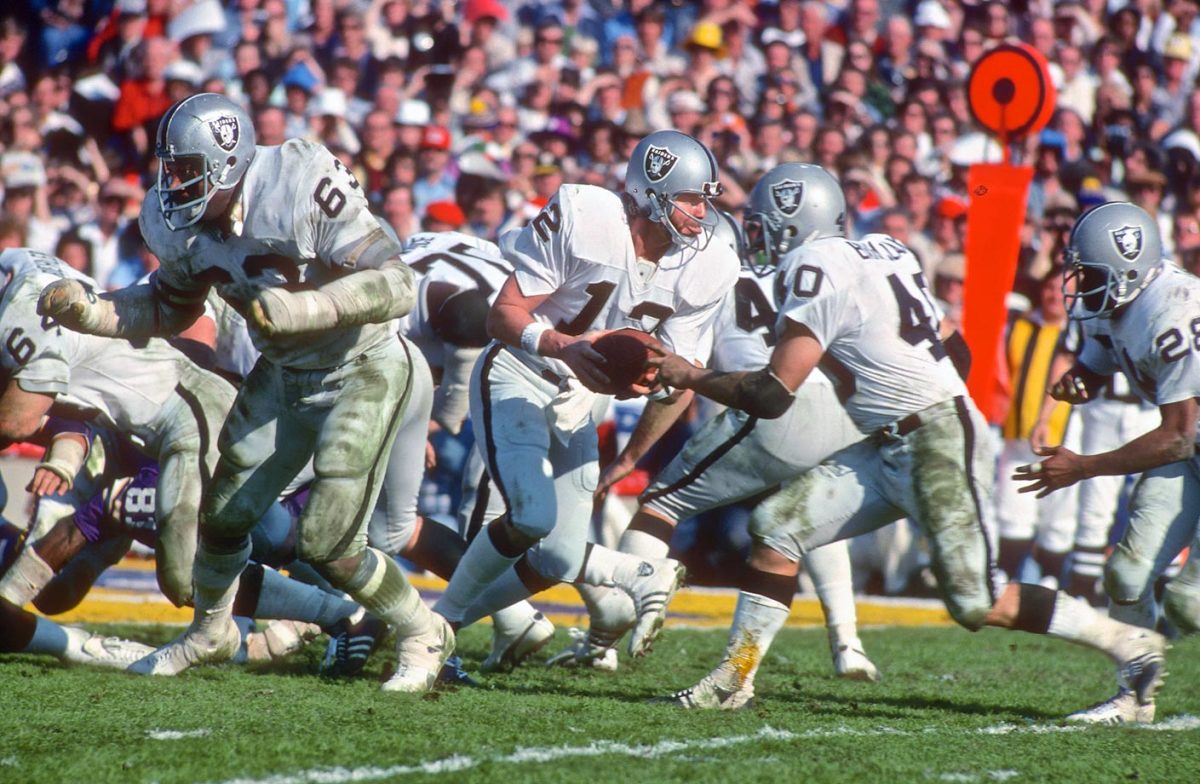
Oakland's offense had a field day with the Vikings, setting a Super Bowl record with 429 yards of offense in the 32-14 win.
Super Bowl X, Jan. 18, 1976: Pittsburgh 21, Dallas 17, at Miami
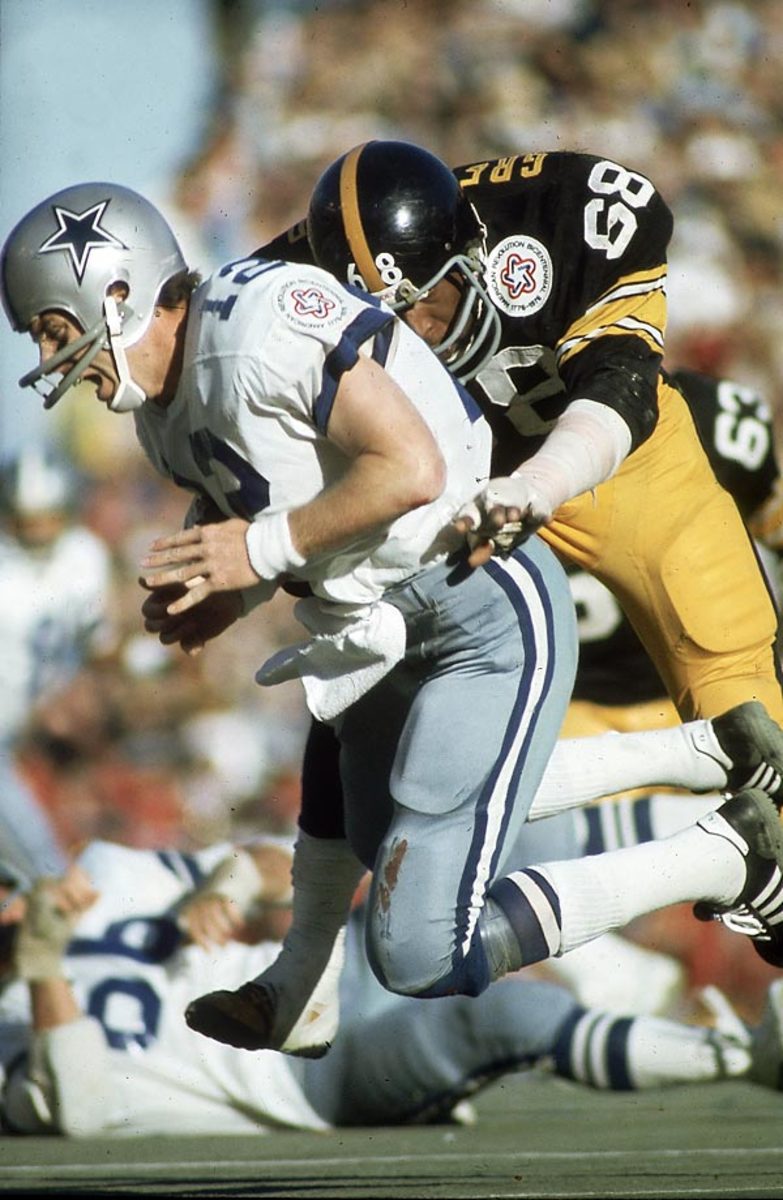
Pittsburgh Steelers defensive end L.C. Greenwood takes down Dallas Cowboys quarterback Roger Staubach. The Steelers' intimidating defense forced Staubach into three interceptions and sacked him seven times during Pittsburgh's 21-17 win.
Super Bowl IX, Jan. 12, 1975: Pittsburgh 16, Minnesota 6, at New Orleans
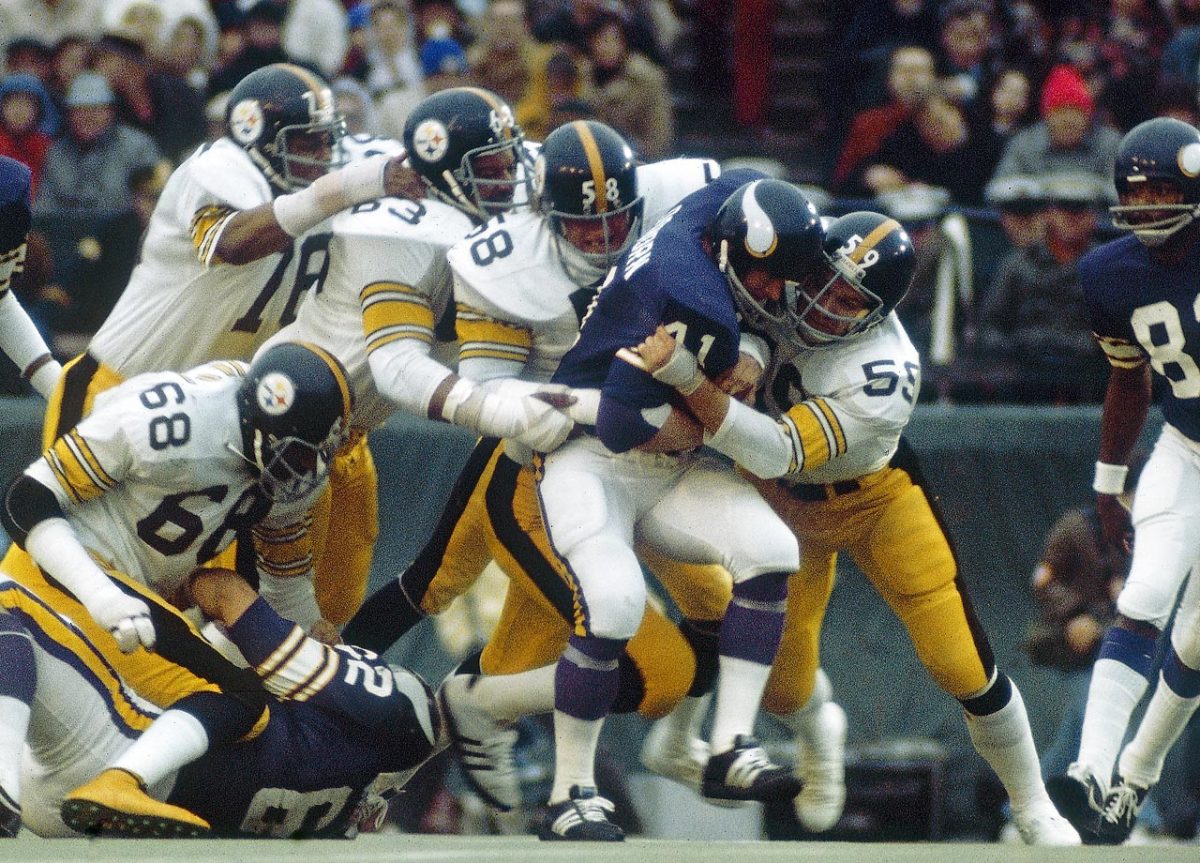
Jack Ham, Jack Lambert, Ernie Holmes and Dwight White of Pittsburgh's Steel Curtain defense swarm to Minnesota Vikings fullback Dave Osborn. Pittsburgh limited Minnesota to just 119 total offensive yards.
Super Bowl VIII, , Jan. 13, 1974: Miami 24, Minnesota 7, at Houston
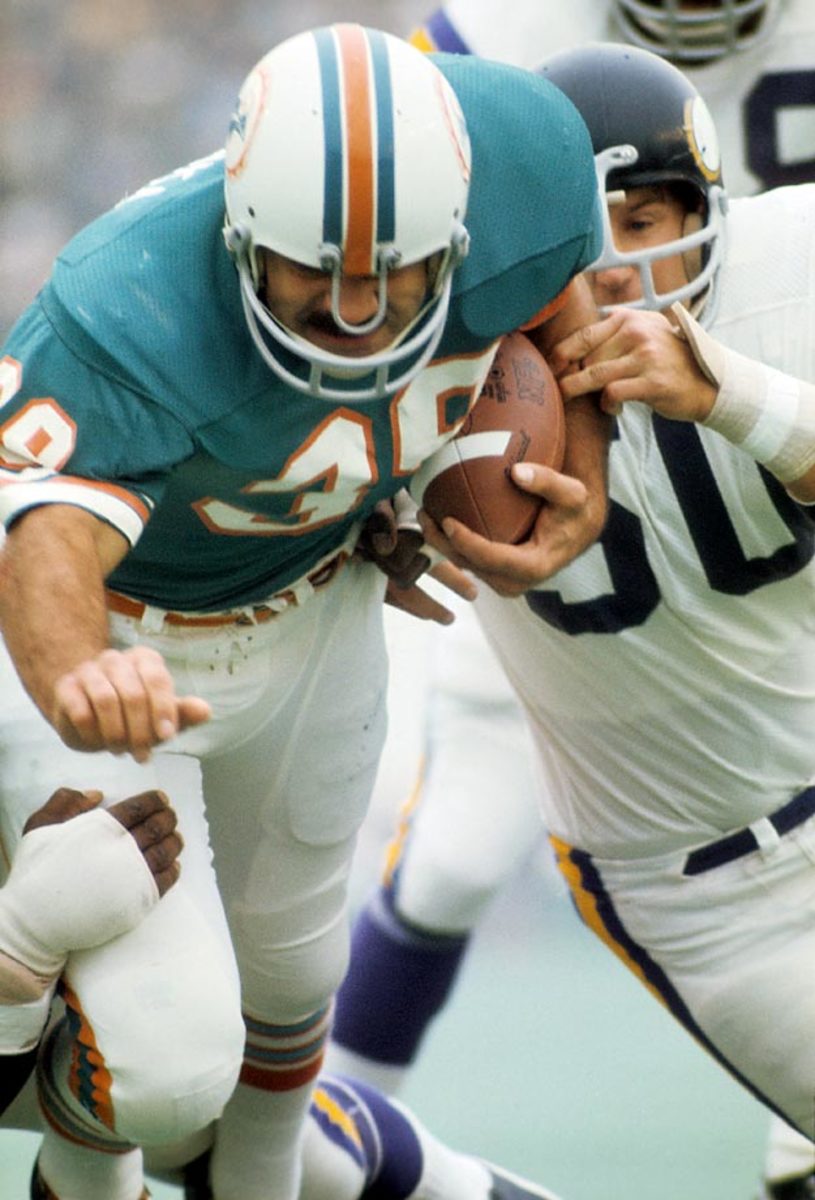
Larry Csonka bulldozed his way to a record 145 yards rushing on 33 carries against the Vikings en route to becoming the first running back to be named Super Bowl MVP.
Super Bowl VII, Jan. 14, 1973: Miami 14, Washington 7, at Los Angeles
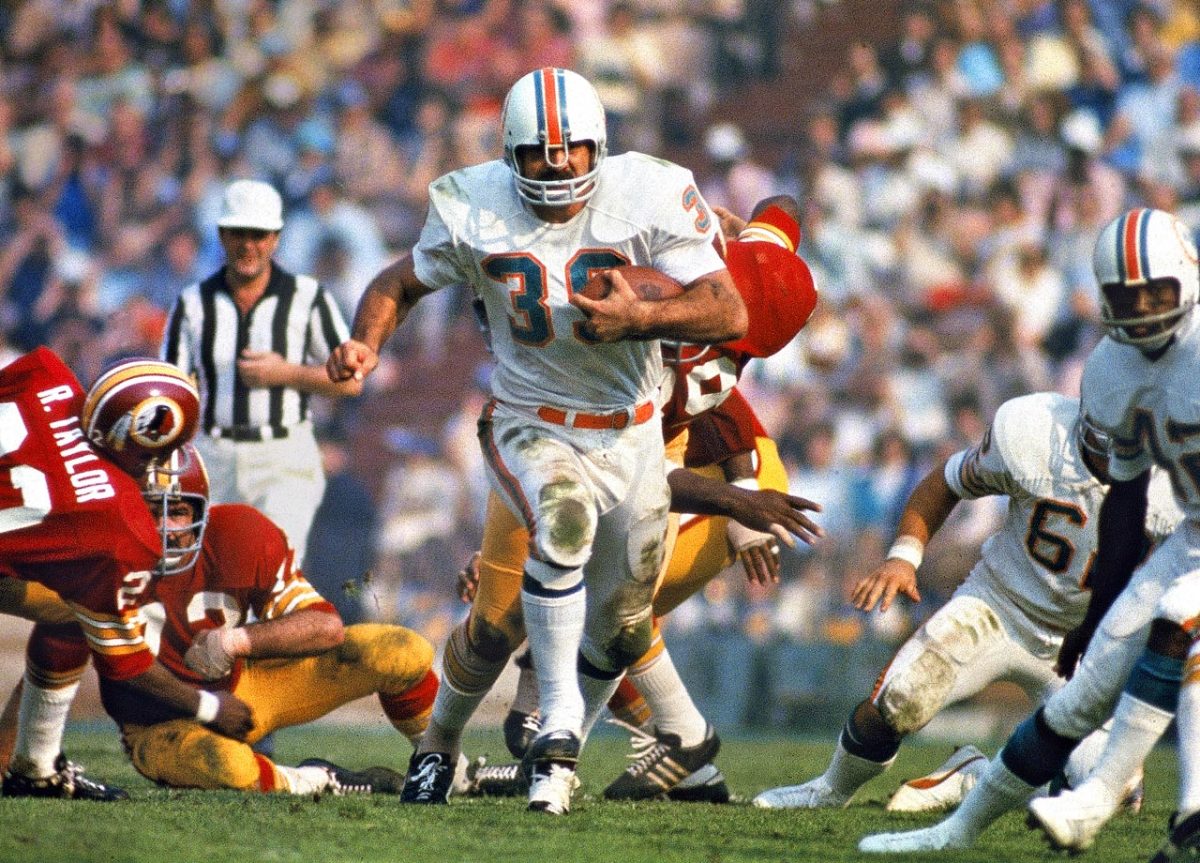
Miami Dolphins fullback Larry Csonka charges up the middle against the Washington Redskins. Csonka tallied 112 yards rushing on 15 carries to lead all rushers and spark Miami's 14-7 triumph.
Super Bowl VI, Jan. 16, 1972: Dallas 24, Miami 3, at New Orleans
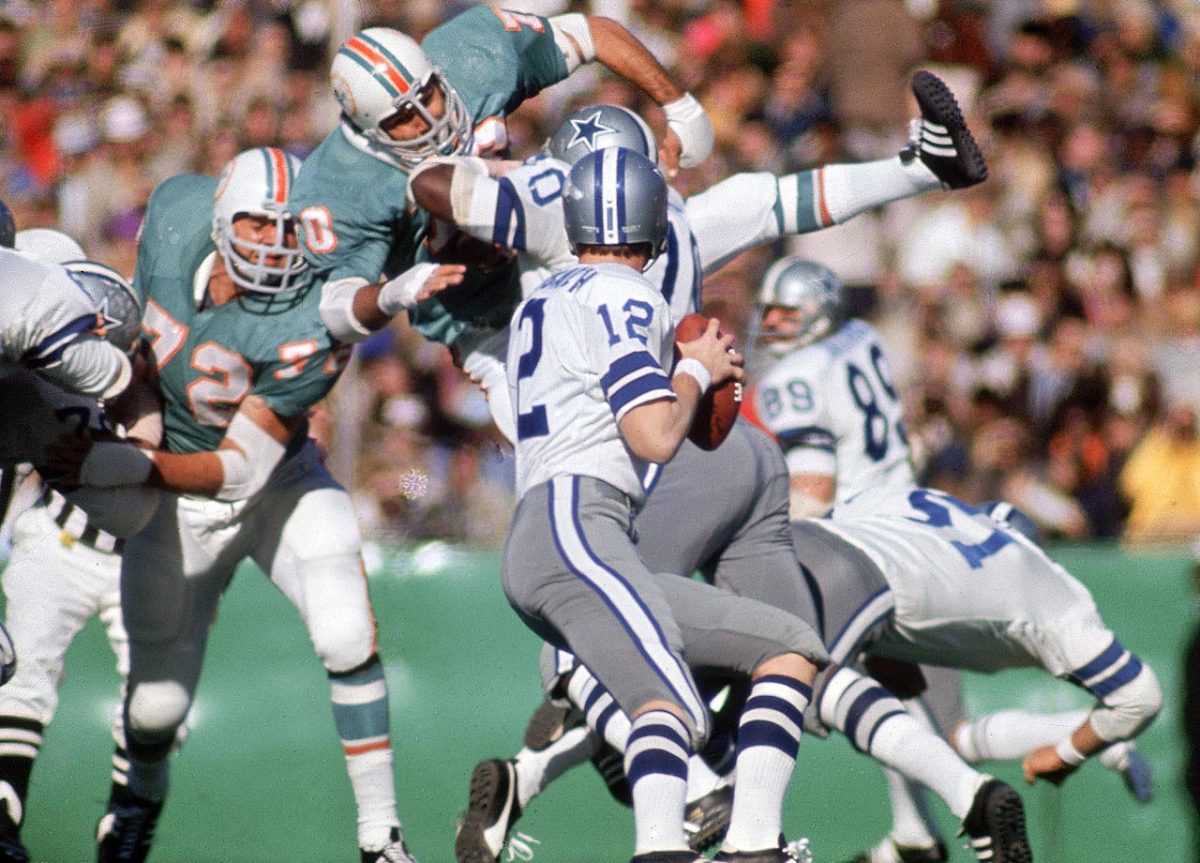
Roger Staubach sets to pass against the Miami Dolphins. Although the Dallas Cowboys quarterback was outdueled by the Dolphins' Bob Griese in passing yards, Staubach claimed the more important victory, snapping the Cowboys' reputation for being unable to win important playoff games.
Super Bowl V, Jan. 17, 1971: Baltimore 16, Dallas 13, at Miami
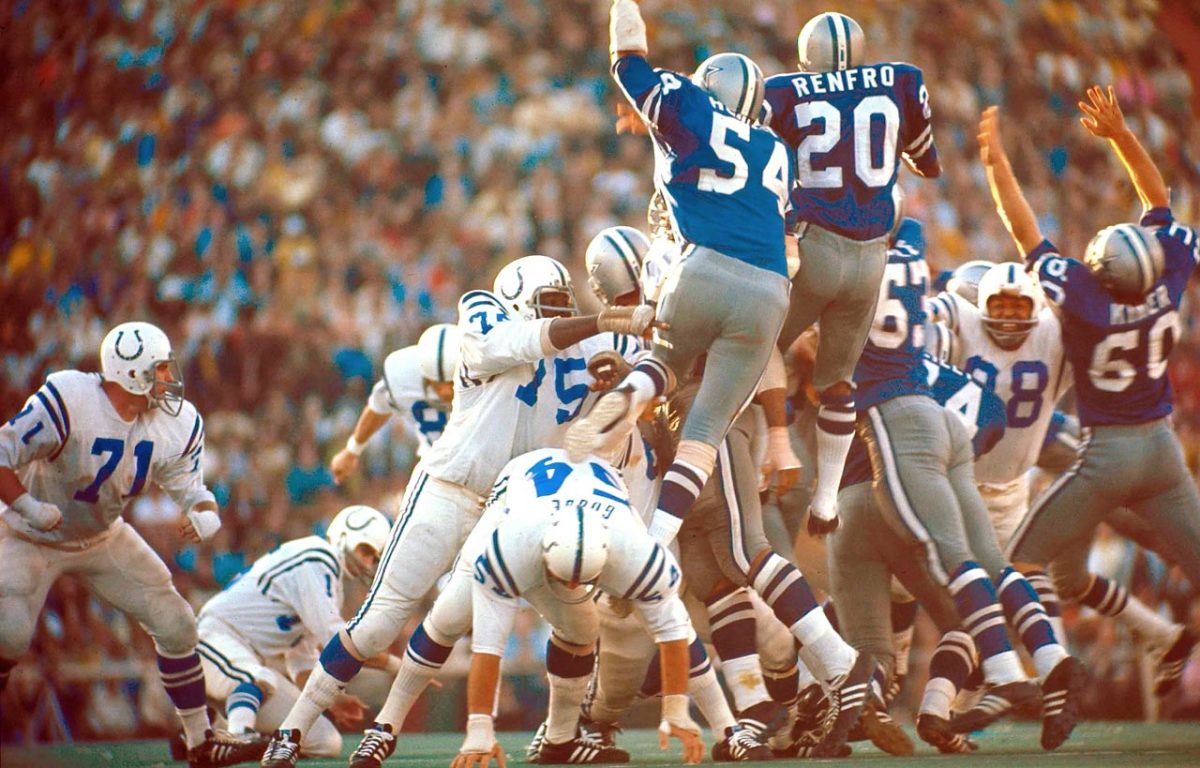
Baltimore Colts rookie kicker Jim O'Brien boots a game-winning field goal with five seconds left over the outstretched arms of the Dallas Cowboys rush. O'Brien's field goal delivered the championship to Baltimore and broke a 13-13 tie.
Super Bowl IV, Jan. 11, 1970: Kansas City 23, Minnesota 7, at New Orleans
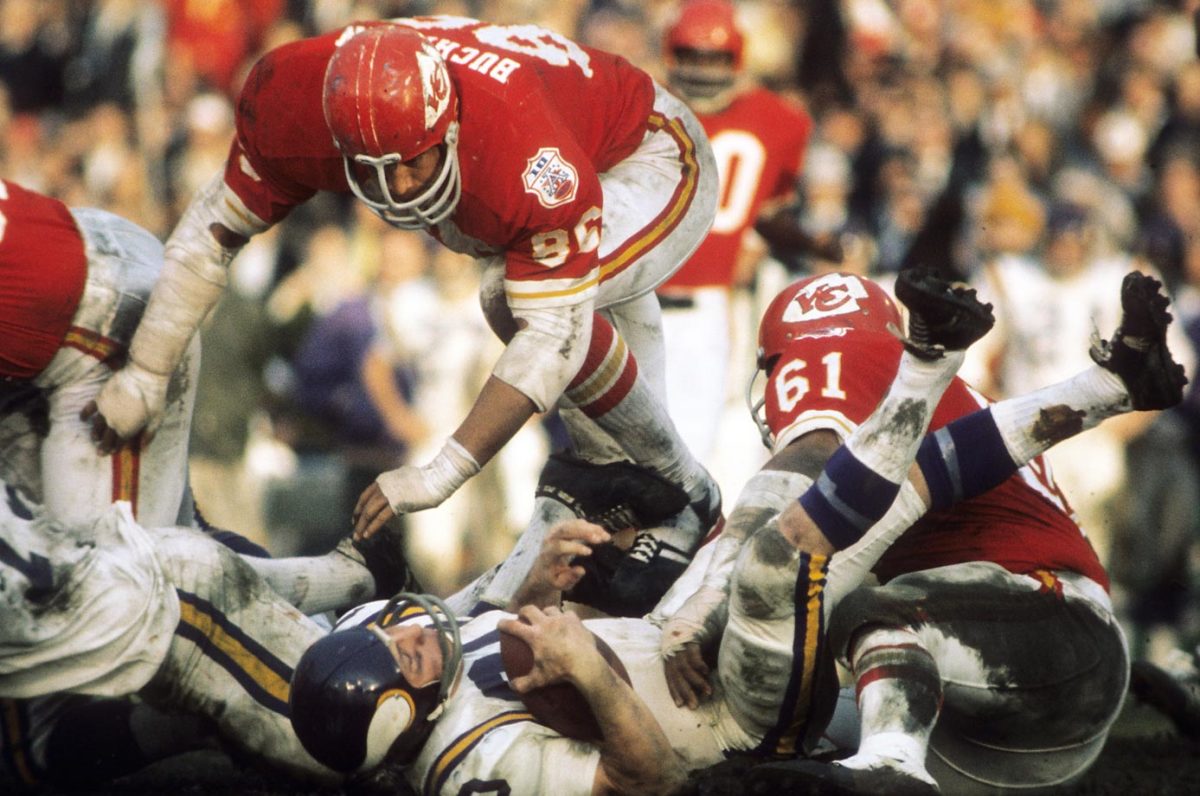
The Kansas Chiefs defense recovered two fumbles, made three interceptions and held the Minnesota Vikings to 67 yards rushing (172 passing), thanks in part to Buck Buchanan (86) and Curley Culp (61).
Super Bowl III, Jan. 12, 1969: New York Jets 16, Baltimore 7, at Miami
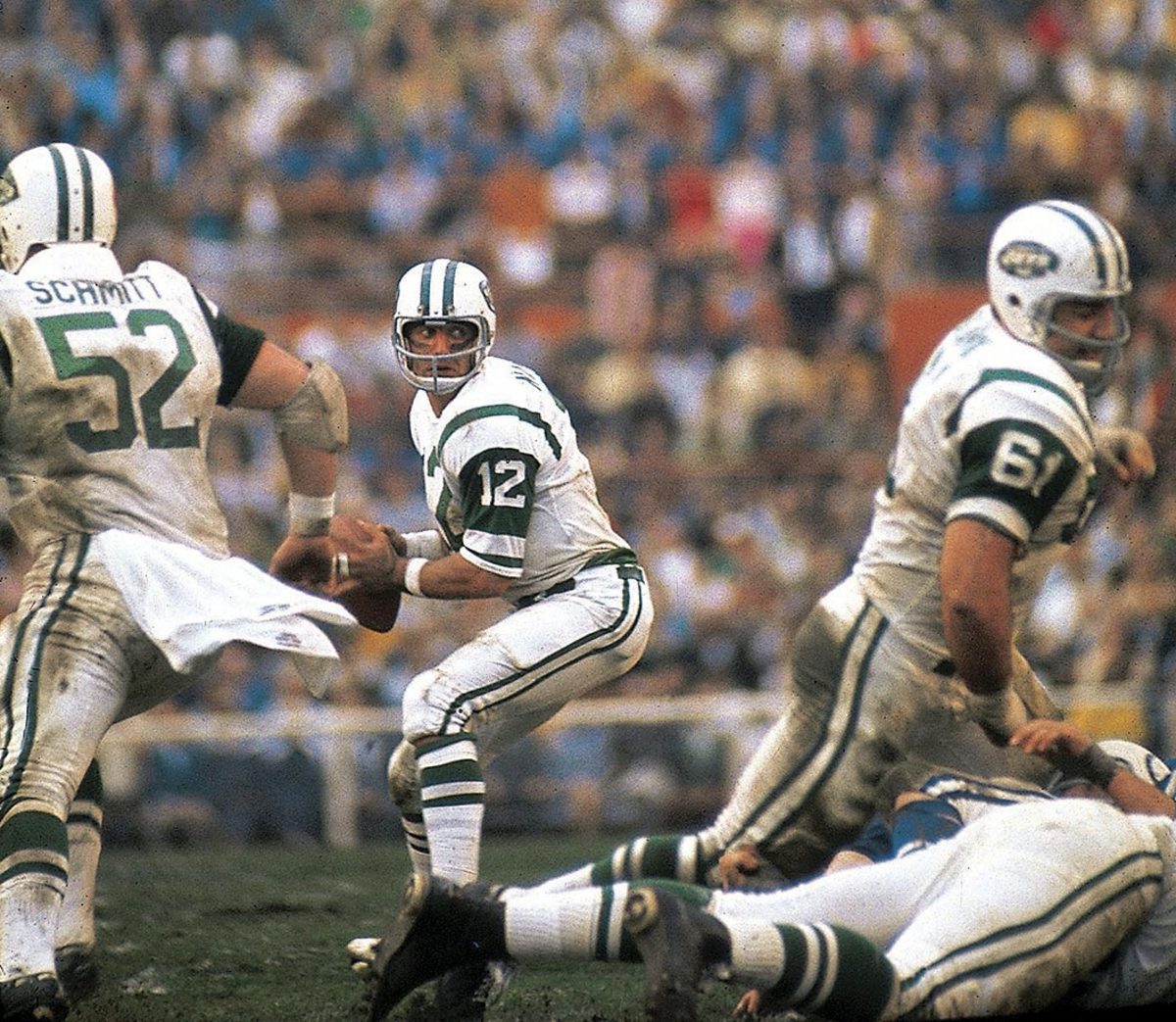
New York Jets quarterback Joe Namath looks downfield to pass against the Baltimore Colts. Broadway Joe's team backed up his victory guarantee as New York upset the heavily favored Colts 16-7. Namath completed 17 of 28 passes for 206 yards and was named Super Bowl MVP.
Super Bowl II, Jan. 14, 1968: Green Bay 33, Oakland 14, at Miami
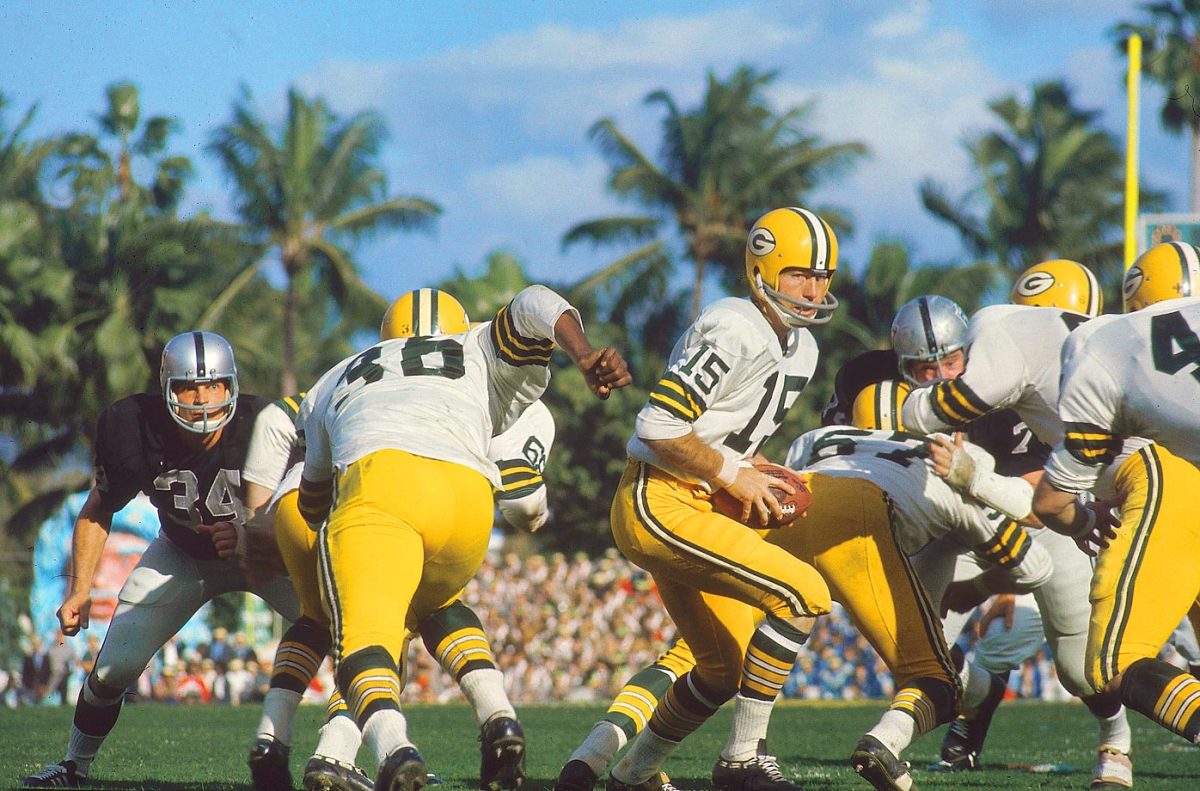
Two weeks after defeating the Dallas Cowboys in the waning seconds of the Ice Bowl, Bart Starr and the Packers got past Oakland with ease in Super Bowl II, 33-14. Starr was again the MVP.
Super Bowl I, Jan. 15, 1967: Green Bay 35, Kansas City 10, at Los Angeles
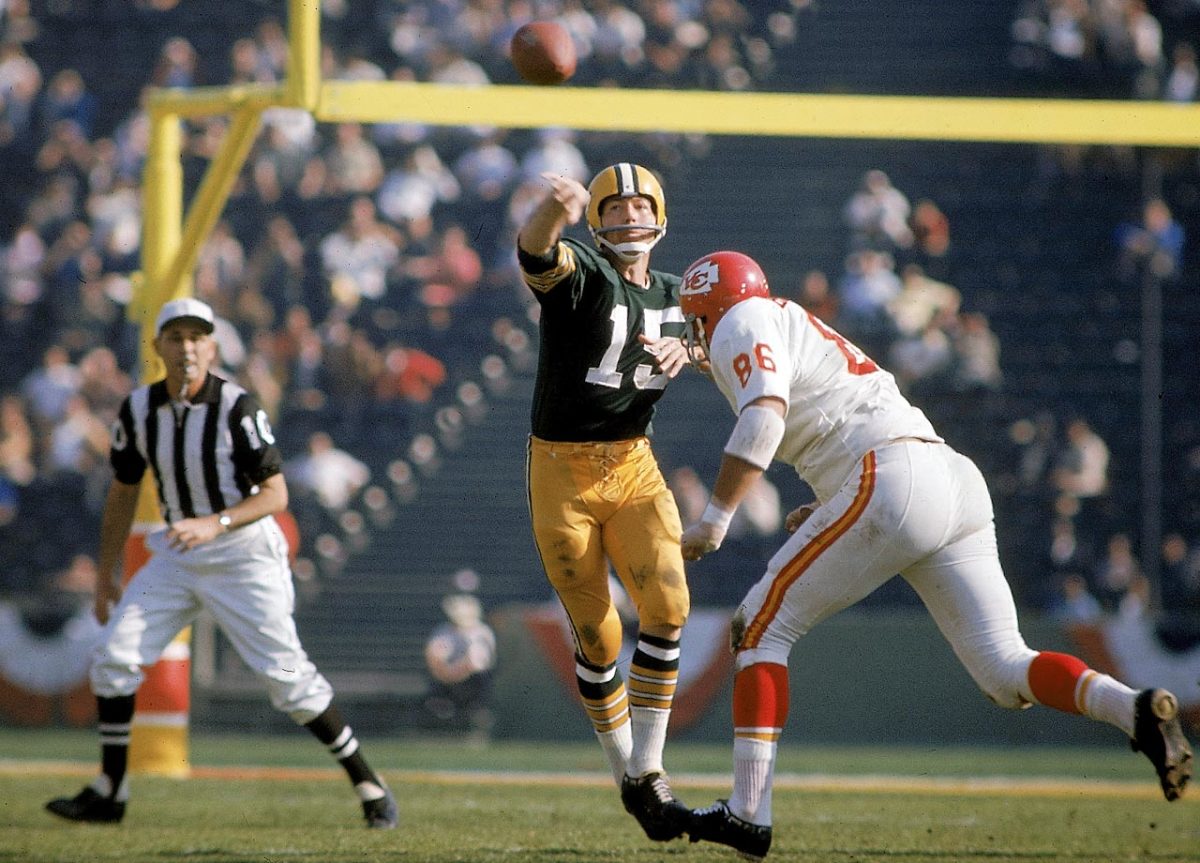
Green Bay Packers quarterback Bart Starr lofts a pass in the first meeting of AFL and NFL champions, played Jan. 15, 1967. Starr's 250 yards passing and two touchdowns earned him Super Bowl MVP.
So is Dave Klein, who is still grinding out copy daily at age 74. Klein worked as the Giants beat reporter at the Star-Ledger for 35 years before starting an online Giants newsletter by subscription called e-Giants. He still covers every Giants game -- Klein will tell you that he’s lasted on the beat through 10 different coaches -- and will be at this year’s Super Bowl just like he was on Jan. 15, 1967 for the Packers-Chiefs.
“I think the streak is a tribute to longevity,” Klein says. “I’ve lost a lot of good friends in the business over the years. Either they retired, or have gone to that great big stadium in the sky. It is an accomplishment, but one I could not have achieved without some pure luck”
So this is the club -- Green, Izenberg and Klein -- who have covered every Super Bowl since the start. (To find the story of the four photographers have been there at every game alongside them, click here.) They were among the 338 media members credentialed for the AFL-NFL World Championship Game at the Los Angeles Memorial Coliseum for the first Super Bowl game and have covered every one since. (Some perspective: Last year the NFL issued credentials to 6,329 media members to cover Super Bowl XLVIII and related events in New York and New Jersey.) Izenberg said a lot of newspapers did not send their columnists for the first game, which is one of the reasons for the group’s exclusive status. The other is many of their colleagues have passed away.
Their memories of the first game -- Green Bay’s 35-10 romp over Kansas City -- remain sharp. Izenberg recalled how he and his close friend Jack Murphy, the famous sports writer out of San Diego, drove to Santa Barbara to interview Green Bay players at their hotel. At the front of the hotel stood a man on guard. His name was Vince Lombardi.
NFL draft redux: Reprojecting the first round of the 2014 draft
“I knew Lombardi was steaming about being in Santa Barbara,” Izenberg says. “We pulled up to the place, the ocean on the right side, and Lombardi is standing in front of the hotel. He says to us, 'What are you guys doing here?' I said, 'Well, we came to talk to your football team.' He said, 'We should not even be here.' I always knew how to push his buttons so I said, 'This is a beautiful place, isn’t it?' He said, 'What you mean this is a beautiful place? This is hell. Look how pretty it is.' Then he realizes that there are 10 players listening and looking down. He says to them. 'And none of you guys better be in the pool today either.' And then walks away.”
Green said he traveled to Los Angeles mid-week for the first game because the Lions were changing coaches from Harry Gilmer for Joe Schmidt. He remembers going into the hotel room of Chiefs defensive back Fred Williamson with a small group for a 30-minute interview. “We had that kind of access,” Green said.
Izenberg recalled wanting to talk to then-NFL commissioner Pete Rozelle about the Coliseum not selling out and so NFL officials put together an impromptu press conference in Rozelle’s hotel suite for a dozen print reporters. This was the inaugural State of the League press conference that the NFL commissioner now gives every year in front of thousands. Rozelle was a genius when it came to understanding the role of the press in the growth of pro football. He wanted the writers and broadcasters to leave Los Angeles following the first Super Bowl thinking how much better pro football's championship was than the World Series. The writer Mickey Herskowitz, then working for the American Football League in promotions and hired by Rozelle to work the game, said each room at the Statler Hilton Hotel (the media hotel) received a cheese and fruit basket that included bottles of bourbon and Scotch. If there was a woman in the room, the league sent a dozen roses. Rozelle also hosted a party for 150 media members during media week.
Media circus starts week early as Pats face questions about controversy
“I can remember the dance floor was sort of like a demarcation zone,” said Green, who paid his own way to Miami for Super Bowl II because of a newspaper strike. “All the guys covering NFL teams were on one side and only AFL guys were on the other side. We sort of looked at each other. It took a year or two before we all became friends and colleagues.”
Today, Green writes on a Dell computer, but for his first Super Bowl game story, he typed his copy on an Olivetti that he purchased in Hong Kong in 1955 while on leave from his Naval assignment as a lieutenant junior grade officer working as a public information officer in Yokosuka, Japan. Upon finishing his piece, he gave it to a Western Union operator at the game. Hearing him describe the process sounds like something from another galaxy.
GALLERY: Walter Iooss Jr.s' best Super Bowl photos
Walter Iooss Jr.'s Best Super Bowl Photos
Super Bowl I, Jan. 15, 1967: Green Bay 35, Kansas City 10, at Los Angeles
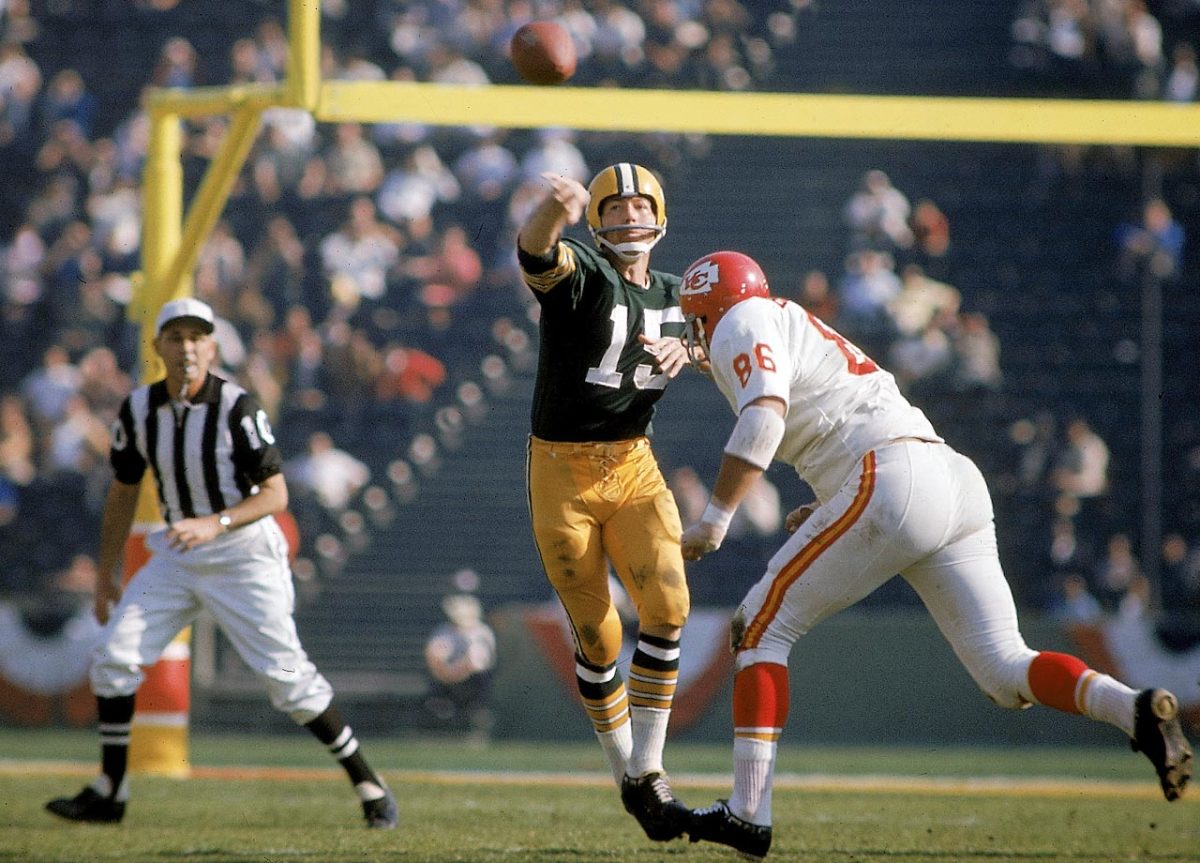
Green Bay Packers quarterback Bart Starr lofts a pass in the first meeting of AFL and NFL champions. Starr's 250 yards passing and two touchdowns earned him Super Bowl MVP honors.
Super Bowl II, Jan. 14, 1968: Green Bay 33, Oakland 14, at Miami
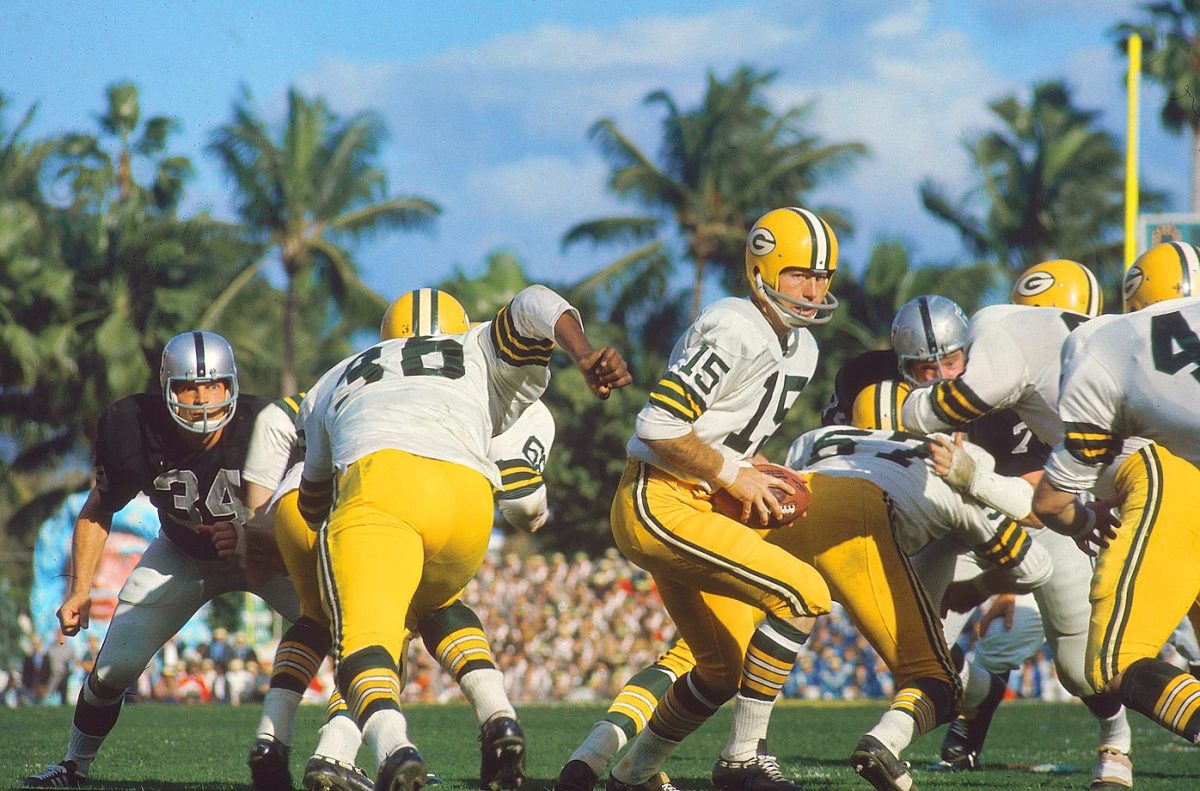
Two weeks after defeating the Dallas Cowboys in the waning seconds of the Ice Bowl, Bart Starr and the Packers got past Oakland with ease in Super Bowl II, 33-14. Starr was again the MVP.
Super Bowl III, Jan. 12, 1969: New York Jets 16, Baltimore 7, at Miami
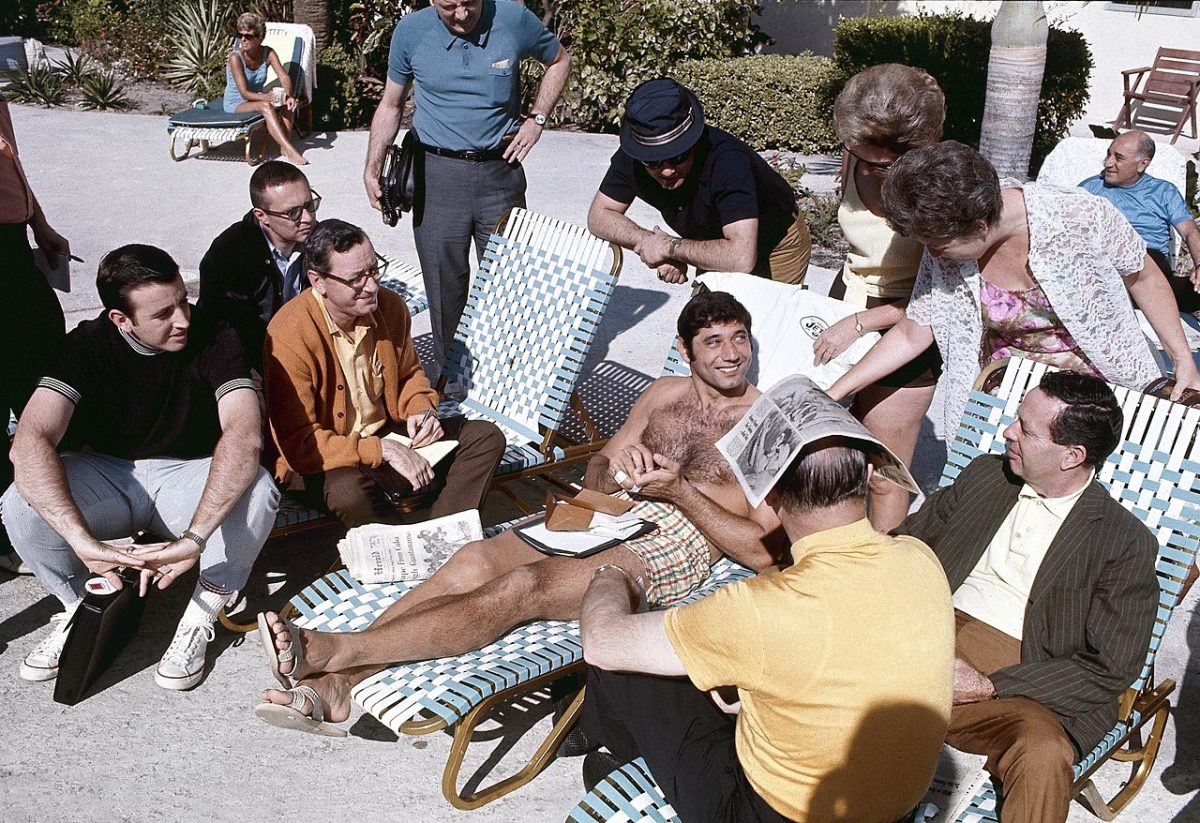
A relaxed Joe Namath chats poolside with the media before his big matchup with the Baltimore Colts. The quarterback made headlines when he guaranteed a Jets win, despite the AFL's 0-2 record in the first two Super Bowls.
Super Bowl III, Jan. 12, 1969: New York Jets 16, Baltimore 7, at Miami
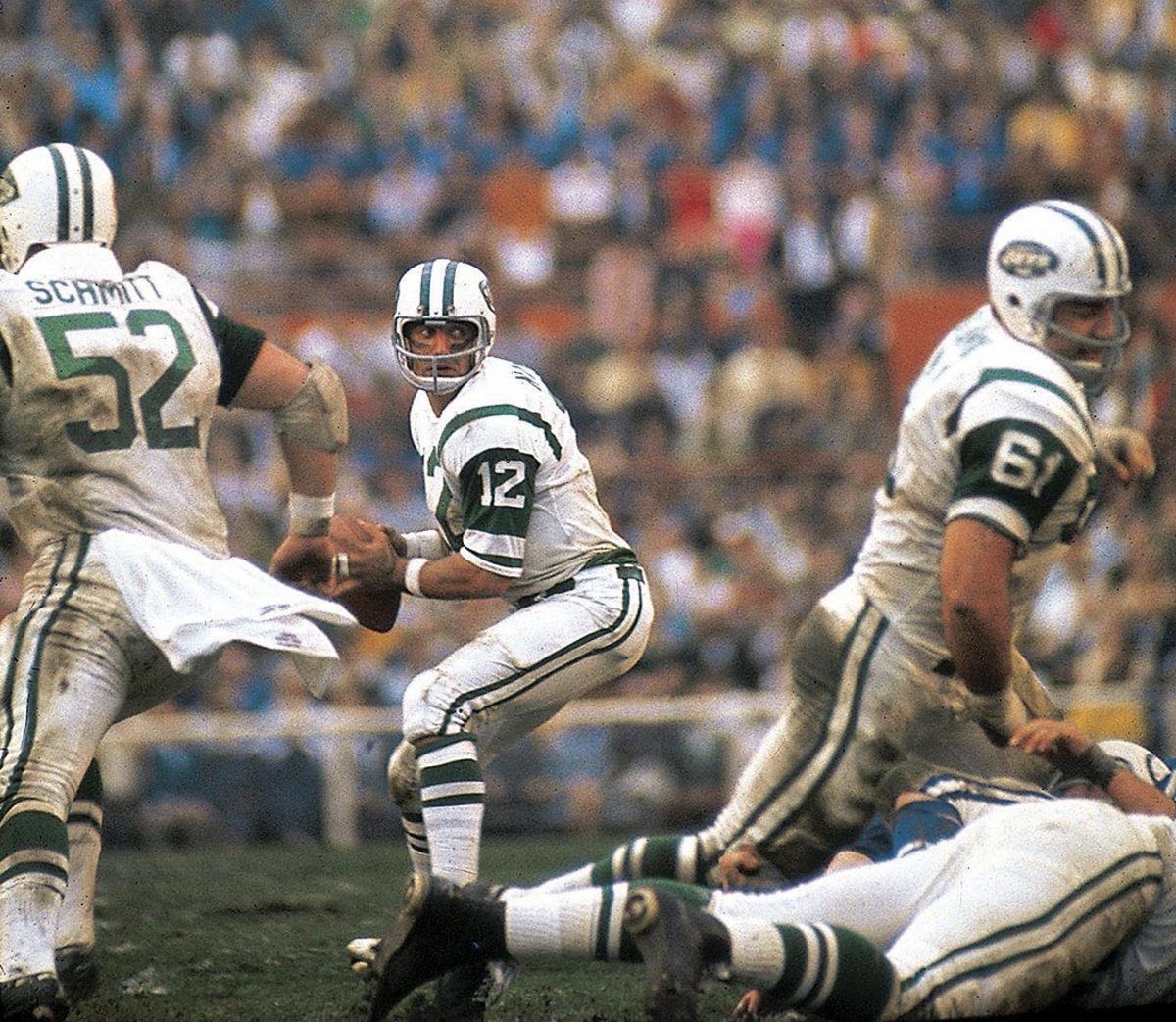
New York Jets quarterback Joe Namath looks to pass against the Baltimore Colts in SB III. Broadway Joe's team backed up his victory guarantee as New York upset the heavily favored Colts 16-7. Namath completed 17 of 28 passes for 206 yards and was named Super Bowl MVP.
Super Bowl IV, Jan. 11, 1970: Kansas City 23, Minnesota 7, at New Orleans
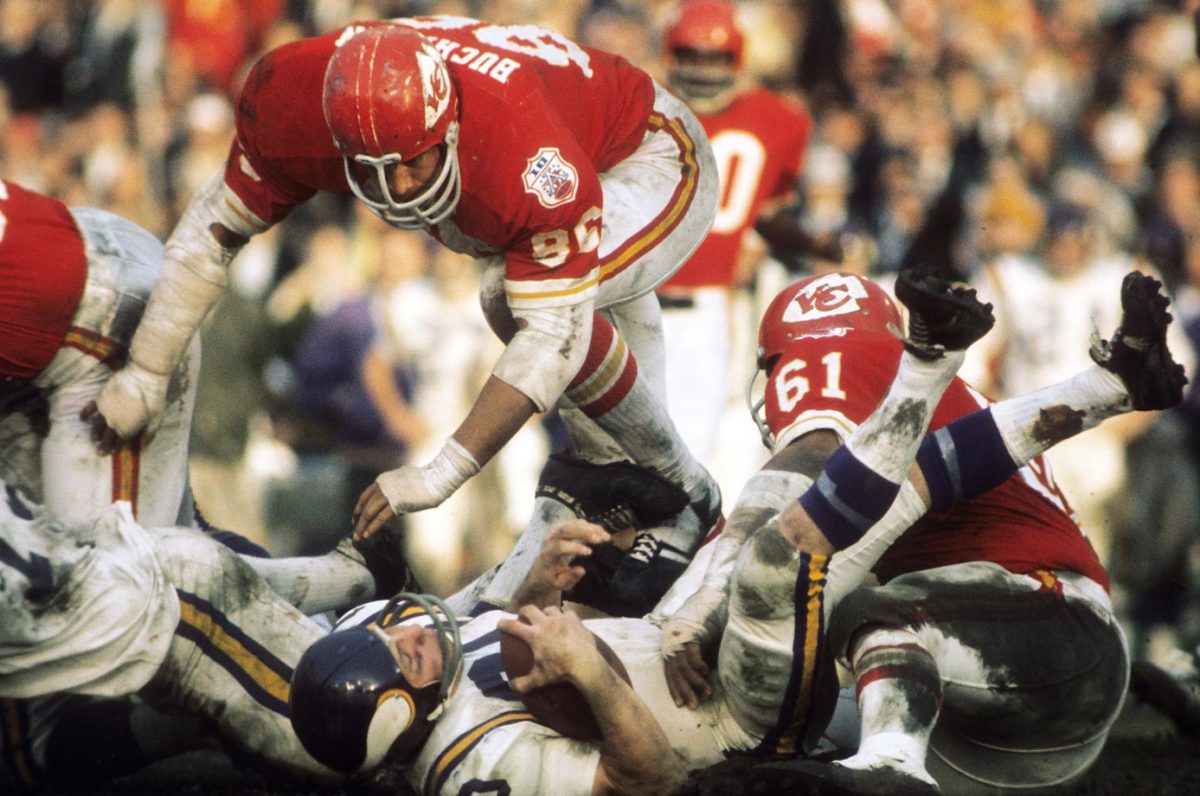
The Kansas Chiefs defense recovered two fumbles, made three interceptions and held the Minnesota Vikings to 67 yards rushing (172 passing), thanks in part to Buck Buchanan (86) and Curley Culp (61).
Super Bowl V, Jan. 17, 1971: Baltimore 16, Dallas 13, at Miami
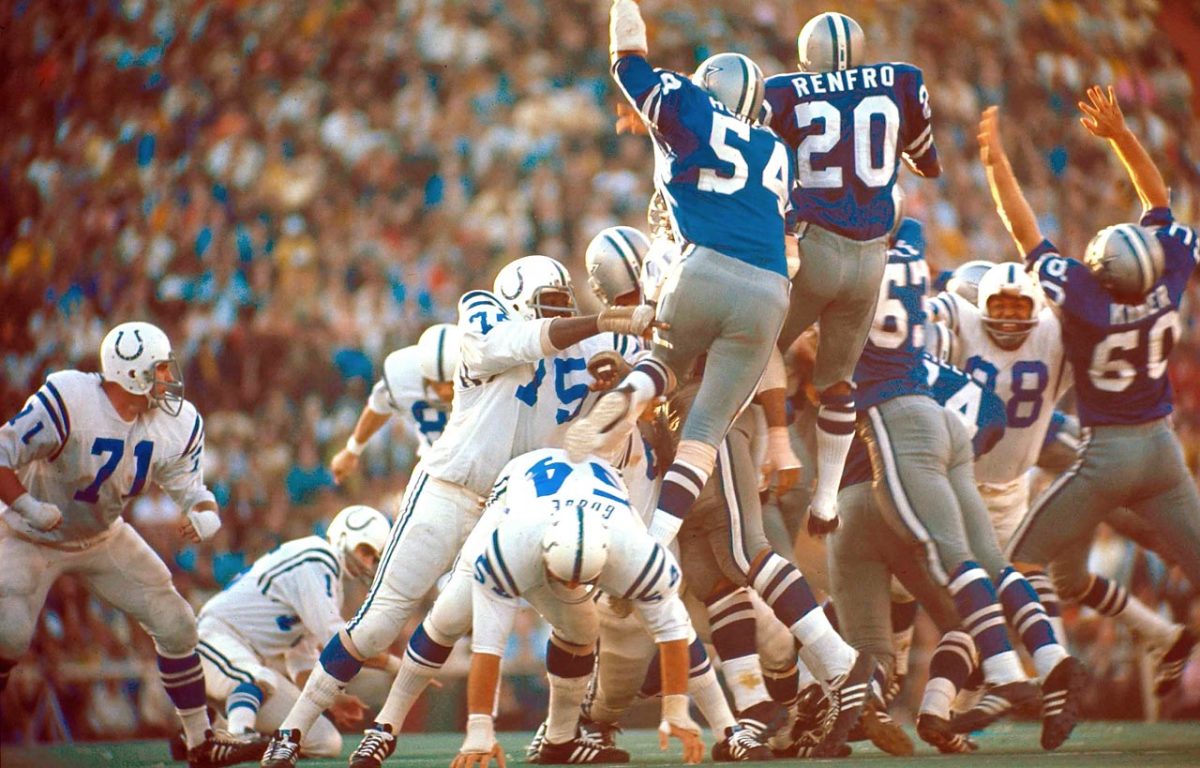
Baltimore Colts rookie kicker Jim O'Brien boots the game-winning field goal with five seconds left over the outstretched arms of the Dallas Cowboys rush.
Super Bowl VI, Jan. 16, 1972: Dallas 24, Miami 3, at New Orleans
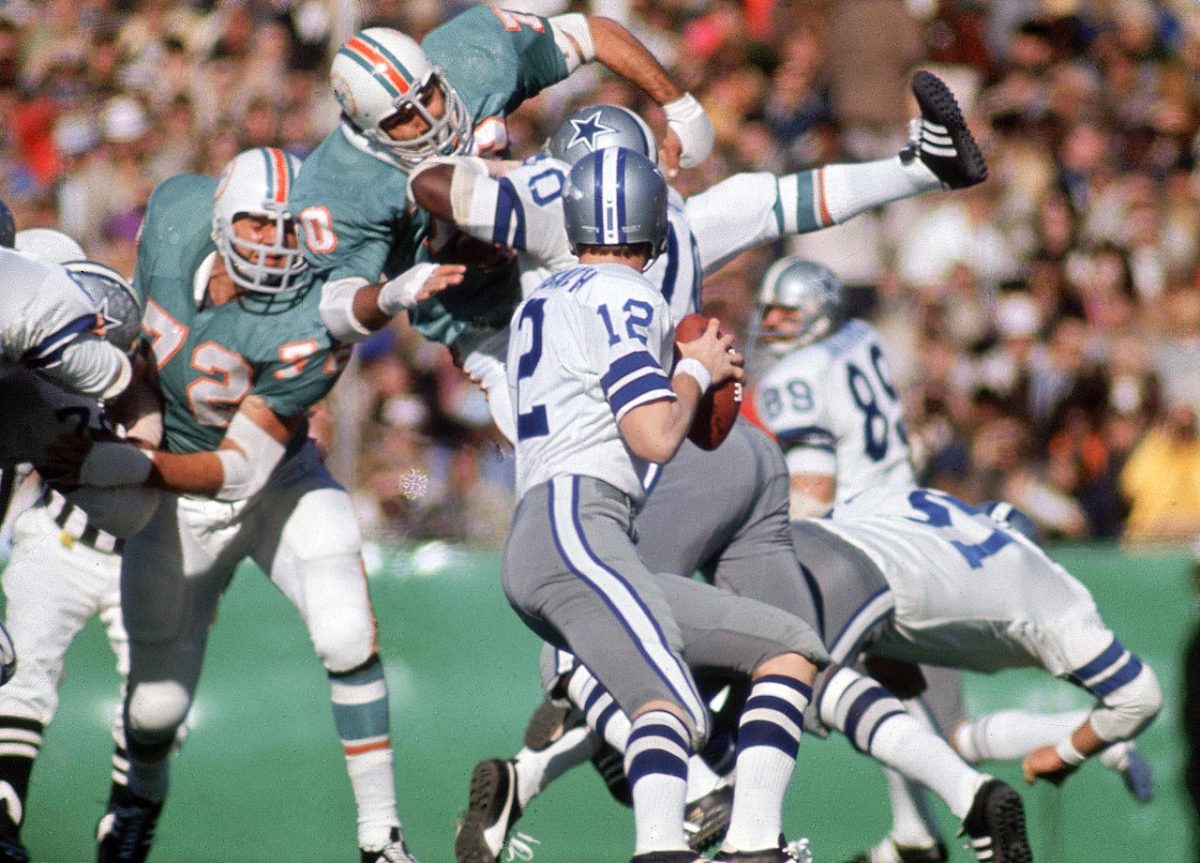
Roger Staubach gets set to pass against the Miami Dolphins in a Super Bowl in which the Dallas Cowboys snapped their reputation for being unable to win important playoff games.
Super Bowl VI, Jan. 16, 1972: Dallas 24, Miami 3, at New Orleans
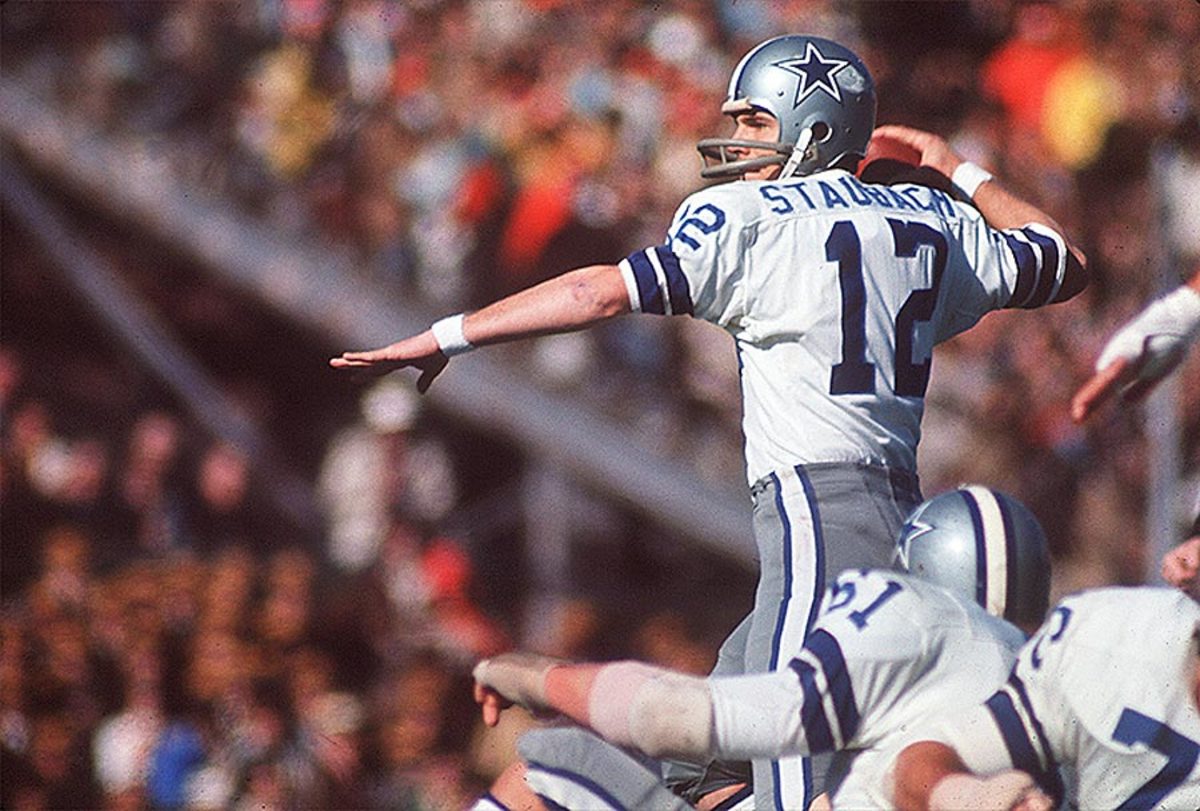
Roger Staubach was named MVP of Super Bowl VI after completing 12 of 19 passes for 119 yards and two touchdowns in the 24-3 win.
Super Bowl VII, Jan. 14, 1973: Miami 14, Washington 7, at Los Angeles
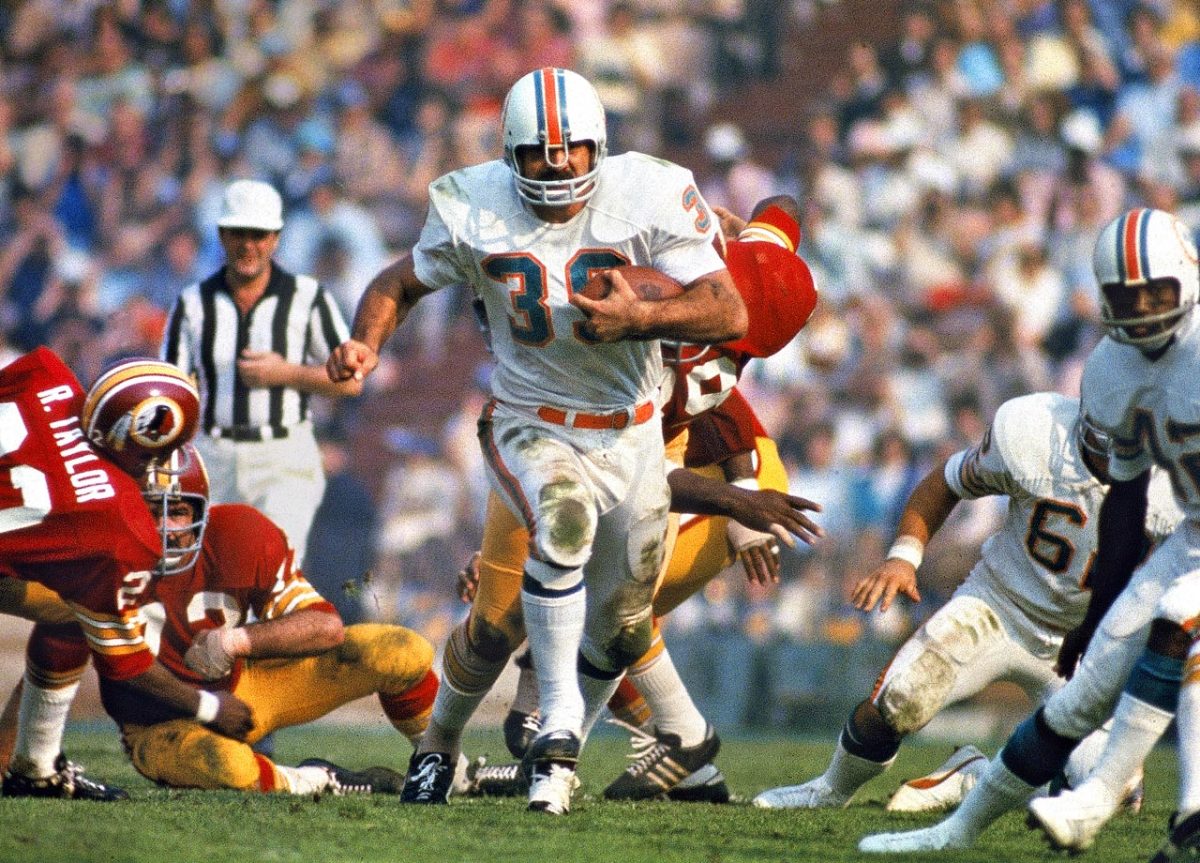
Miami Dolphins fullback Larry Csonka charges up the middle against the Washington Redskins. Csonka tallied 112 yards rushing on 15 carries to lead all rushers and spark Miami's 14-7 triumph.
Super Bowl VIII, , Jan. 13, 1974: Miami 24, Minnesota 7, at Houston
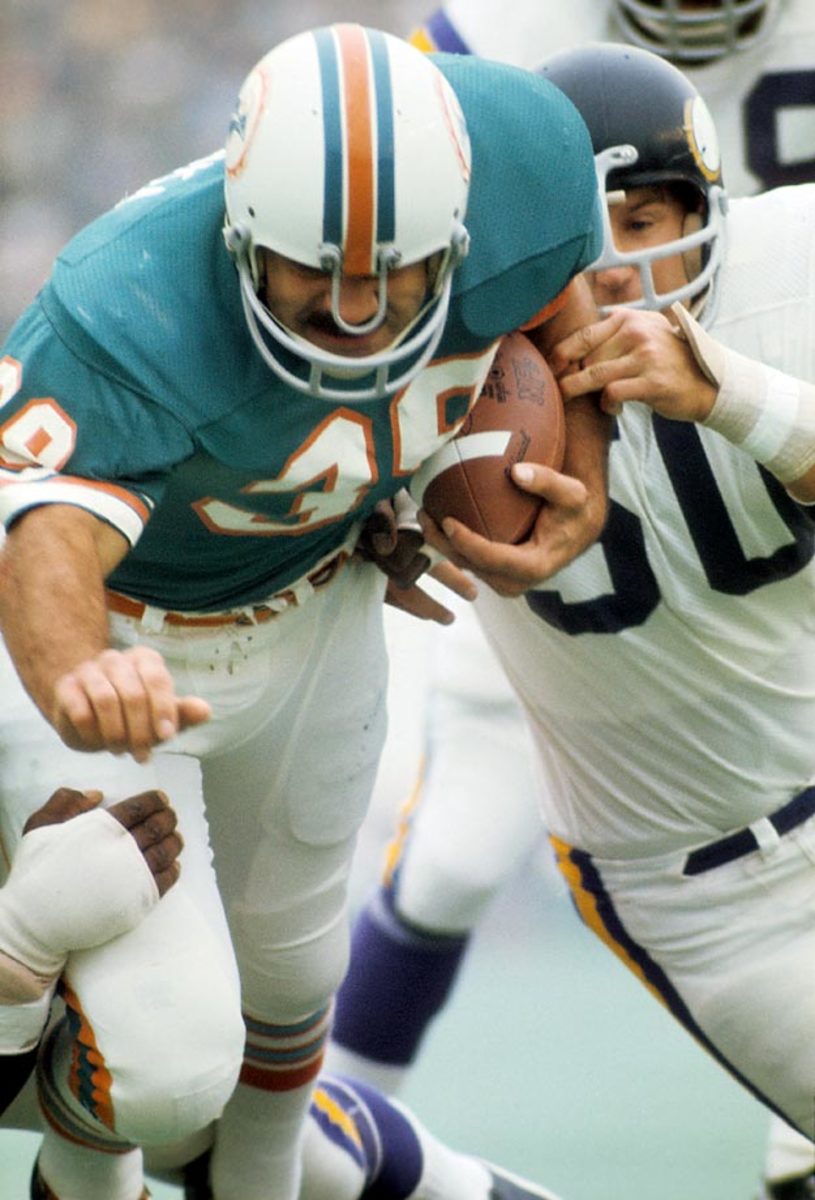
Larry Csonka bulldozed his way to a record 145 yards rushing on 33 carries against the Vikings en route to becoming the first running back to be named Super Bowl MVP.
Super Bowl IX, Jan. 12, 1975: Pittsburgh 16, Minnesota 6, at New Orleans
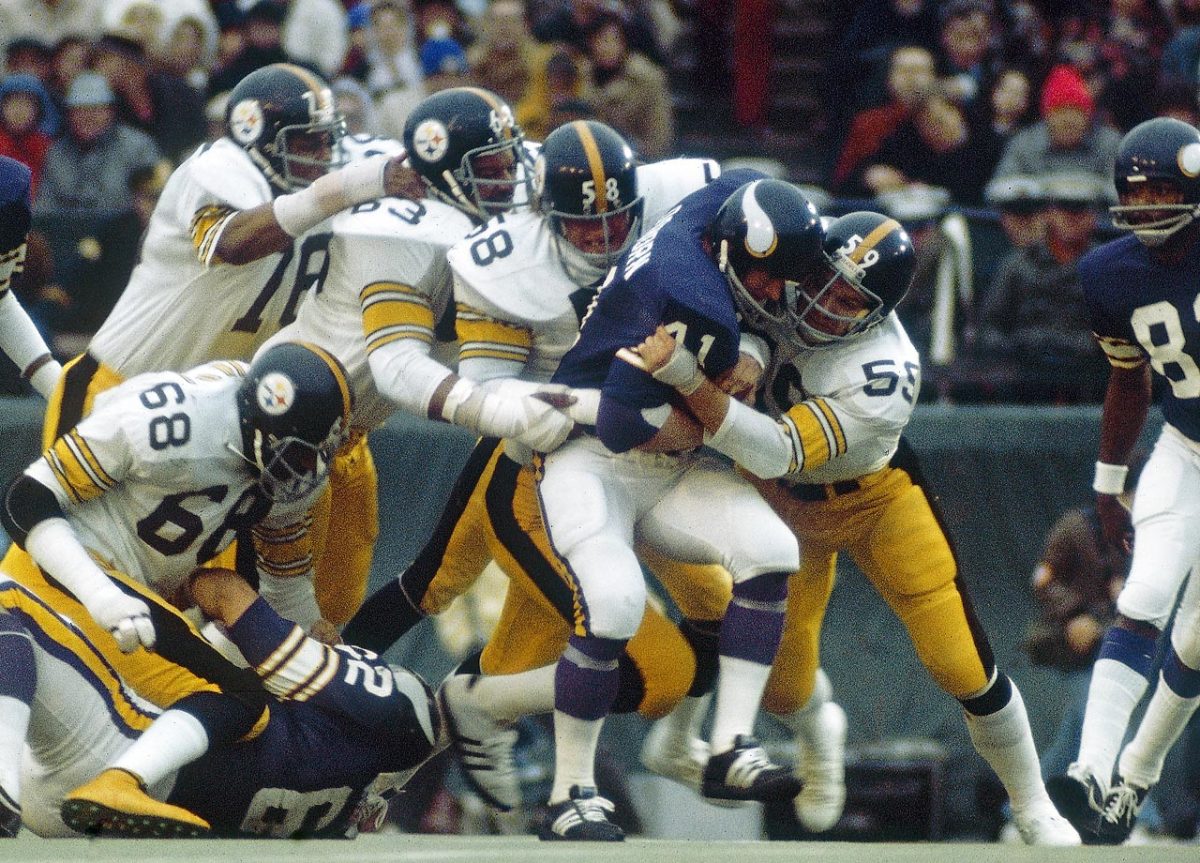
Jack Ham, Jack Lambert, Ernie Holmes and Dwight White of Pittsburgh's Steel Curtain defense swarm to Minnesota Vikings fullback Dave Osborn. Pittsburgh limited Minnesota to just 119 total offensive yards.
Super Bowl IX, Jan. 12, 1975: Pittsburgh 16, Minnesota 6, at New Orleans
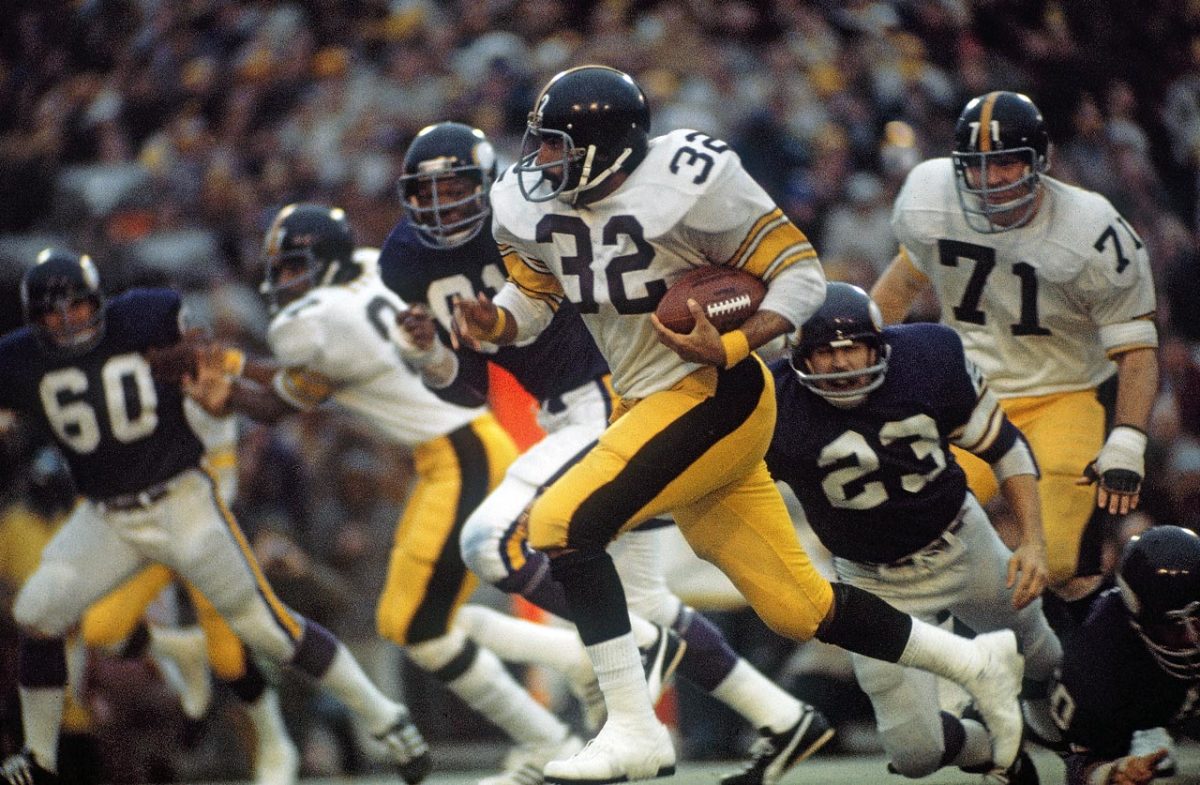
Pittsburgh Steelers fullback Franco Harris sprints away from the Minnesota Vikings defense. Harris set a Super Bowl record with 158 rushing yards as he earned Super Bowl MVP honors.
Super Bowl X, Jan. 18, 1976: Pittsburgh 21, Dallas 17, at Miami
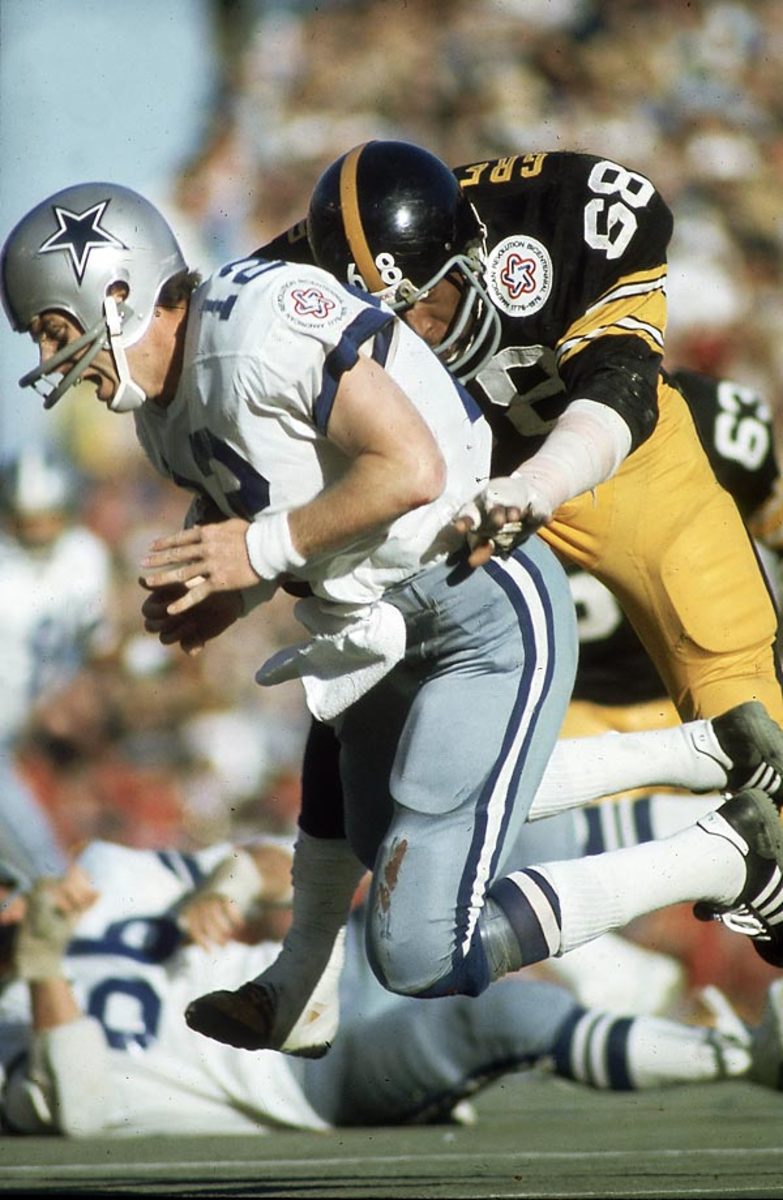
Pittsburgh Steelers defensive end L.C. Greenwood takes down Dallas Cowboys quarterback Roger Staubach. The Steelers' intimidating defense forced Staubach into three interceptions and sacked him seven times during Pittsburgh's 21-17 win.
Super Bowl XI, Jan. 9, 1977: Oakland 32, Minnesota 14, at Pasadena
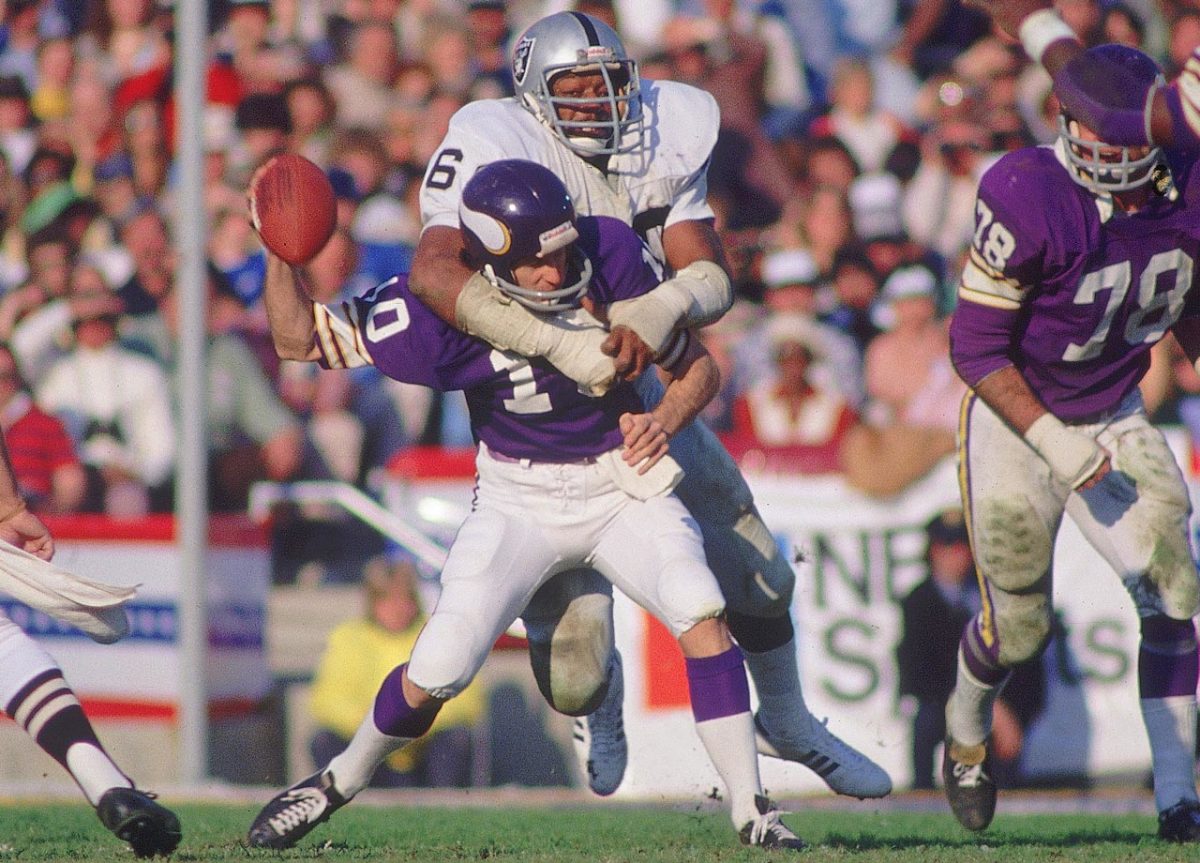
Oakland Raiders defensive end Otis Sistrunk sacks Fran Tarkenton, forcing the Minnesota Vikings quarterback to fumble. Oakland's offense had a field day with the Vikings, setting a Super Bowl record with 429 yards of offense.
Super Bowl XII, Jan. 15, 1978: Dallas 27, Denver 10, at New Orleans
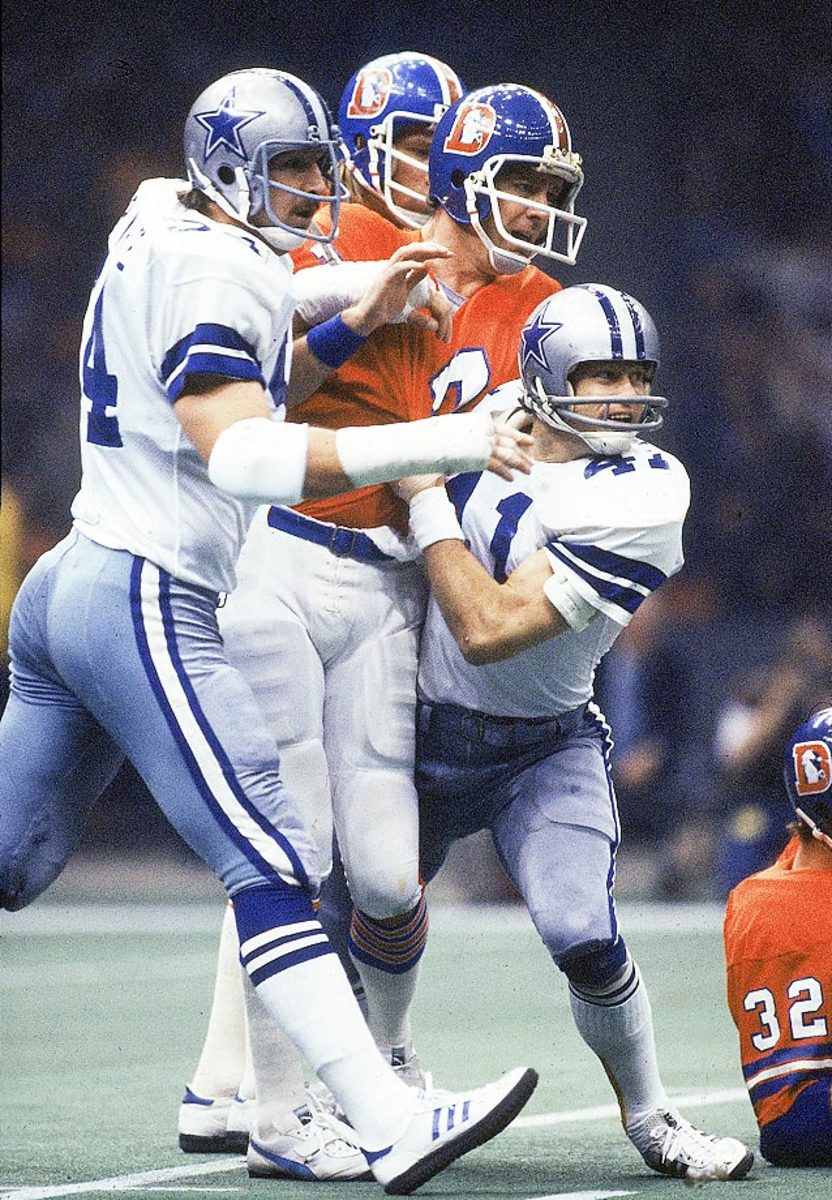
Randy White (54) and Charlie Waters (41) ease up after having pressured Denver quarterback Craig Morton. White shared MVP honors with teammate Harvey Martin, which marked the first time a defensive lineman was named Super Bowl MVP.
Super Bowl XIII, Jan. 21, 1979: Pittsburgh 35, Dallas 31, at Miami
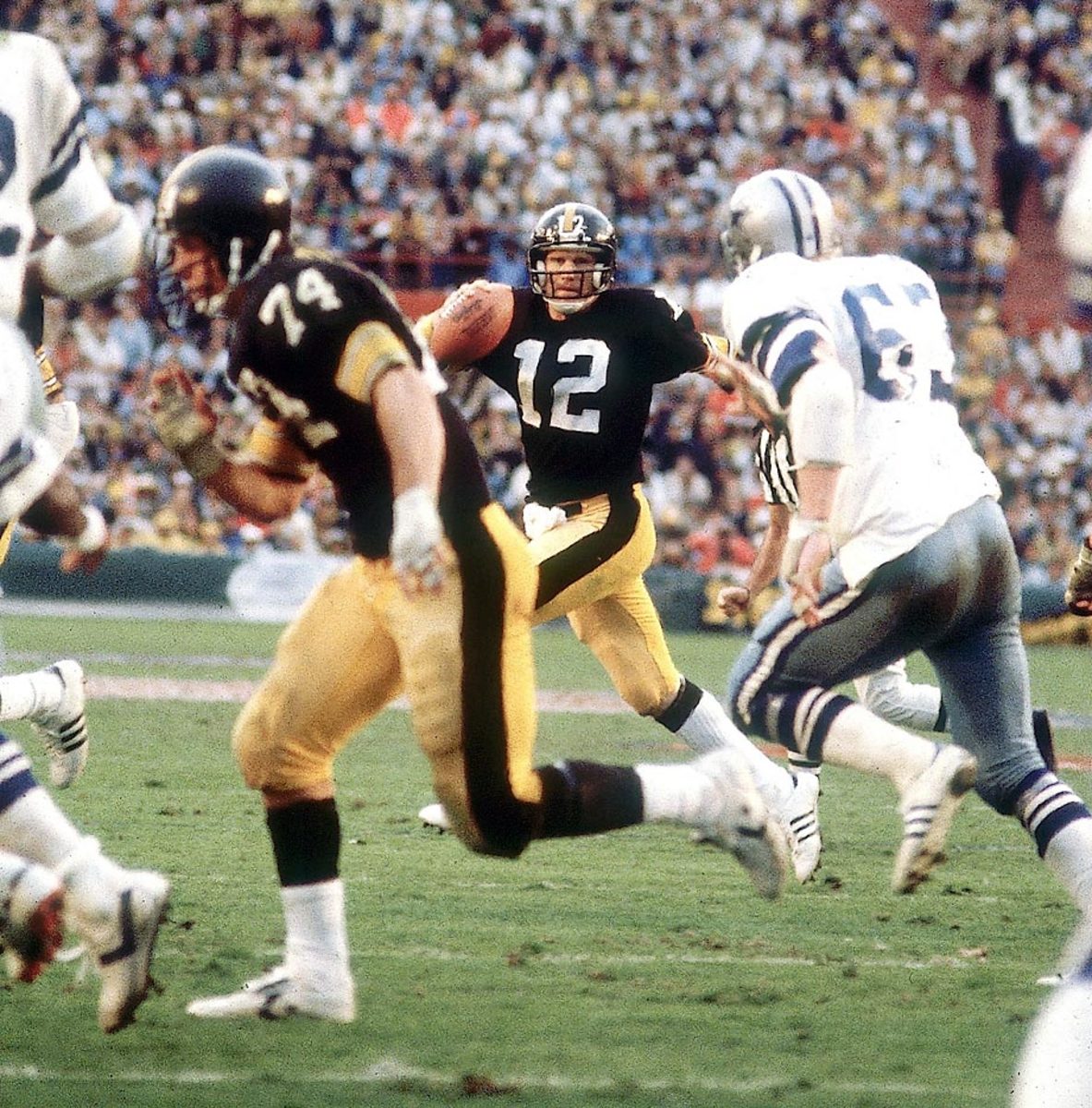
Pittsburgh Steelers quarterback Terry Bradshaw scrambles away from the Dallas Cowboys defense before tossing a touchdown pass to Rocky Bleier. Led by Bradshaw's 318 passing yards and four touchdowns, the Steelers won in a shootout, beating the Cowboys 35-31. Dallas was the first of only two teams (San Francisco, 2013) to score 30 or more points and lose a Super Bowl.
Super Bowl XIII, Jan. 21, 1979: Pittsburgh 35, Dallas 31, at Miami
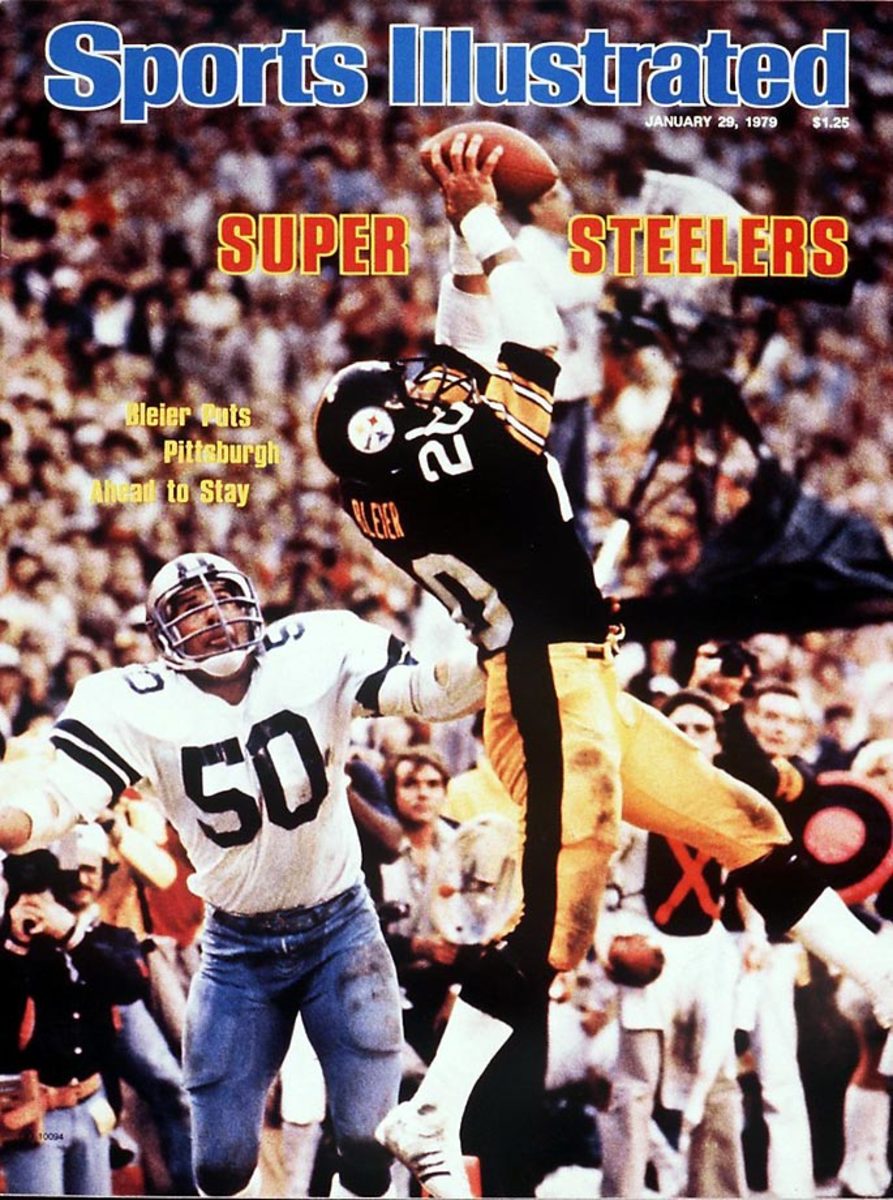
Rocky Bleier found himself on the cover of Sports Illustrated after making this leaping catch. The grab was the Steelers fullback's only reception of the day but went for a seven-yard touchdown that gave the Steelers a 21-14 lead heading into halftime. Pittsburgh won 35-31.
Super Bowl XIV, Jan. 20, 1980: Pittsburgh 31, L.A. Rams 19, at Pasadena
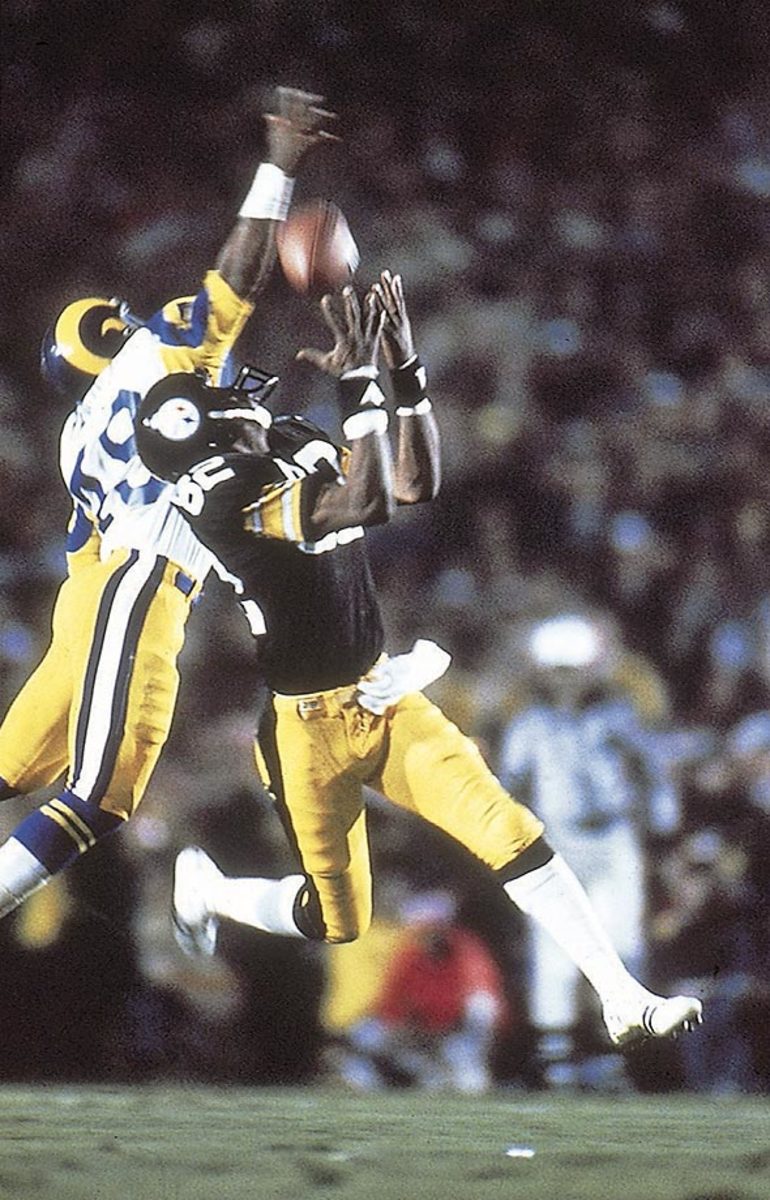
Pittsburgh Steelers wide receiver John Stallworth hauls in a pass from Terry Bradshaw just beyond the outstretched fingers of Los Angeles Rams cornerback Rod Perry. Stallworth took the pass 73 yards to the end zone to give the Steelers the lead for good in their 31-19 win.
Super Bowl XV, Jan. 25, 1981: Oakland 27, Philadelphia 10, at New Orleans
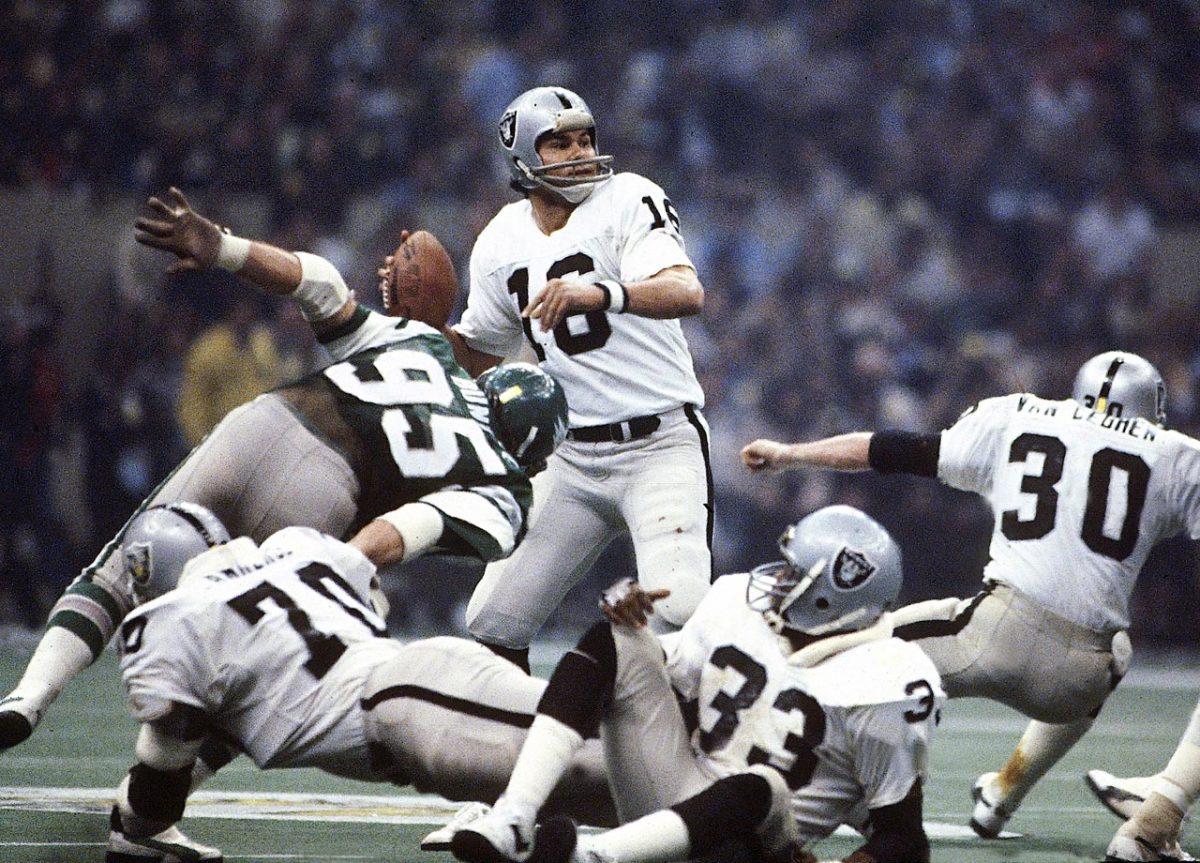
Super Bowl MVP Jim Plunkett looks to pass against the Philadelphia Eagles. Plunkett threw for 261 yards on 13-of-21 passing with three touchdowns to guide the Oakland Raiders to a 27-10 victory.
Super Bowl XVI, Jan. 24, 1982: San Francisco 26, Cincinnati 21, at Pontiac
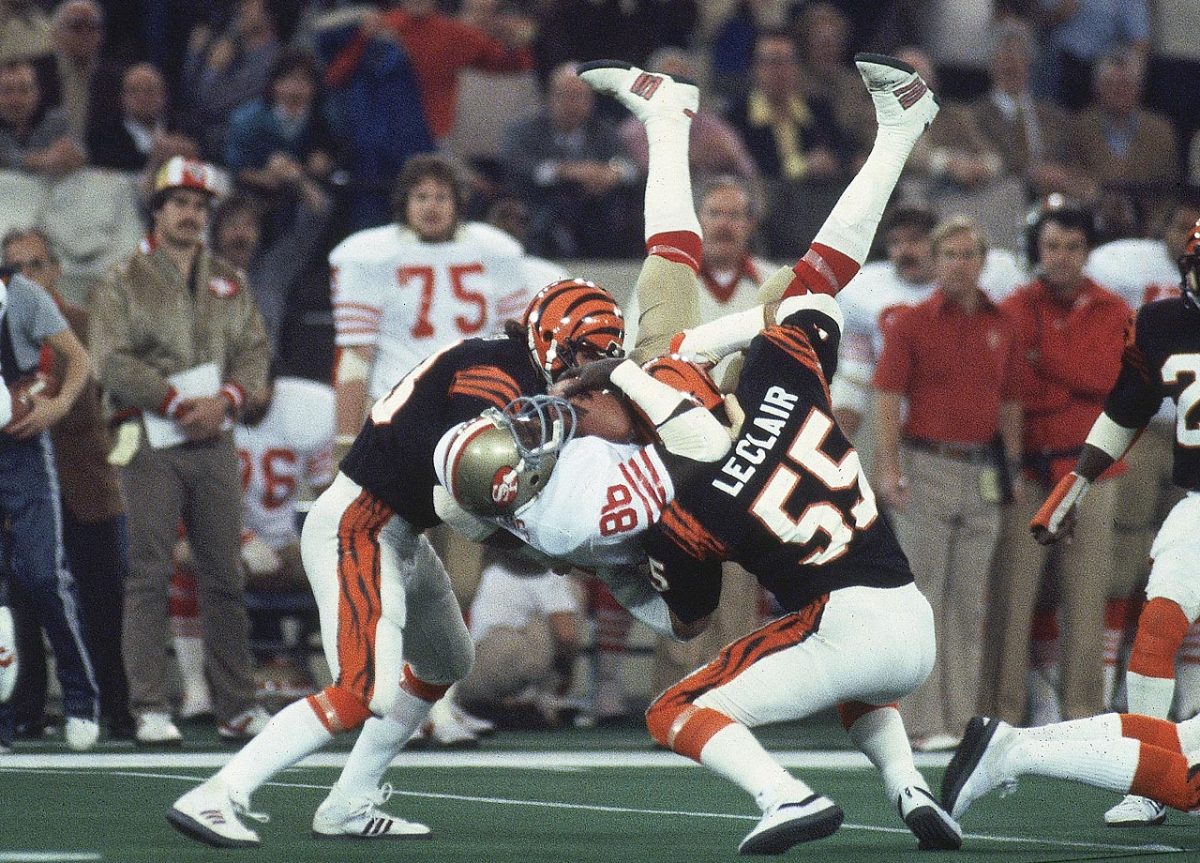
San Francisco 49ers tight end Charles Young hangs on to a pass while being sandwiched between linebacker Jim LeClair and another Cincinnati Bengals defender. Young's grab went for a gain of 14 yards and helped set up the 49ers' first score in their 26-21 victory.
Super Bowl XVII, Jan. 30, 1983: Washington 27, Miami 17, at Pasadena
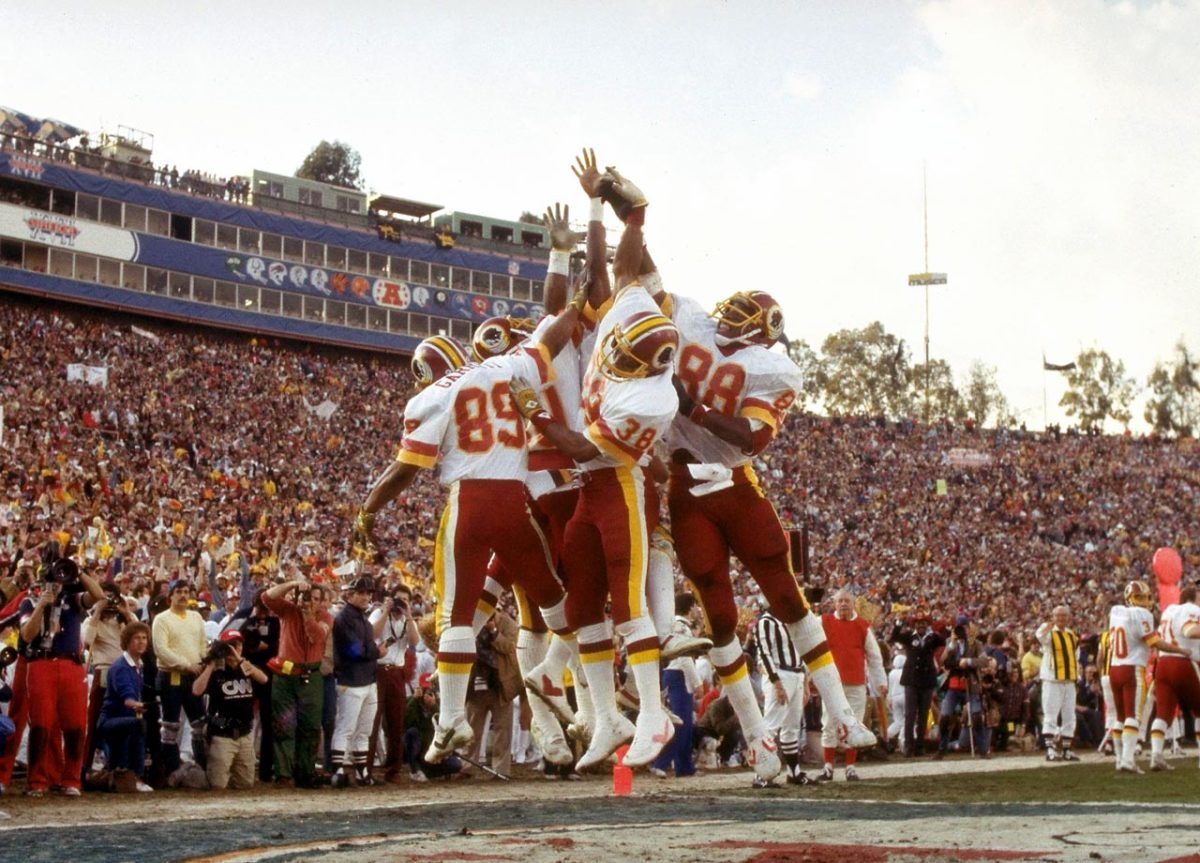
The Smurfs of the Washington Redskins celebrate after a touchdown. Washington scored 17 consecutive points in the second half to defeat the Miami Dolphins 27-17.
Super Bowl XVIII, Jan. 22, 1984: L.A. Raiders 38, Washington 9, at Tampa
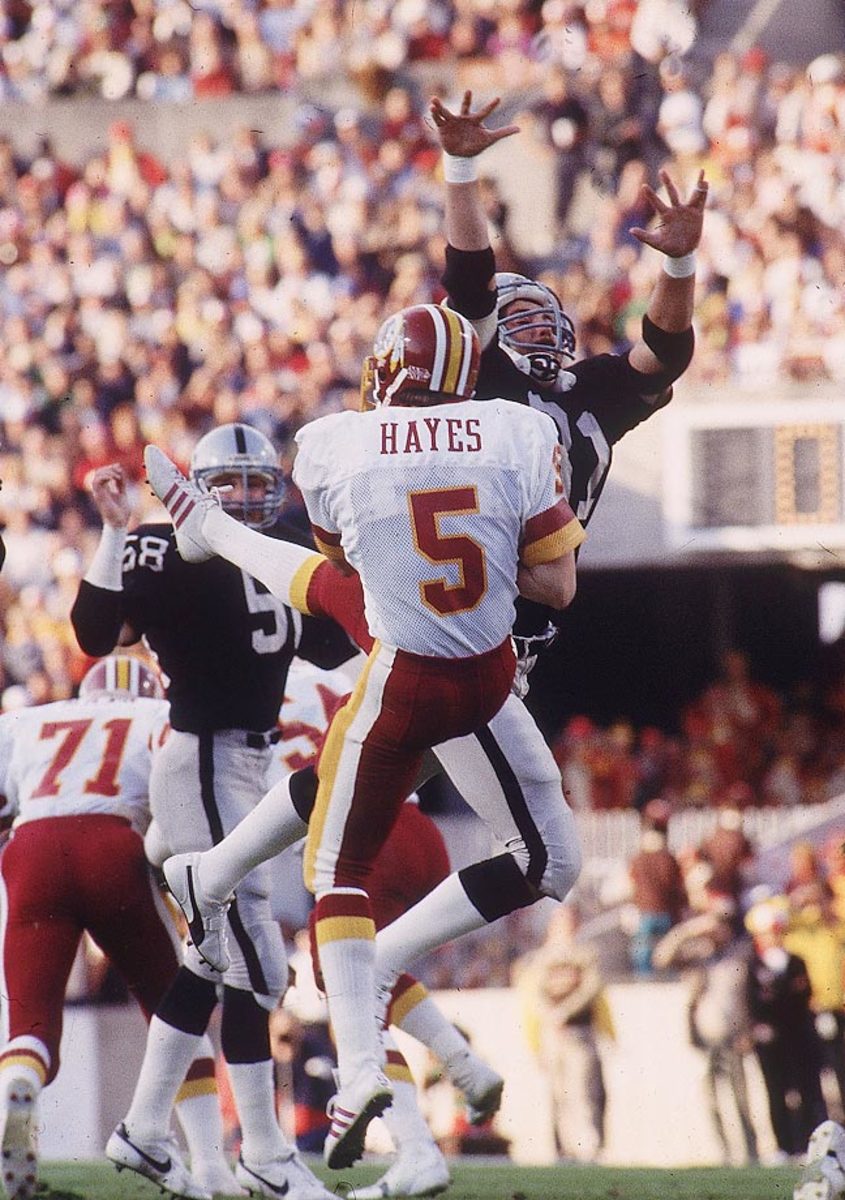
Derrick Jensen of Oakland blocks a punt by Washington's Jeff Hayes during the Raiders' blowout victory.
Super Bowl XIX, Jan. 20, 1985: San Francisco 38, Miami 16, at Stanford
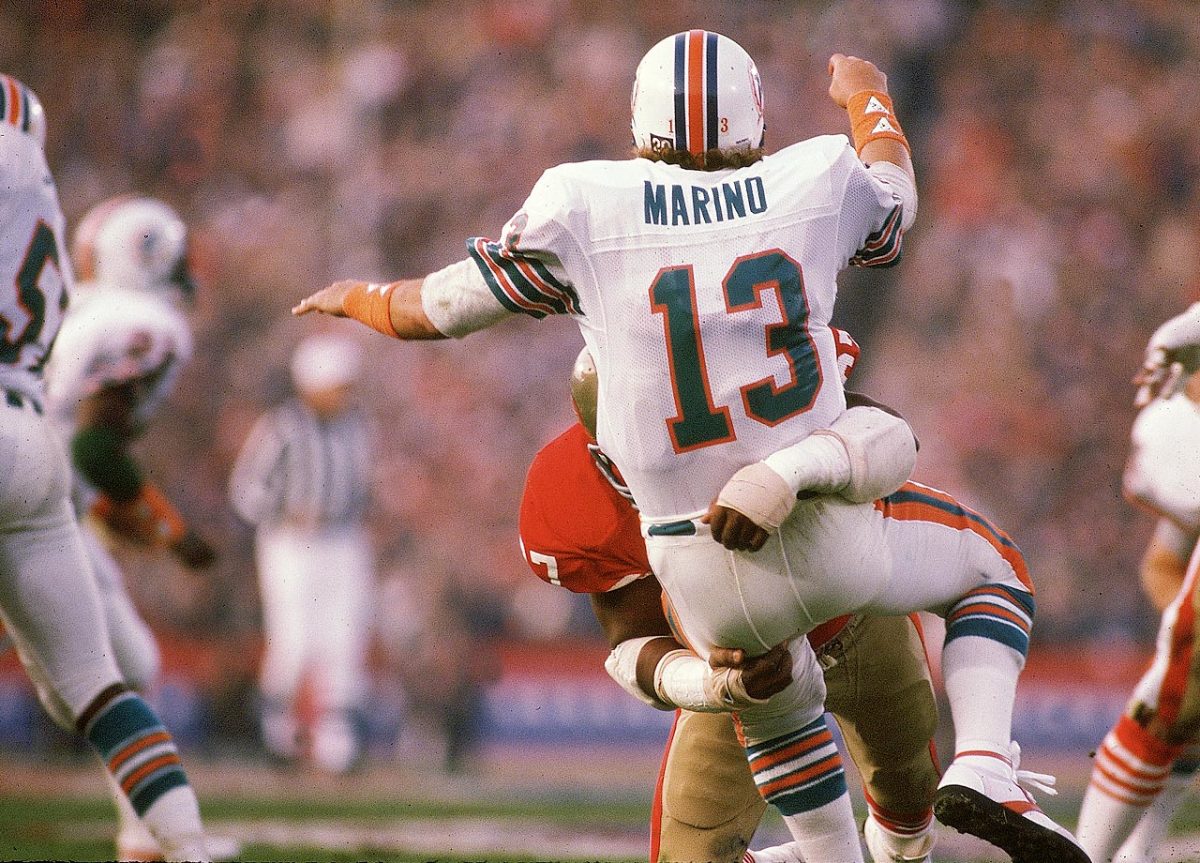
Dan Marino absorbs a big hit from San Francisco 49ers defensive tackle Gary Johnson. Marino completed 29 of 50 passes for 318 yards and a touchdown but his Miami Dolphins fell 38-16.
Super Bowl XIX, Jan. 20, 1985: San Francisco 38, Miami 16, at Stanford
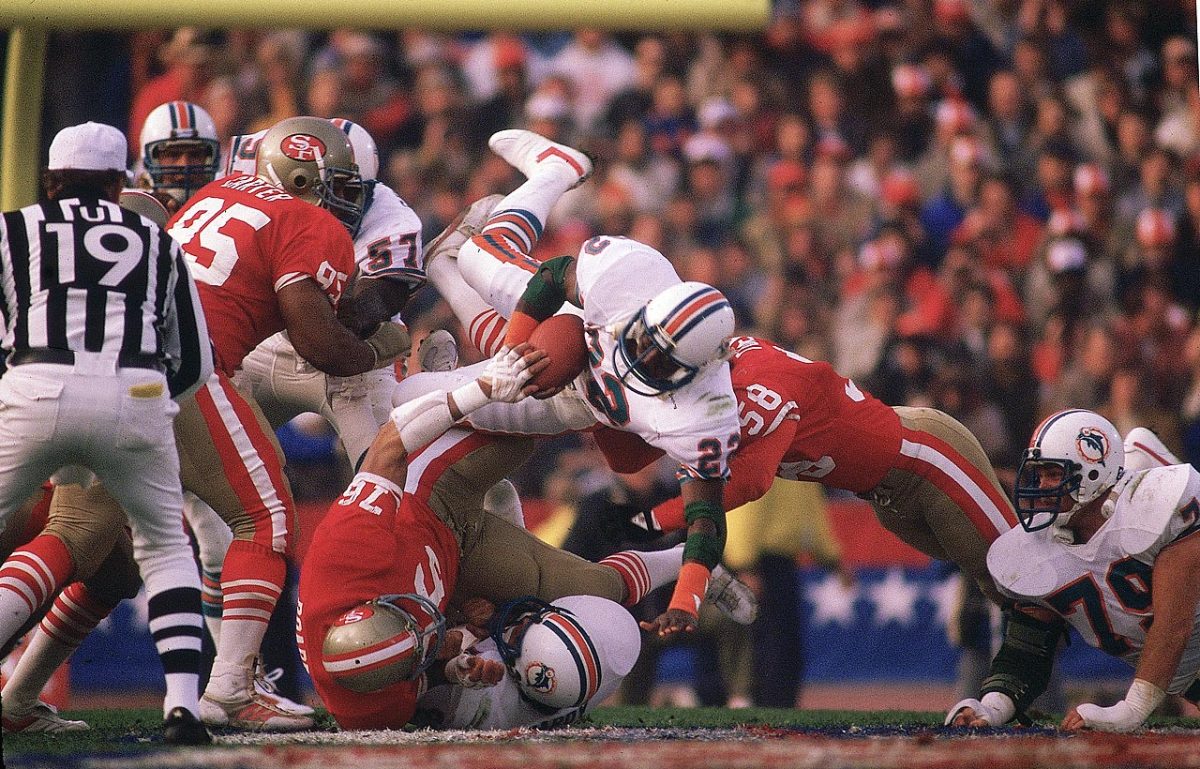
Miami Dolphins running back Tony Nathan dives on top of the San Francisco 49ers defense. Nathan had limited success running the ball in the 38-16 loss, gaining just 18 yards on the ground. He did pick up 83 receiving yards on 10 catches.
Super Bowl XX, Jan. 26, 1986: Chicago 46, New England 10, at New Orleans
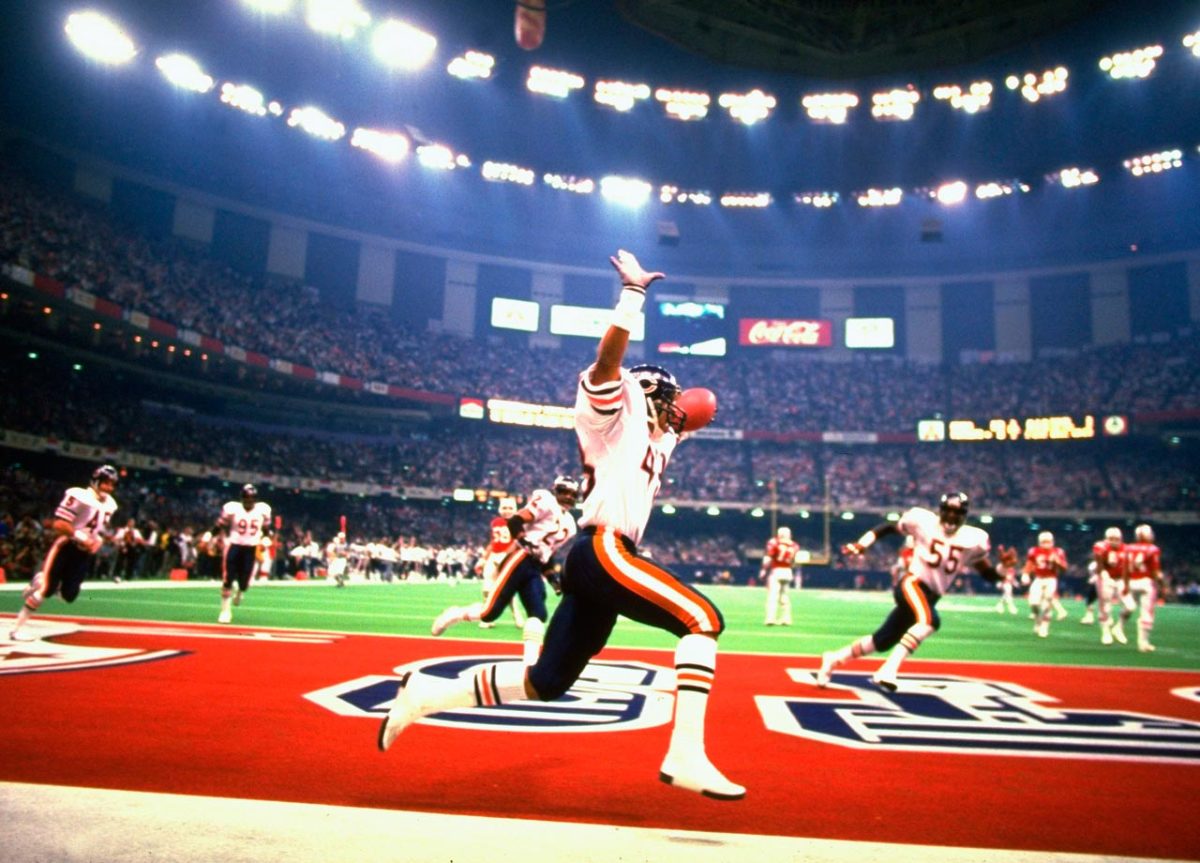
Chicago Bears defensive back Reggie Phillips raises his arms after returning an interception 28 yards for a touchdown against the New England Patriots. The Bears' innovative 46 defense dominated the game, registering seven sacks and allowing just seven rushing yards in the 46-10 win, while directly putting nine points on the board.
Super Bowl XXI, Jan. 25, 1987: N.Y. Giants 39 Denver 20, at Pasadena
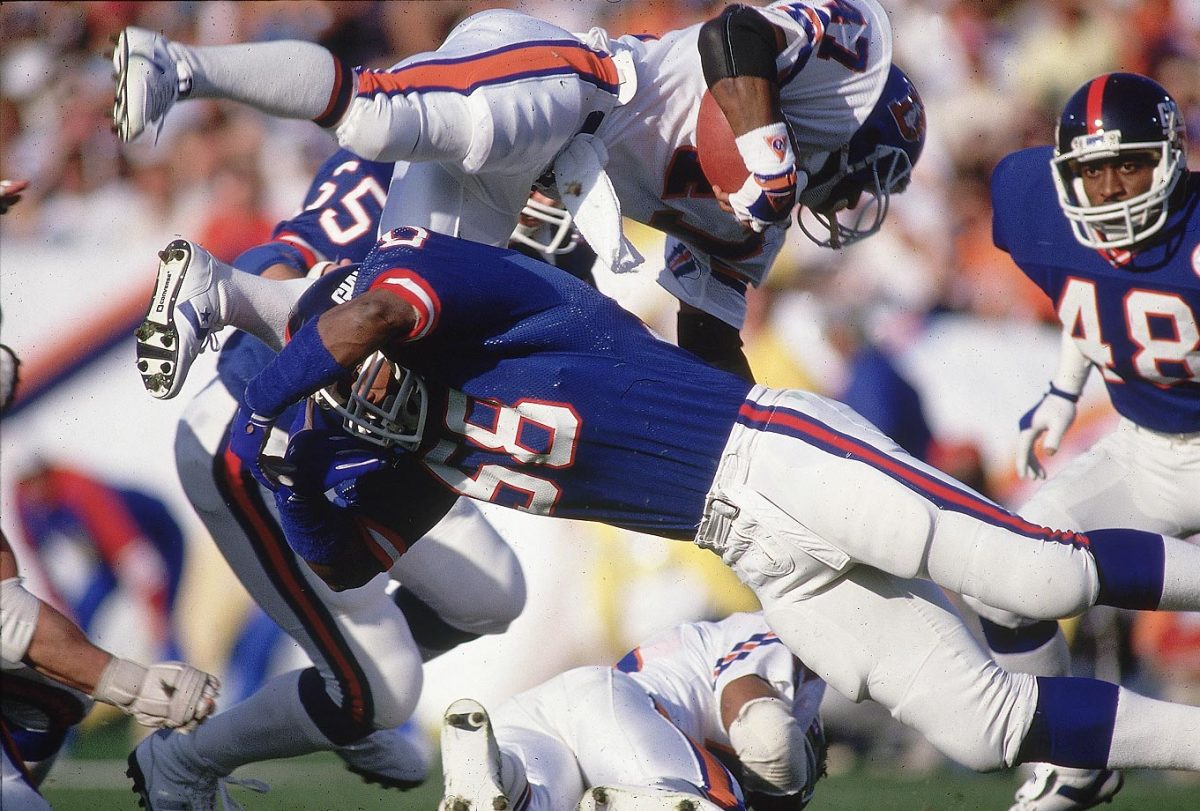
Carl Banks and the New York Giants' Blue Wrecking Crew defense held Gerald Wilhite and the Broncos to 10 second-half points on their way to a 39-20 victory -- the Giants' first ever in a Super Bowl.
Super Bowl XXI, Jan. 25, 1987: N.Y. Giants 39 Denver 20, at Pasadena
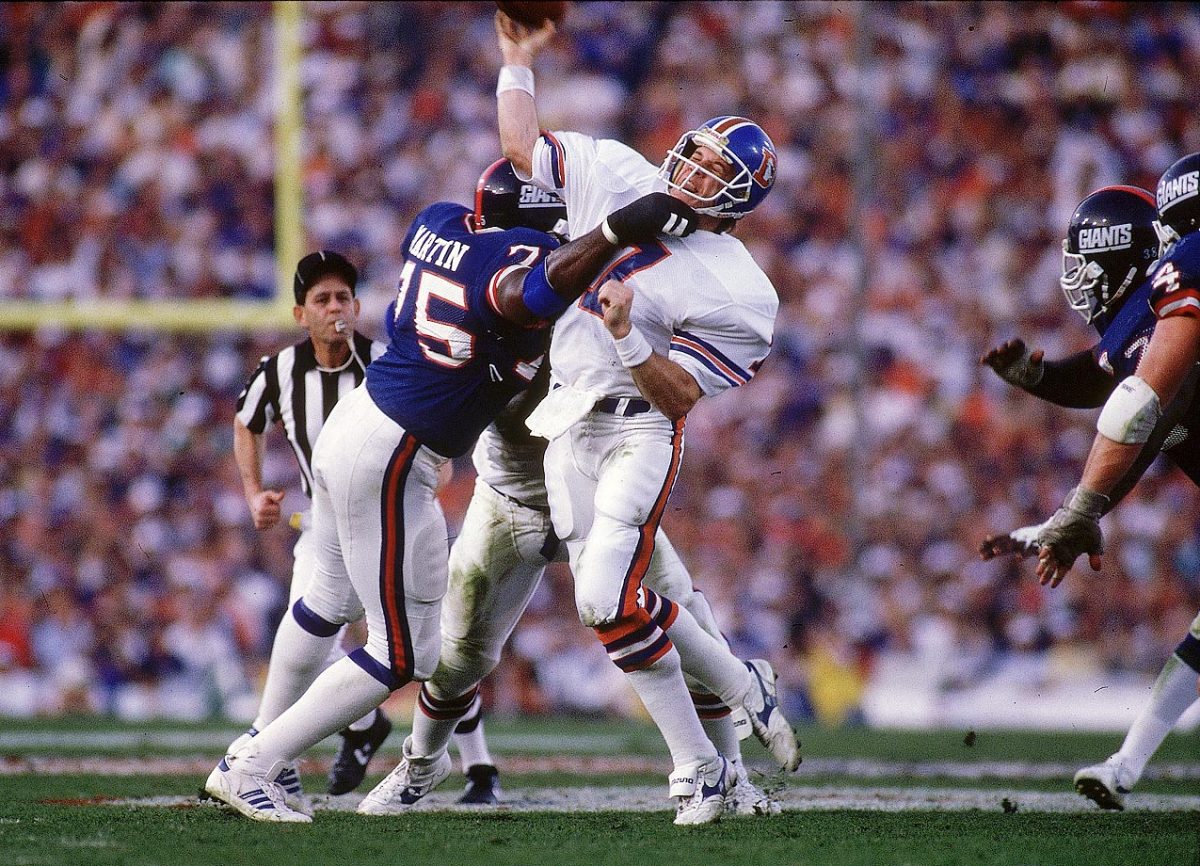
1987 George Martin gets to John Elway. His sack on Elway for a safety accounted for the only points scored in the second quarter of Super Bowl XXI.
Super Bowl XXII, Jan. 31, 1988: Washington 42, Denver 10, at San Diego
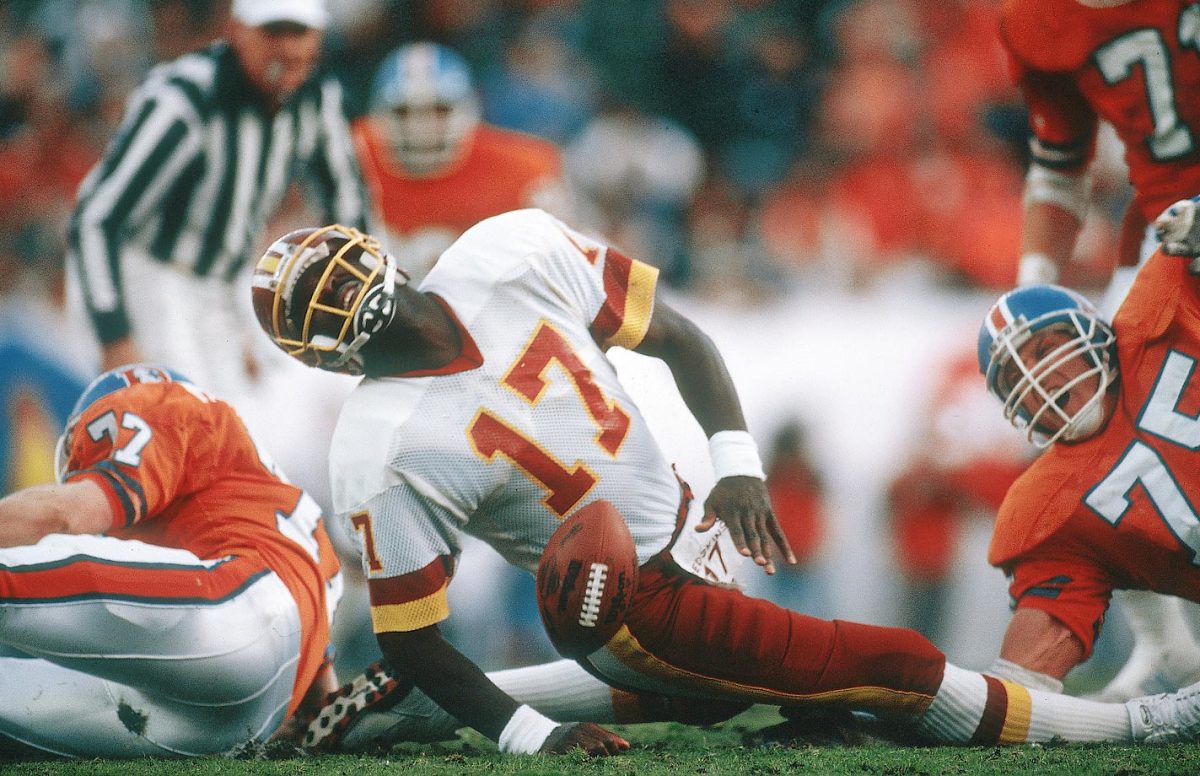
Doug Williams overcame this gruesome hit to finish with four touchdown passes and MVP honors as the Redskins overcame a 10-0 deficit.
Super Bowl XXII, Jan. 31, 1988: Washington 42, Denver 10, at San Diego
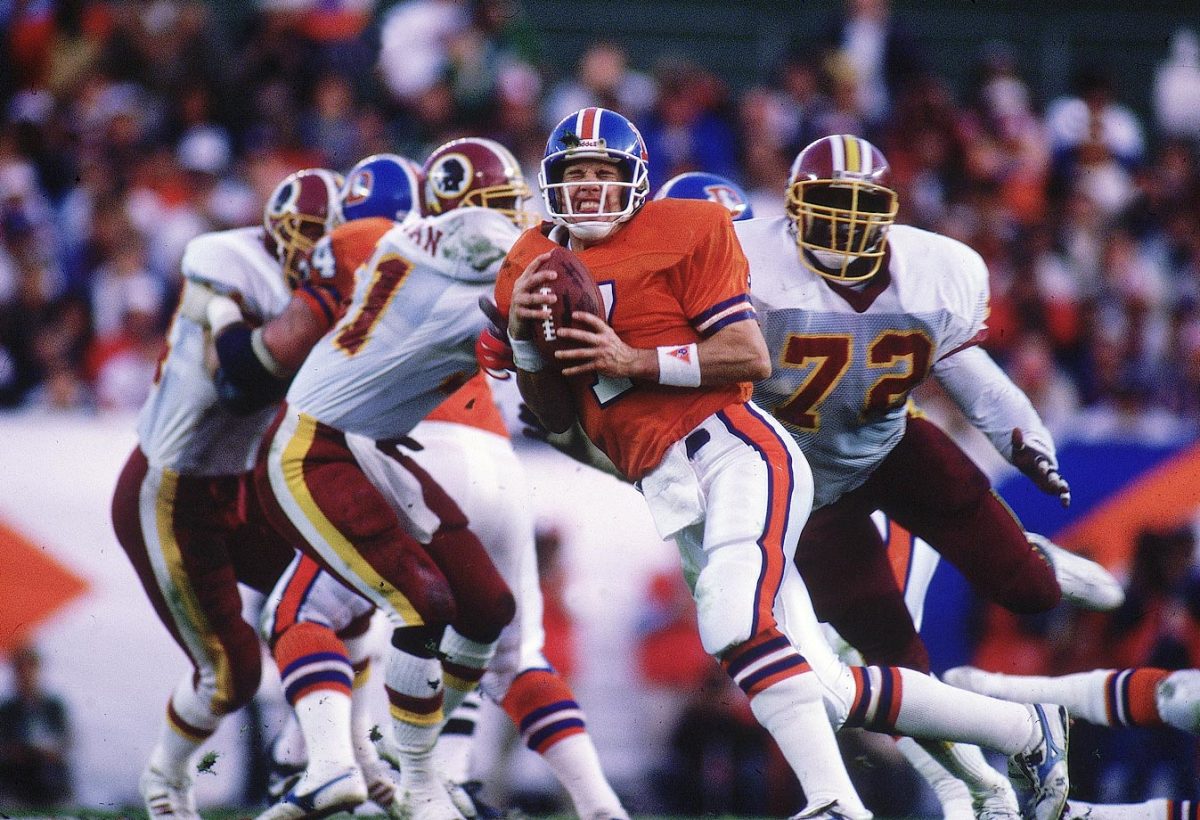
Dexter Manley (72) and the Redskins combined to sack John Elway five times and intercept him three times.
Super Bowl XXIII, Jan. 22, 1989: San Francisco 20, Cincinnati 16, at Miami
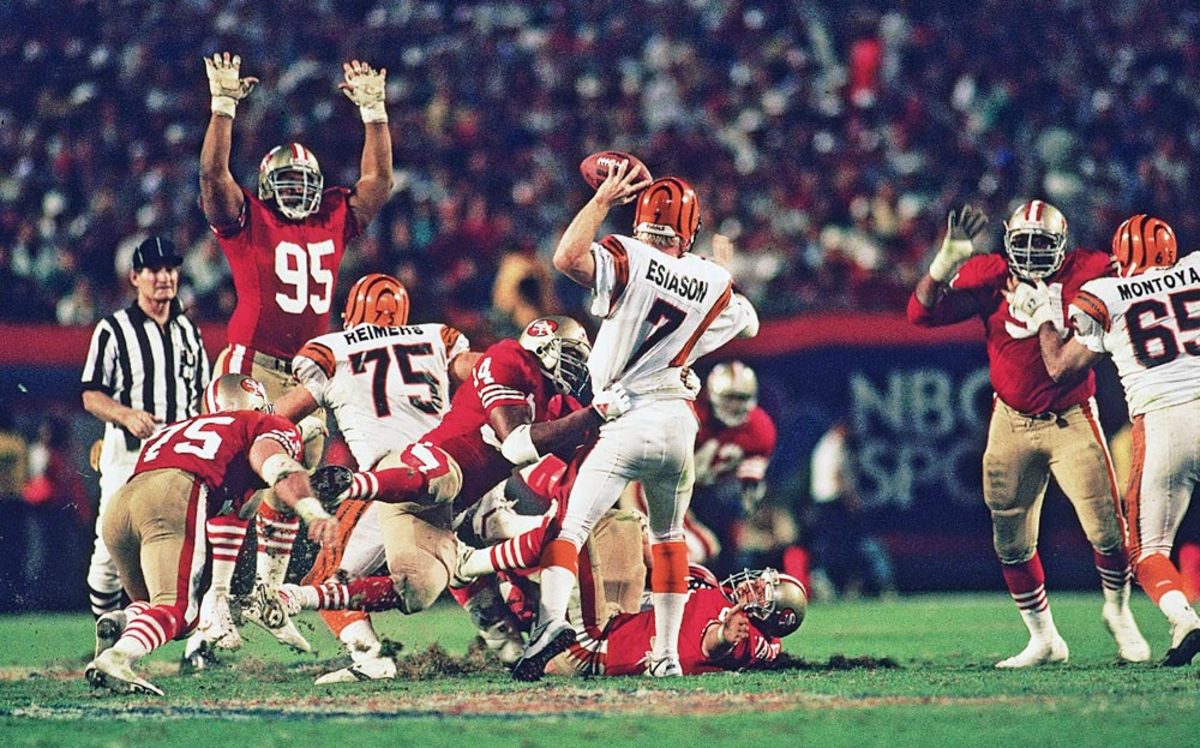
San Francisco defensive tackle Michael Carter and the 49ers limited Boomer Esiason to just 11-of-25 passing and 144 yards with no touchdowns and one interception in the 20-16 win.
Super Bowl XXIV, Jan. 28, 1990: San Francisco 55, Denver 10, at New Orleans
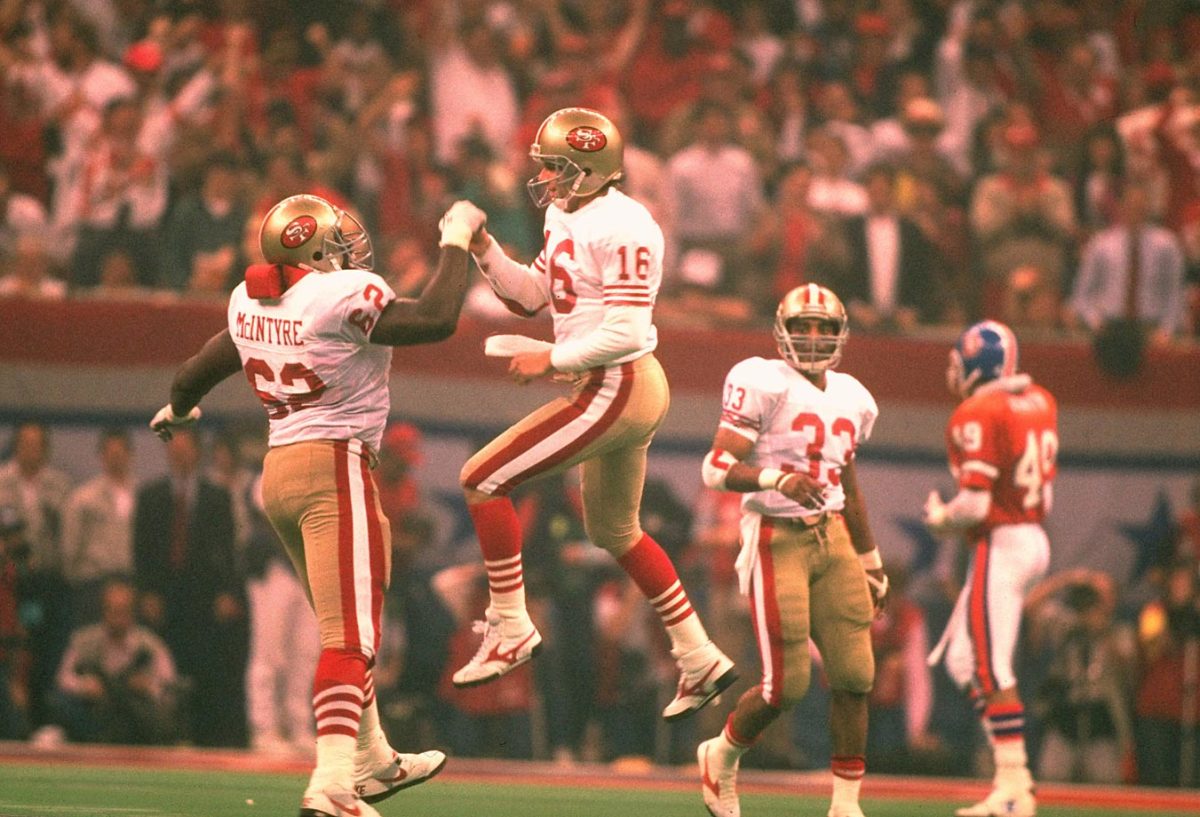
San Francisco quarterback Joe Montana and Guy McIntyre celebrate during their 45 point win over Denver -- the most lopsided in Super Bowl history.
Super Bowl XXV, Jan. 27, 1991: N.Y. Giants 20, Buffalo 19, at Tampa
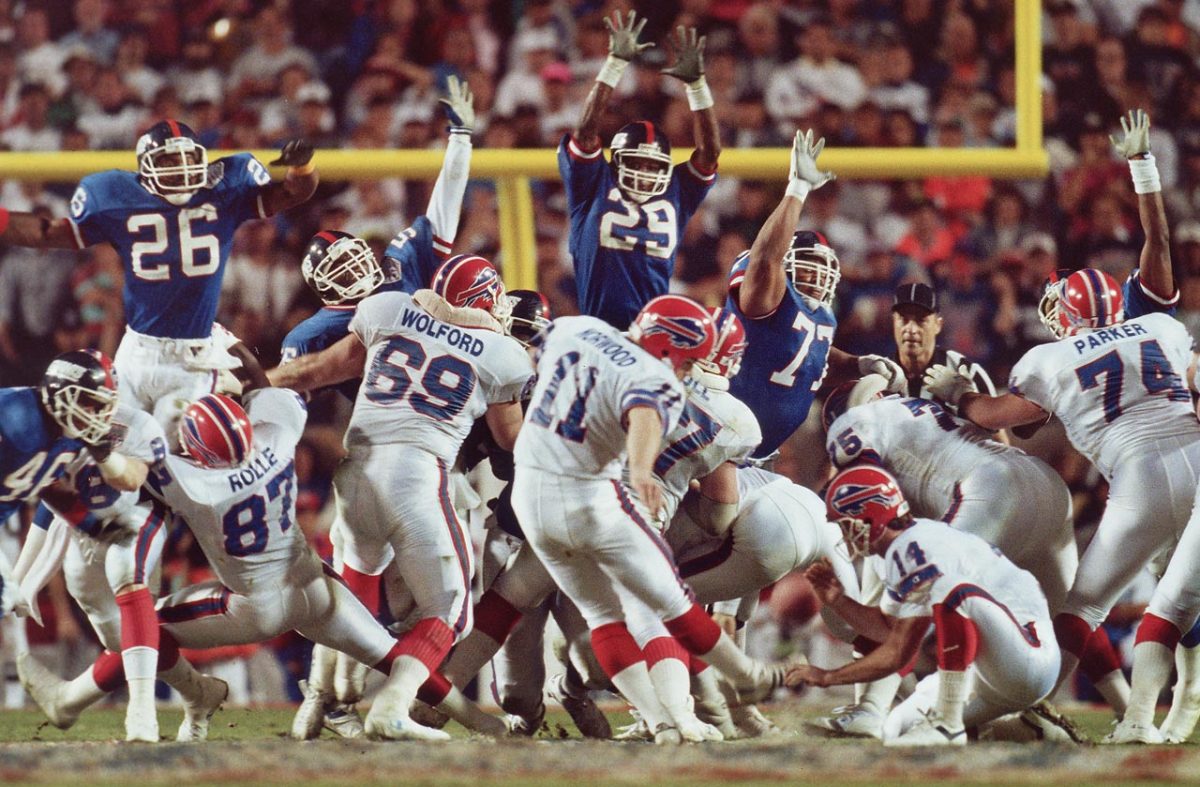
Buffalo Bills kicker Scott Norwood sends his game-winning field goal attempt wide right, securing the New York Giants' 20-19 victory.
Super Bowl XXVI, Jan. 26, 1992: Washington 37, Buffalo 24, at Minneapolis
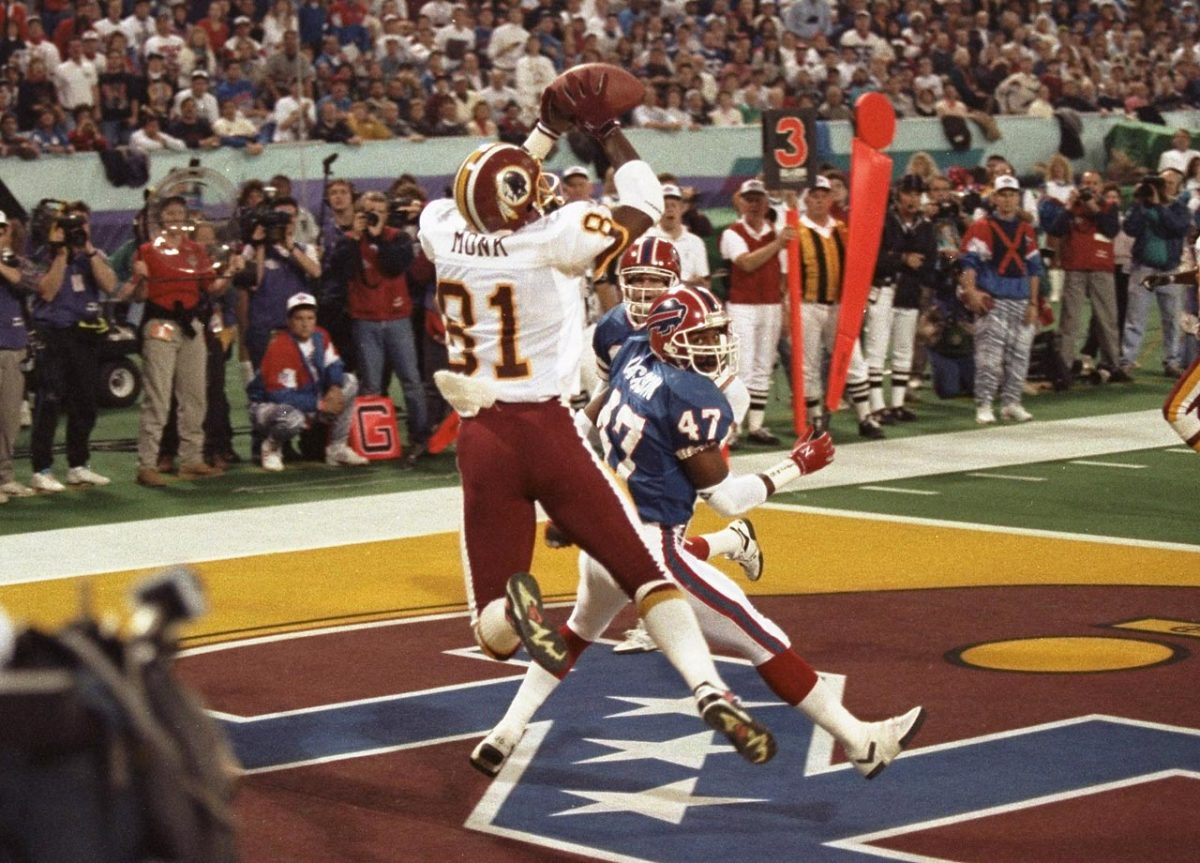
Art Monk appears to catch a touchdown pass over Buffalo cornerback Kirby Jackson. A video review overturned the call when replay revealed his foot landed out of bounds. It was the first time a touchdown was overturned by instant replay in a Super Bowl, although the Redskins went on to win 37-24.
Super Bowl XXVI, Jan. 26, 1992: Washington 37, Buffalo 24, at Minneapolis
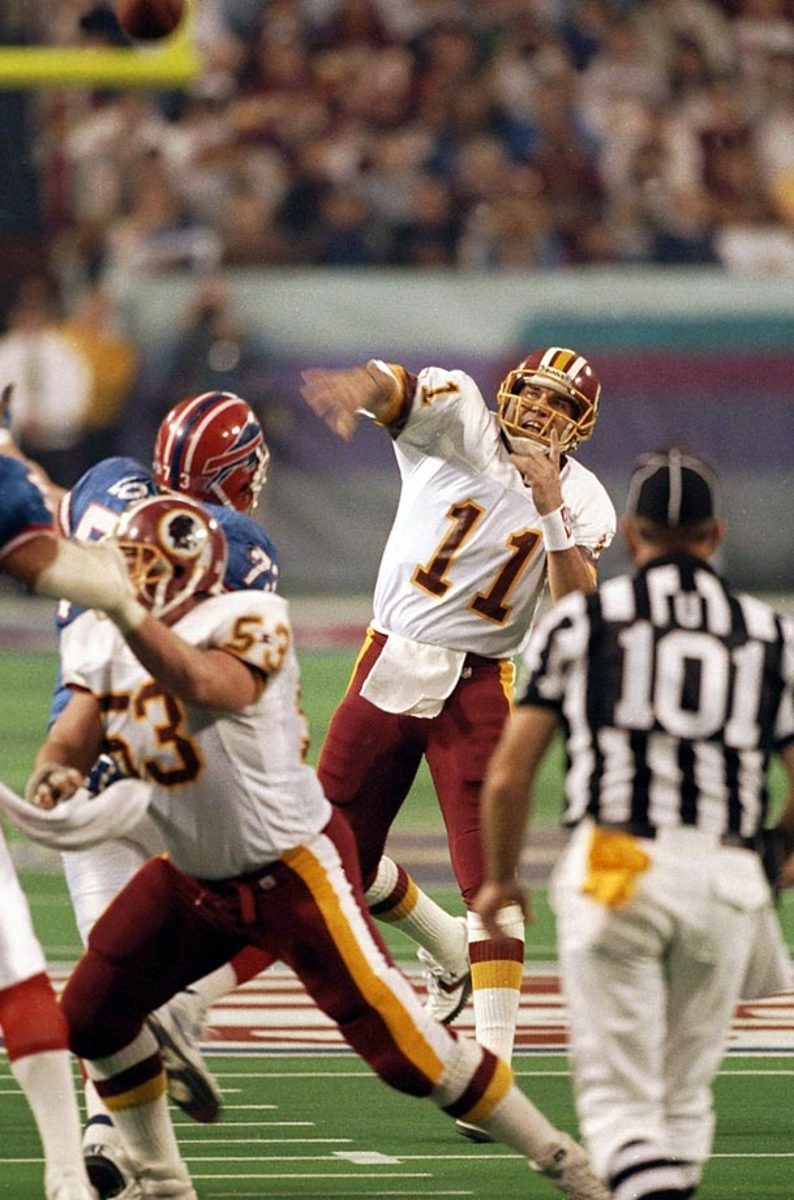
Washington quarterback Mark Rypien earned Super Bowl MVP honors against the Bills by throwing for 292 yards and two touchdowns on 18-of-33 passing.
Super Bowl XXVII, Jan. 31, 1993: Dallas 52, Buffalo 17, at Pasadena
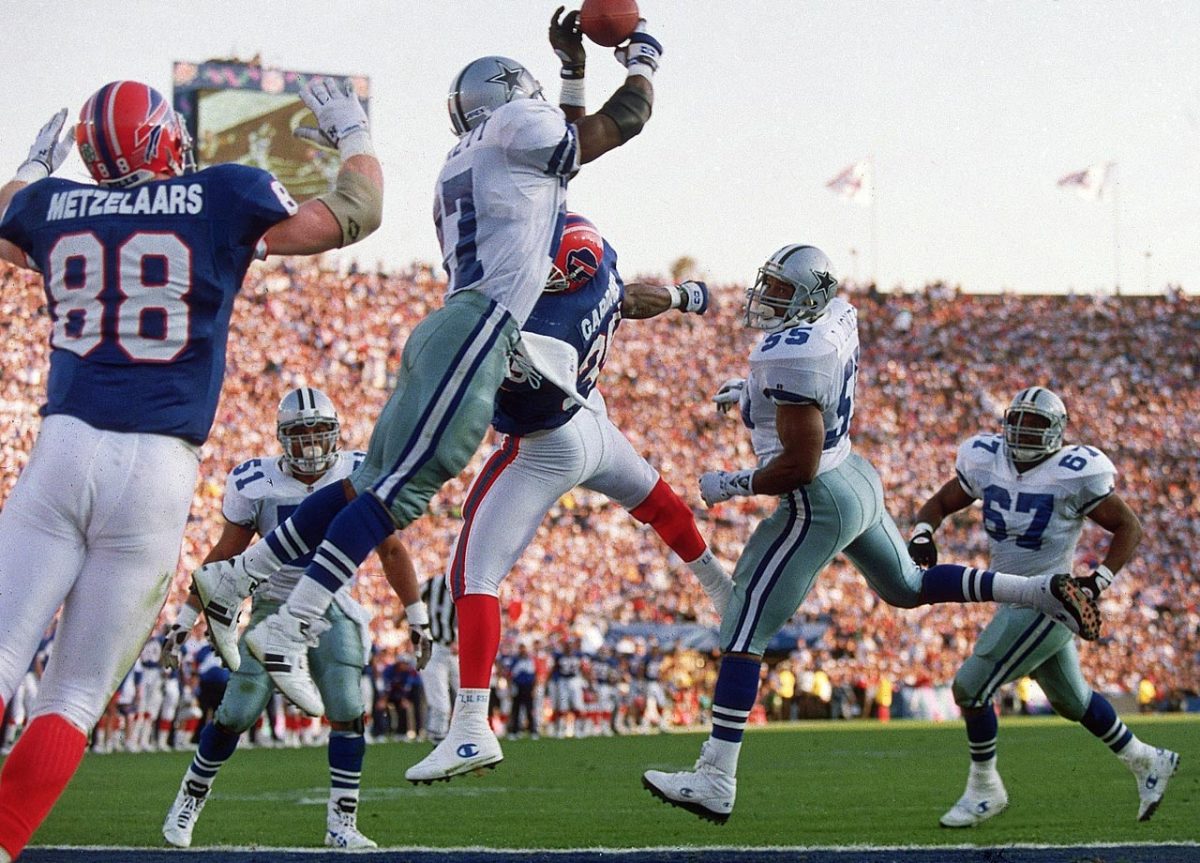
Dallas Cowboys safety Thomas Everett intercepts a pass from Buffalo quarterback Jim Kelly in the end zone on fourth down. Everett picked off two passes as the Cowboys routed the Bills 52-17.
Super Bowl XXVIII, Jan. 30, 1994: Dallas 30, Buffalo 13, at Atlanta
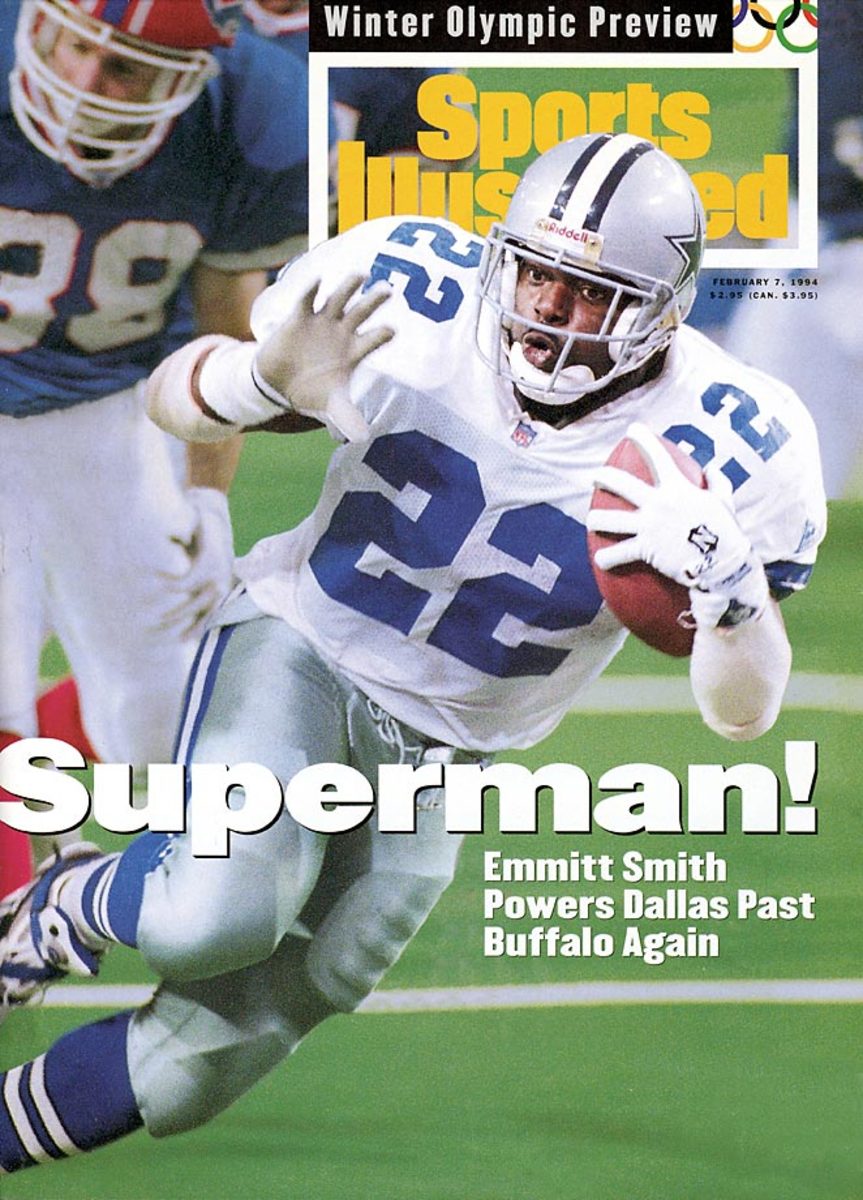
Emmitt Smith dominates the Buffalo Bills in a Super Bowl rematch, rushing for 132 yards and two touchdowns. Smith was named Super Bowl MVP as he and the Dallas Cowboys sent the Bills to their fourth straight Super Bowl defeat, 30-13.
Super Bowl XXIX, Jan. 29, 1995: San Francisco 49, San Diego 26, at Miami
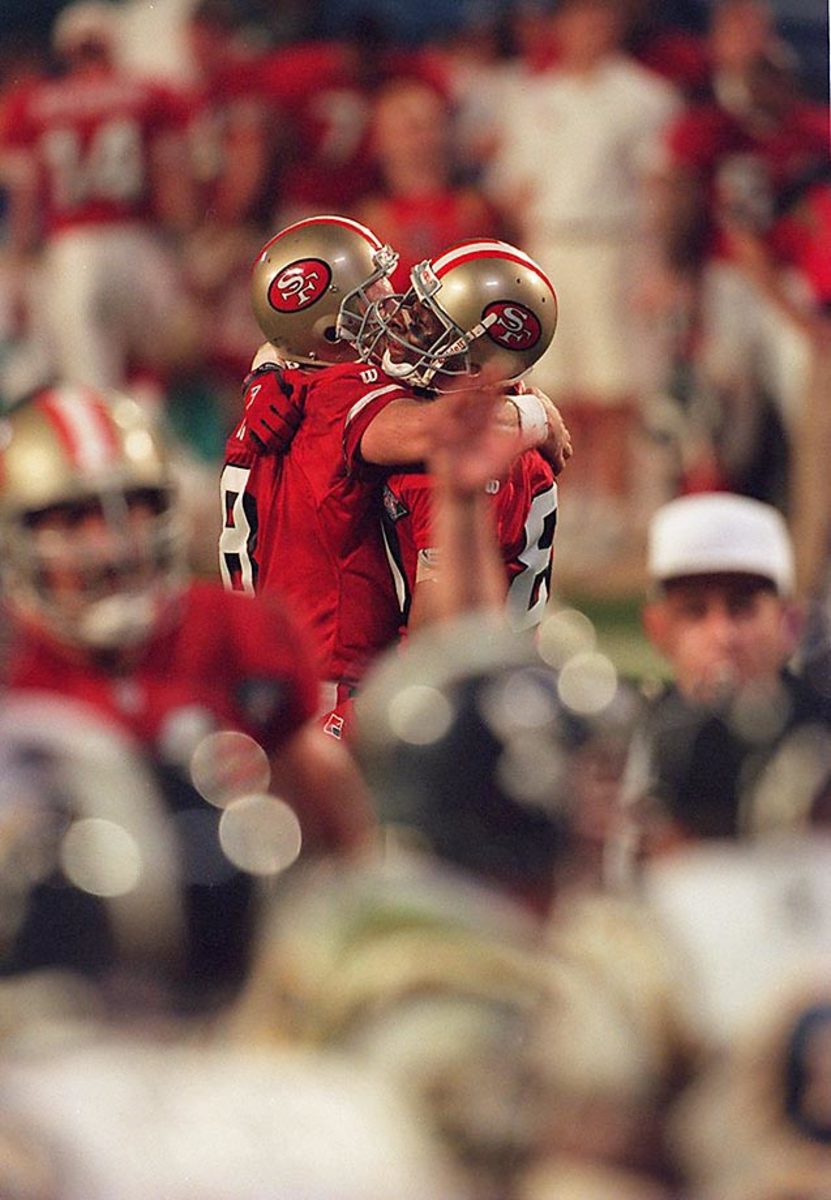
Jerry Rice and Steve Young hug it out on a day in which Young threw a Super Bowl-record six touchdown passes -- three to Rice.
Super Bowl XXX, Jan. 28, 1996: Dallas 27, Pittsburgh 17, at Tempe
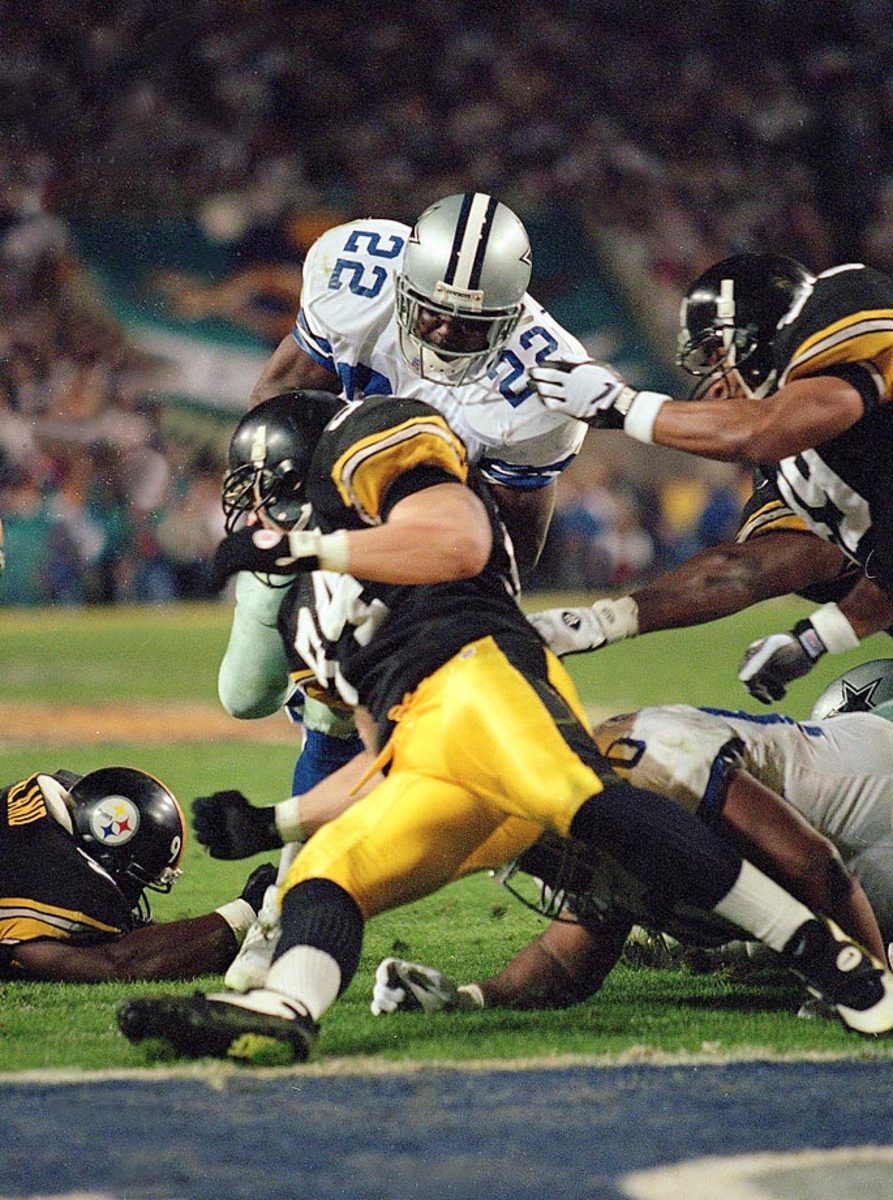
Emmitt Smith helped the Dallas Cowboys become the first team to win three Super Bowls in four years.
Super Bowl XXX, Jan. 28, 1996: Dallas 27, Pittsburgh 17, at Tempe
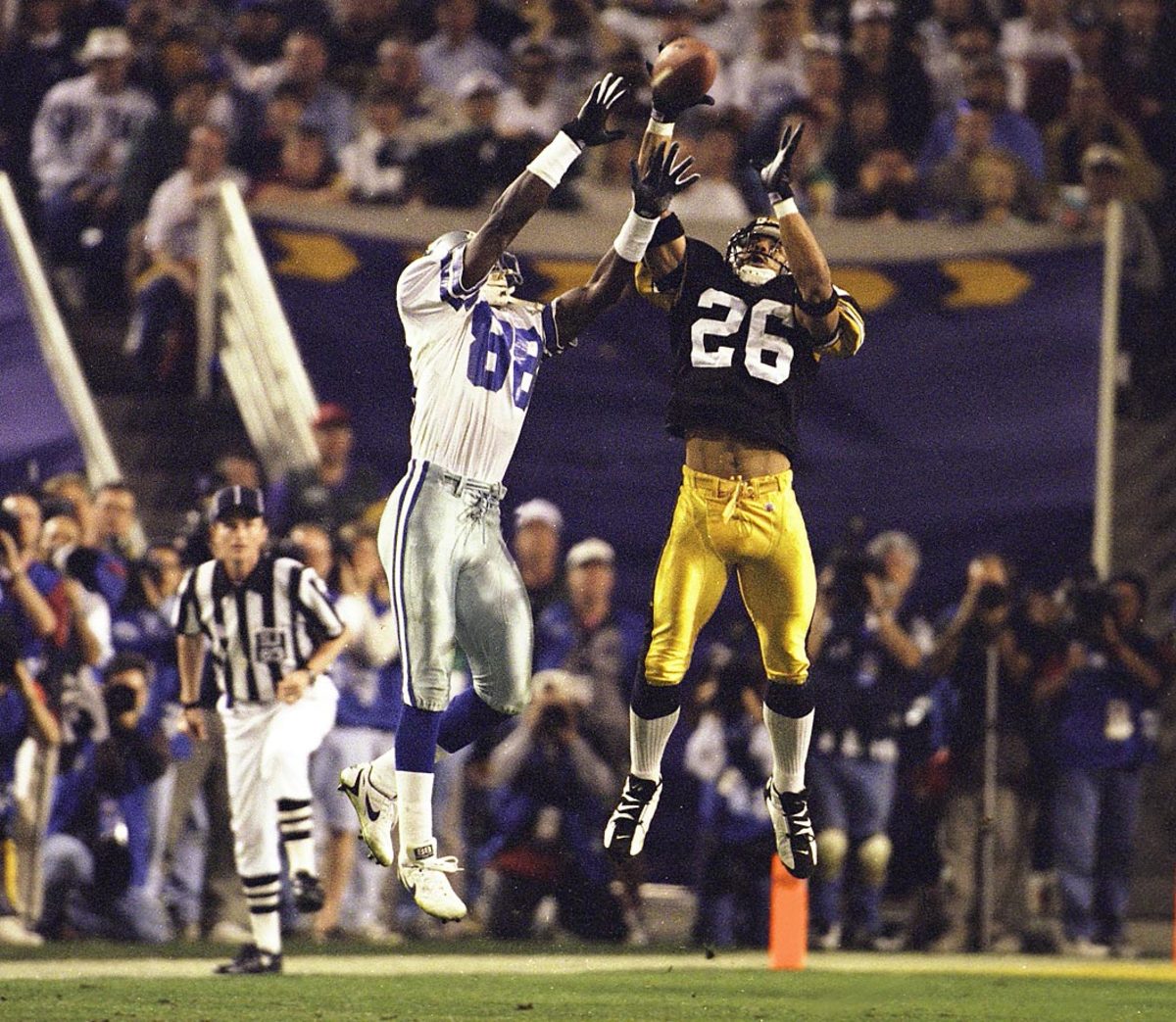
Rod Woodson (26) and Michael Irvin vie for the ball in the third Super Bowl meeting between Pittsburgh and Dallas. The loss was the Steelers first in a Super Bowl.
Super Bowl XXXI, Jan. 26, 1997: Green Bay 35, New England 21, at New Orleans
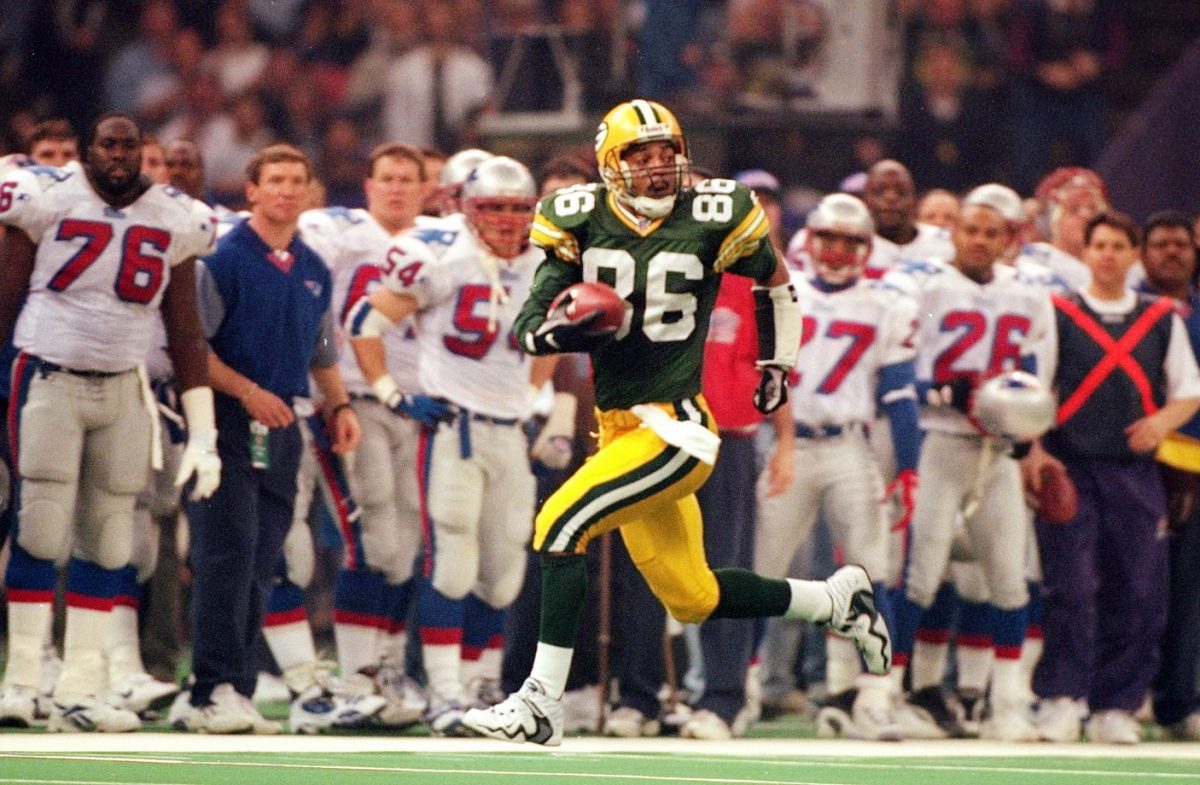
Antonio Freeman scored on a then-record 81-yard touchdown pass as Brett Favre helped the Packers win their first Super Bowl since SB II.
Super Bowl XXXI, Jan. 26, 1997: Green Bay 35, New England 21, at New Orleans
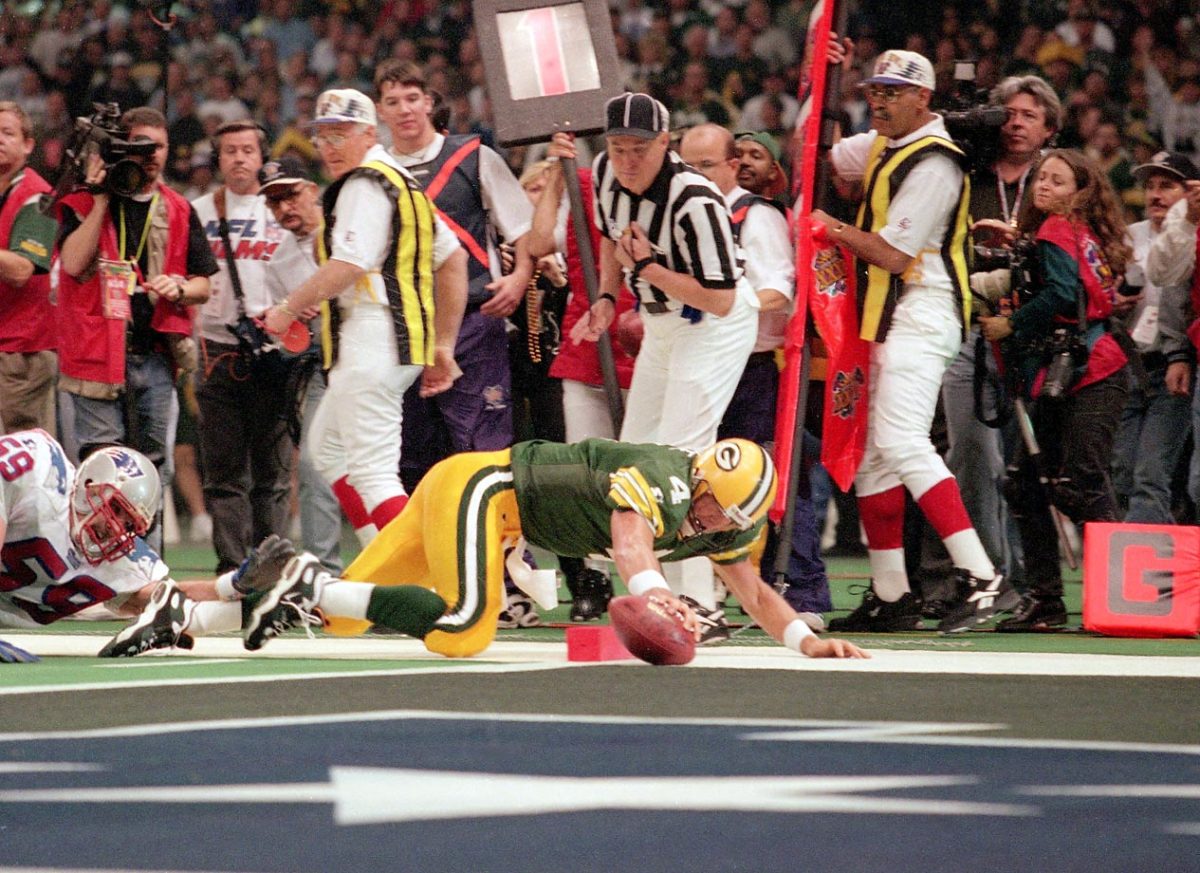
Brett Favre dives past New England Patriots linebacker Todd Collins for a touchdown in the second quarter.
Super Bowl XXXI, Jan. 26, 1997: Green Bay 35, New England 21, at New Orleans
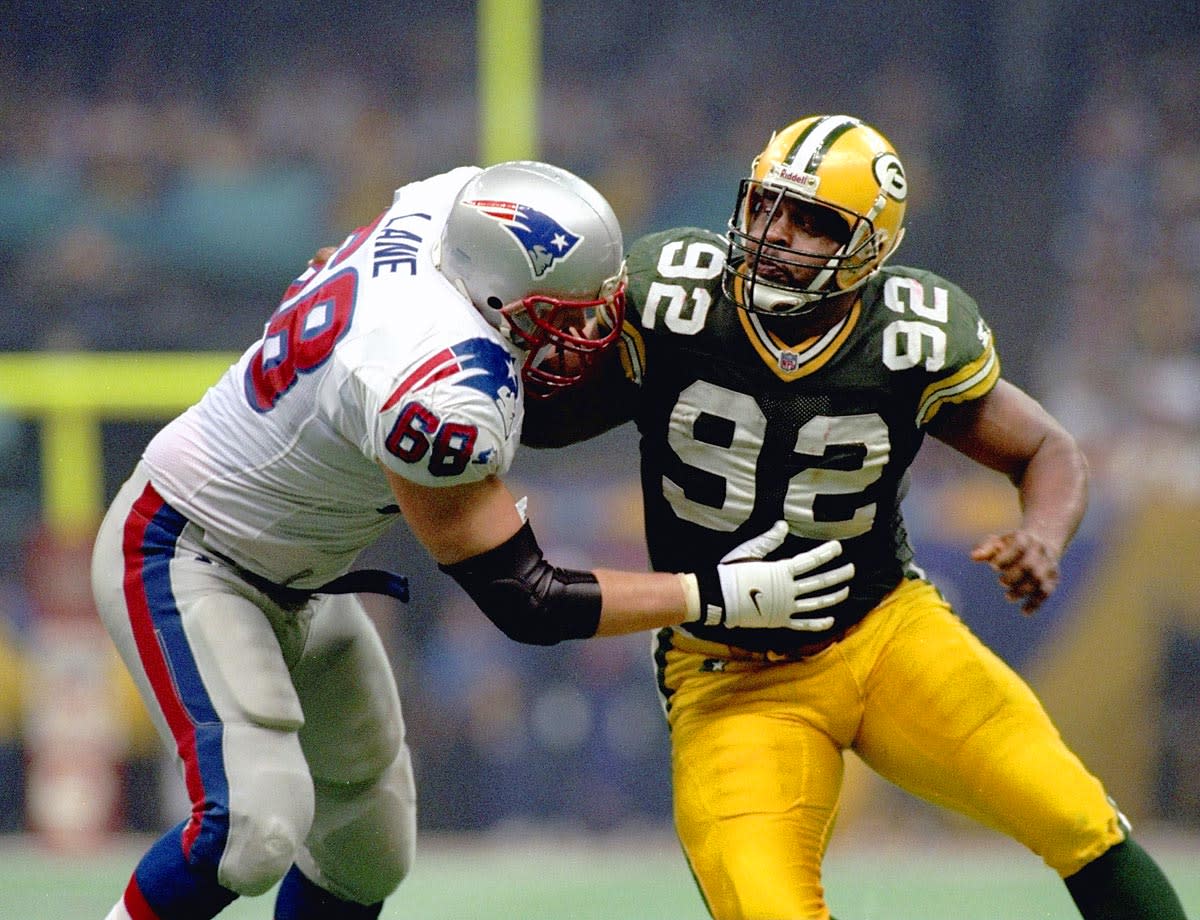
The Minister of Defense, Reggie White set a Super Bowl record with three sacks against the Patriots.
Super Bowl XXXII, Jan. 25, 1998: Denver 31, Green Bay 24, at San Diego
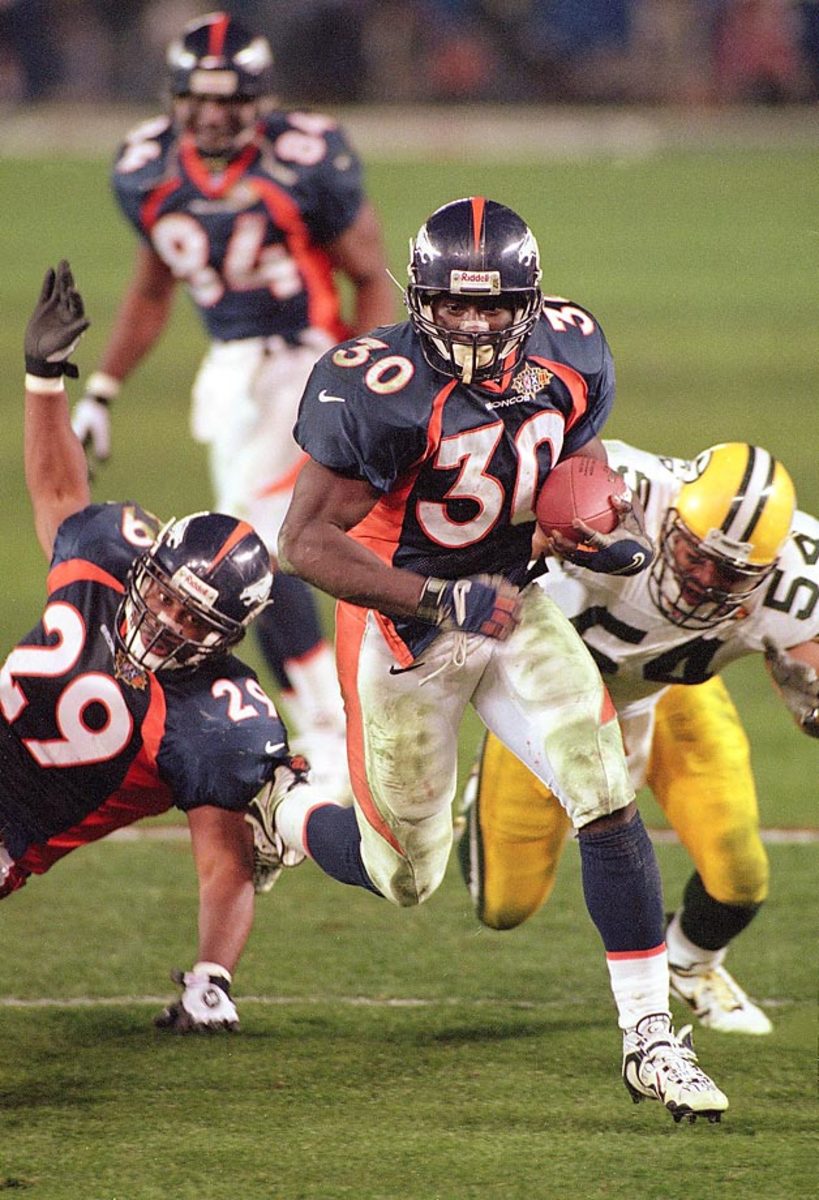
Denver Broncos running back Terrell Davis rushes past Green Bay Packers linebacker Seth Joyner. Davis missed most of the second quarter with a migraine but still rushed for 157 yards with three touchdowns to earn Super Bowl MVP in Denver's 31-24 victory.
Super Bowl XXXIII, Jan. 31, 1999: Denver 34, Atlanta 19, at Miami
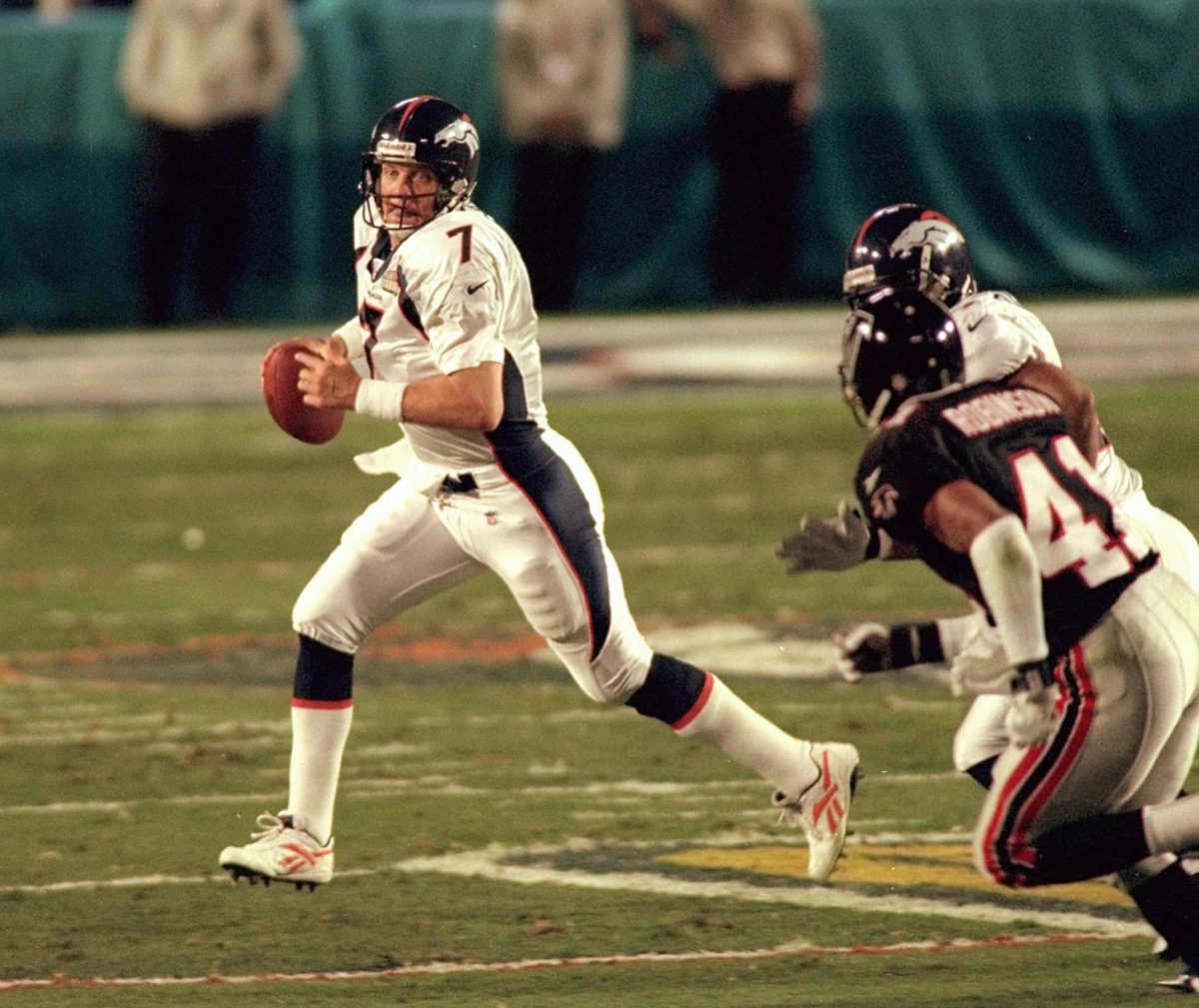
In the final game of his NFL career, John Elway, 38, became the oldest played to be named MVP of the game, completing 18 passes for 336 yards with one touchdown and one interception. He ran in for another score.
Super Bowl XXXIV, Jan. 30, 2000: St. Louis 23, Tennessee 16, at Atlanta
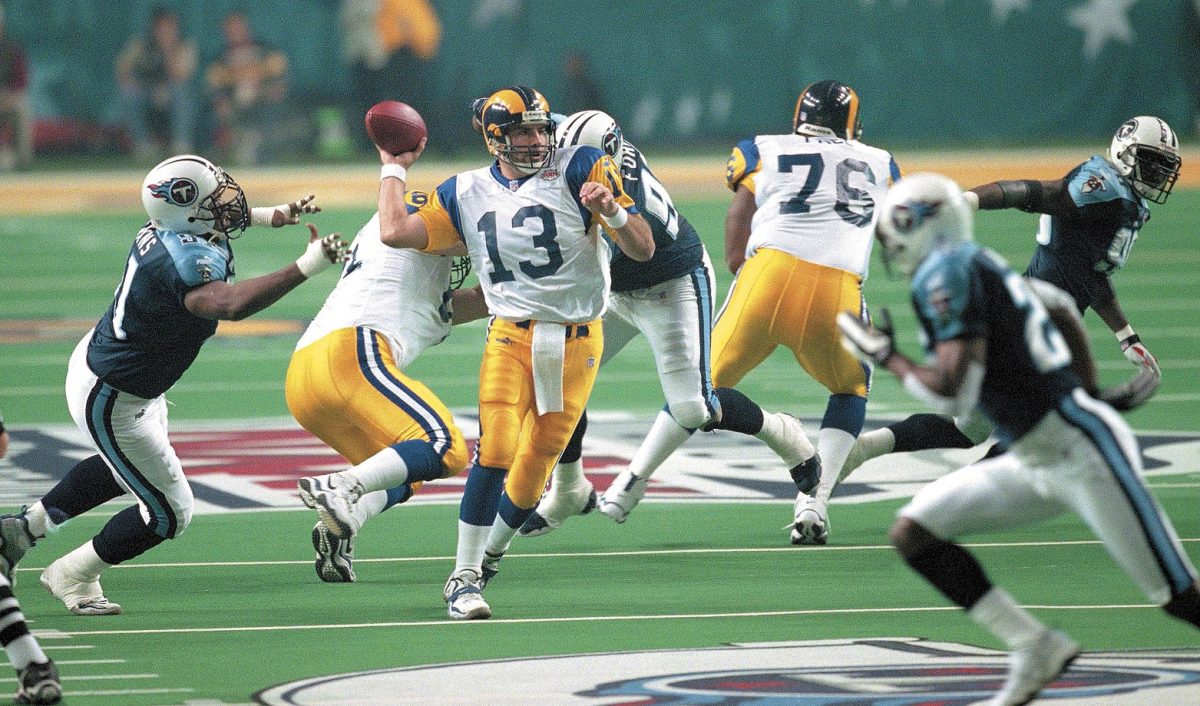
MVP Kurt Warner set Super Bowl records by passing for 414 yards and attempting 45 throws without an interception.
Super Bowl XXXV, Jan. 28, 2001: Baltimore 34, N.Y. Giants 7, at Tampa
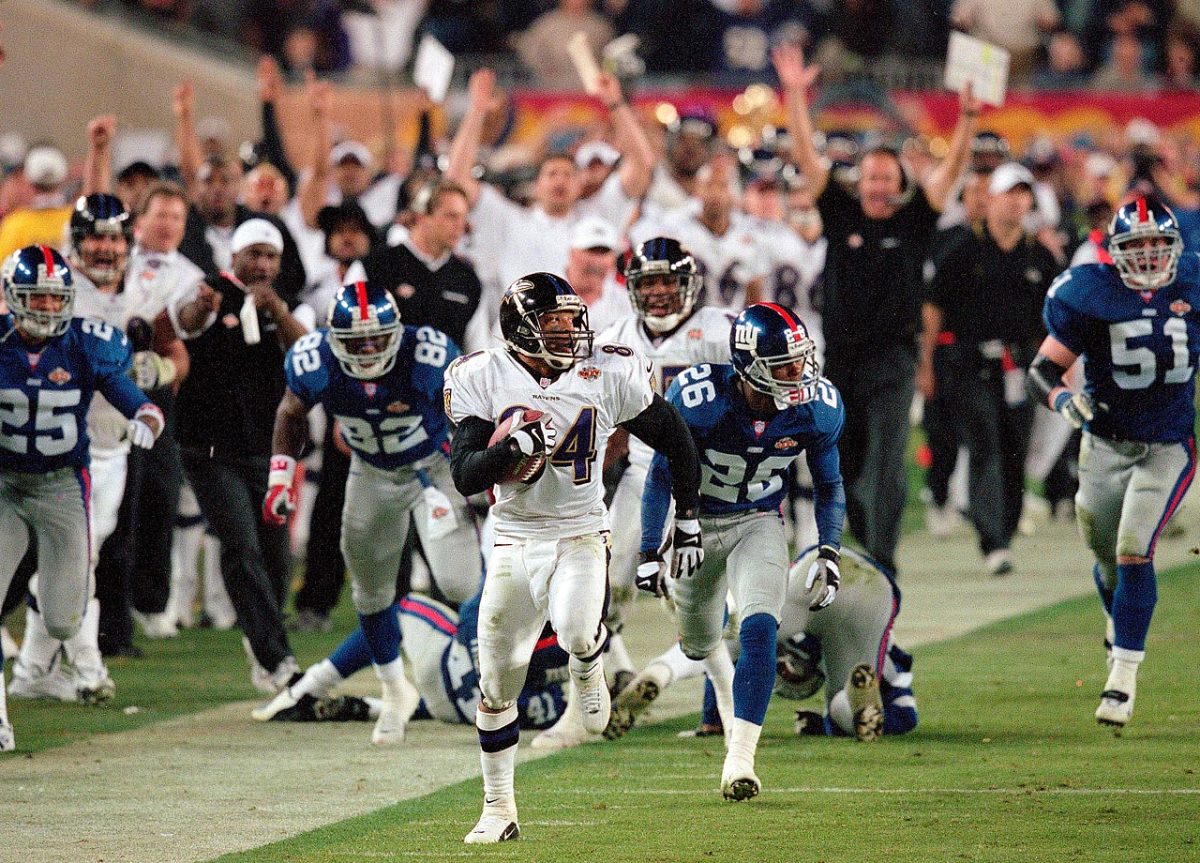
Jermaine Lewis sprinted down the right sideline for an 84-yard kickoff return, capping a dizzying spell of touchdowns in which the Ravens returned an interception and a kickoff for a touchdown and the New York Giants returned a kickoff for a touchdown on three consecutive plays. Baltimore won 34-7.
Super Bowl XXXVI, Feb. 3, 2002: New England 20, St. Louis 17, at New Orleans
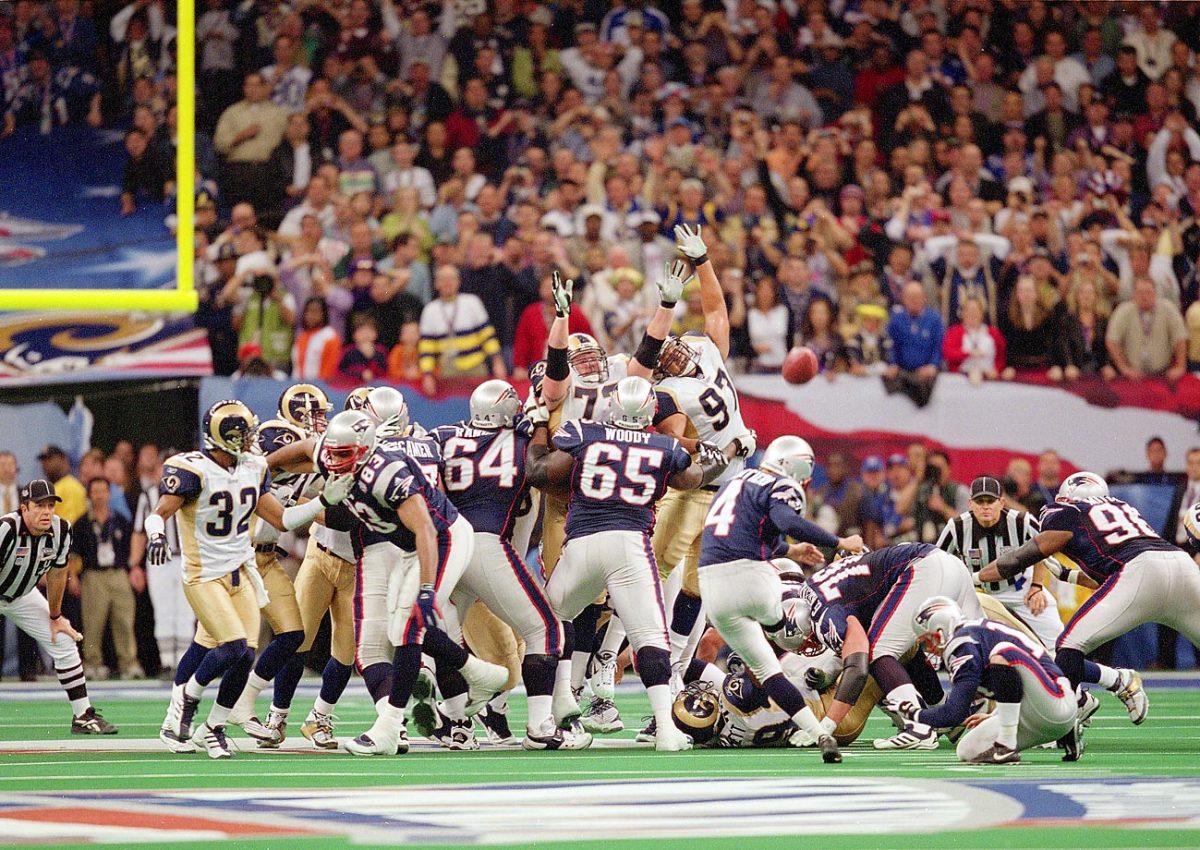
Adam Vinatieri kicks the game-winning field goal from 48 yards out to lift the Patriots over the Rams in the first Super Bowl played in a February.
Super Bowl XXXVII, Jan. 26, 2003: Tampa Bay 48, Oakland 21, at San Diego
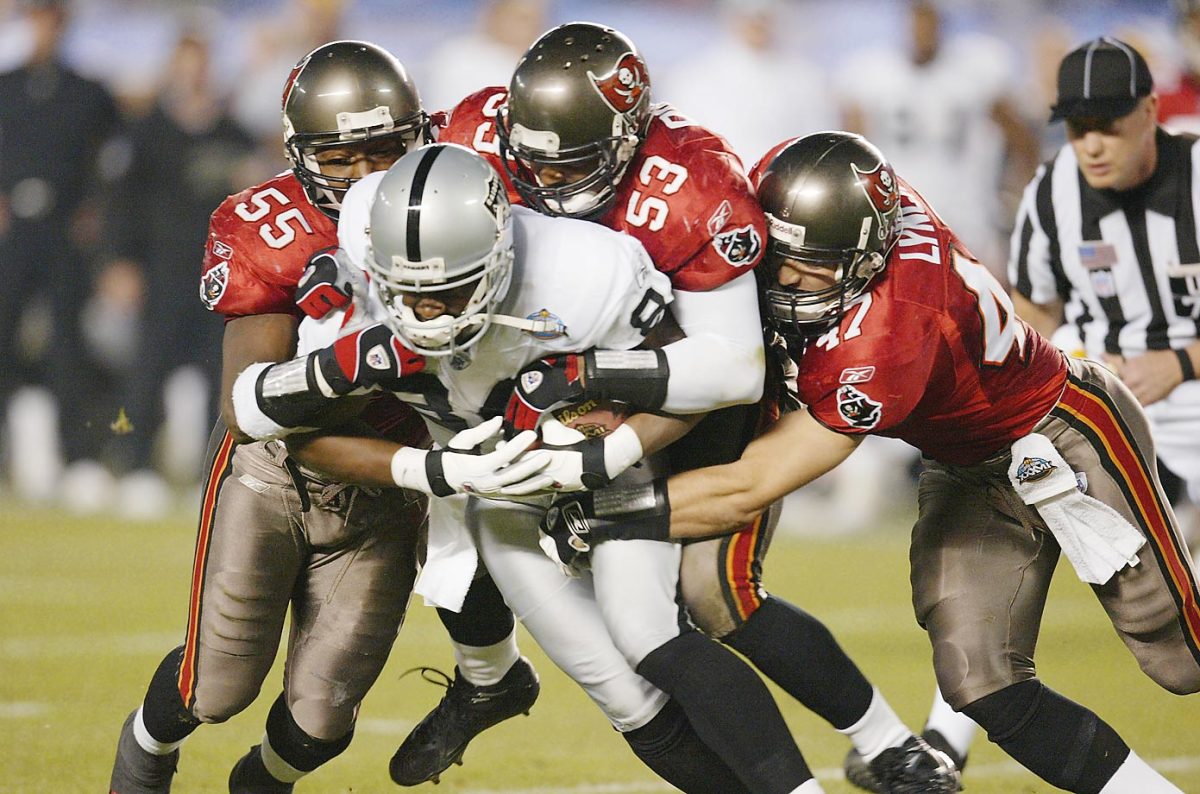
The Buccaneers sacked Rich Gannon five times and returned three of his record-setting five interceptions for touchdowns in the Gruden Bowl.
Super Bowl XXXVIII, Feb. 1, 2004: New England 32, Carolina 29, at Houston
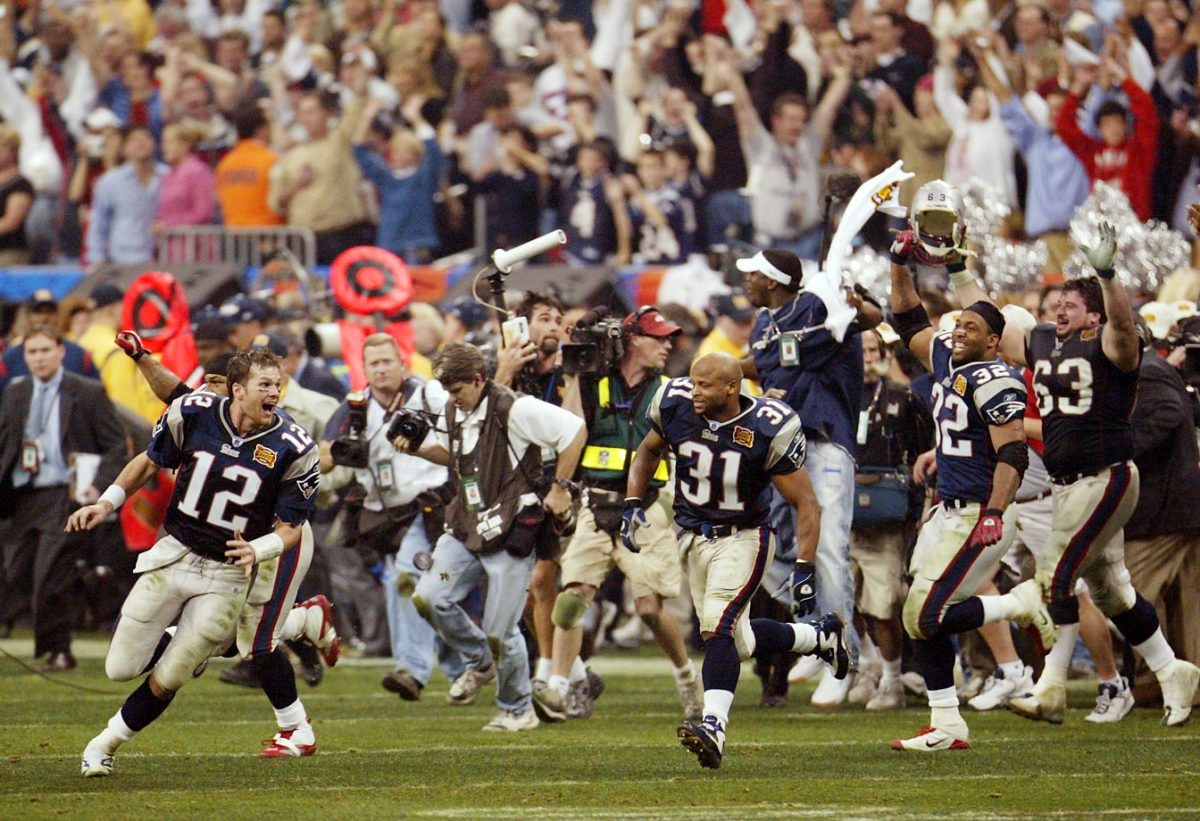
Tom Brady lead the Patriots in celebration at the conclusion of their victory over Carolina. The game was decided on a 41-yard field goal by Adam Vinatieri with four seconds remaining.
Super Bowl XXXIX, Feb. 6, 2005: New England 24, Philadelphia 21, at Jacksonville
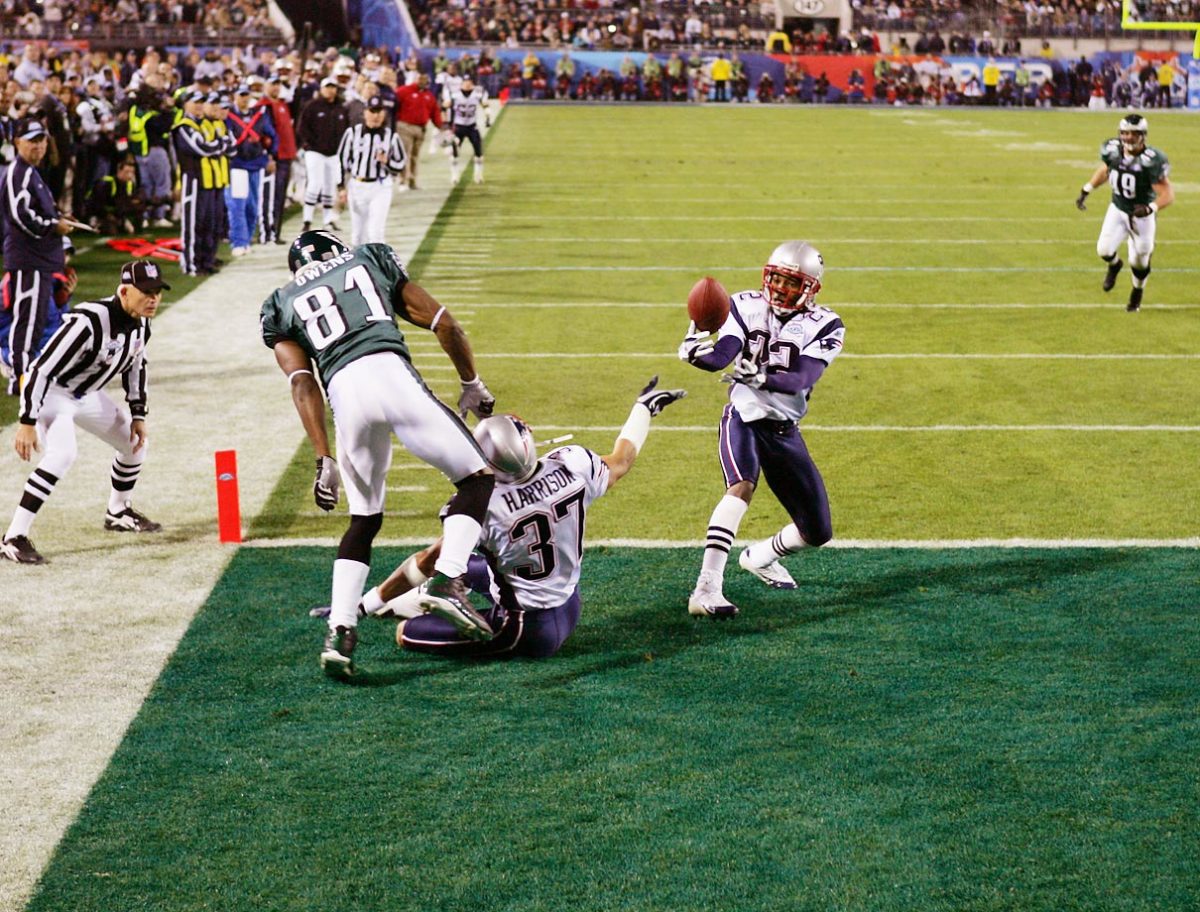
The Patriots came up with three interceptions against Donovan McNabb and the Eagles en route to their third Super Bowl victory in four years.
Super Bowl XXXIX, Feb. 6, 2005: New England 24, Philadelphia 21, at Jacksonville
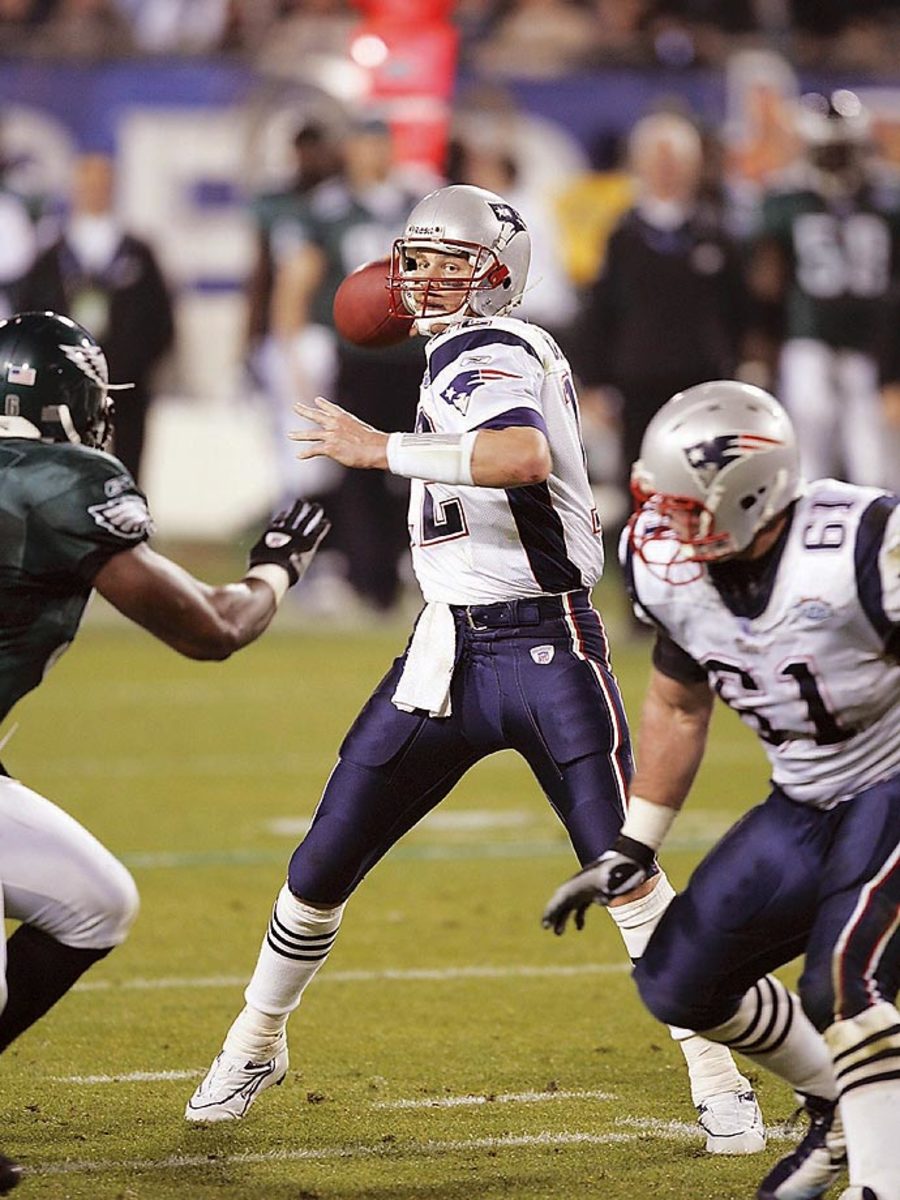
Tom Brady completed 23 of 33 passes for 236 yards and two touchdowns in the first Super Bowl to go into the fourth quarter with both teams tied on the scoreboard.
Super Bowl XL, Feb. 5, 2006: Pittsburgh 21, Seattle 10, at Detroit
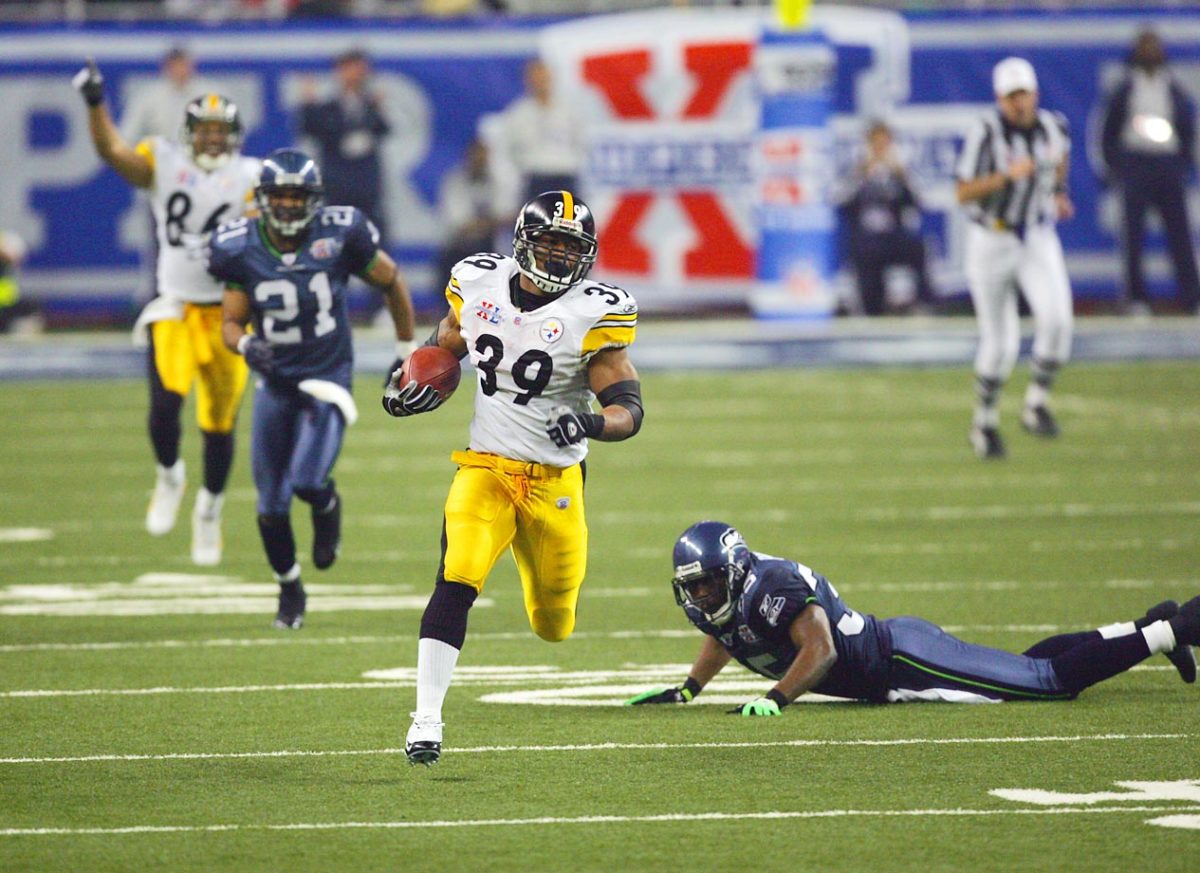
Willie Parker set a Super Bowl record with his 75-yard scoring run, which gave Pittsburgh a 14-3 lead.
Super Bowl XLI, Feb. 4, 2007: Indianapolis 29, Chicago 17, at Miami
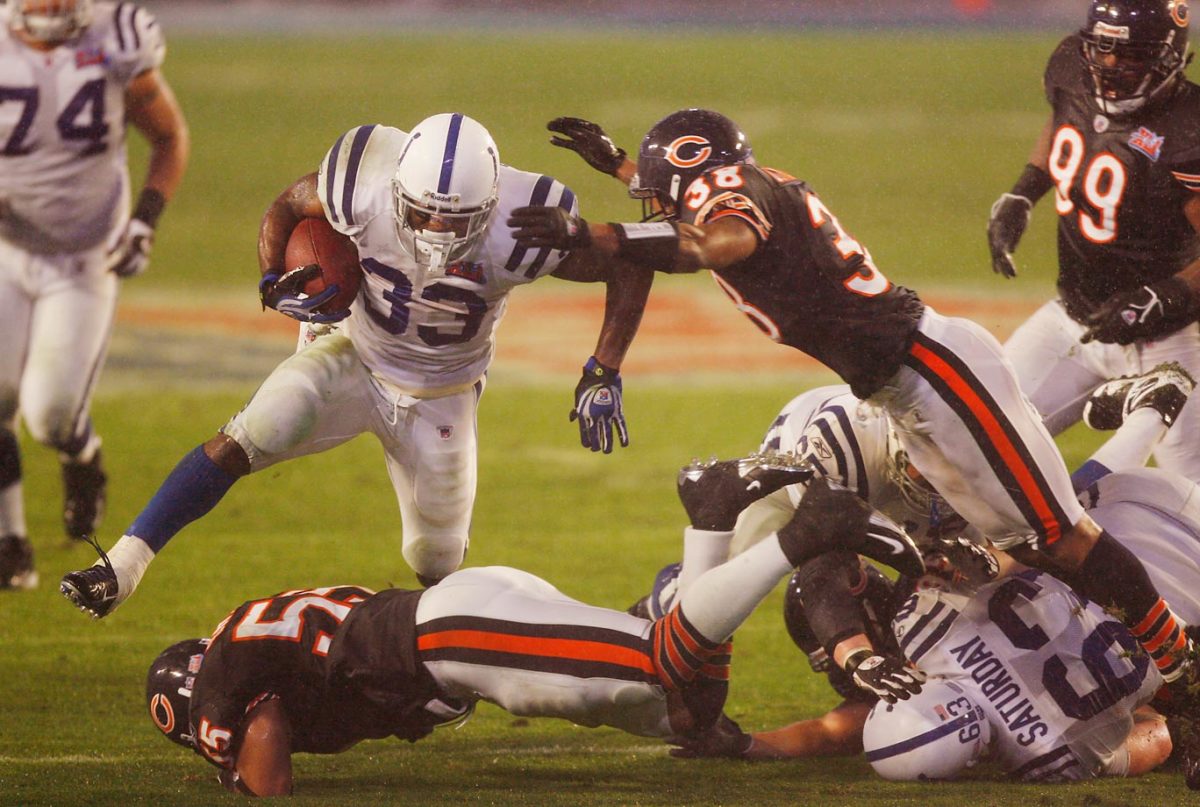
Dominic Rhodes ran for 113 yards and a touchdown to help the Colts win their only Super Bowl.
Super Bowl XLI, Feb. 4, 2007: Indianapolis 29, Chicago 17, at Miami
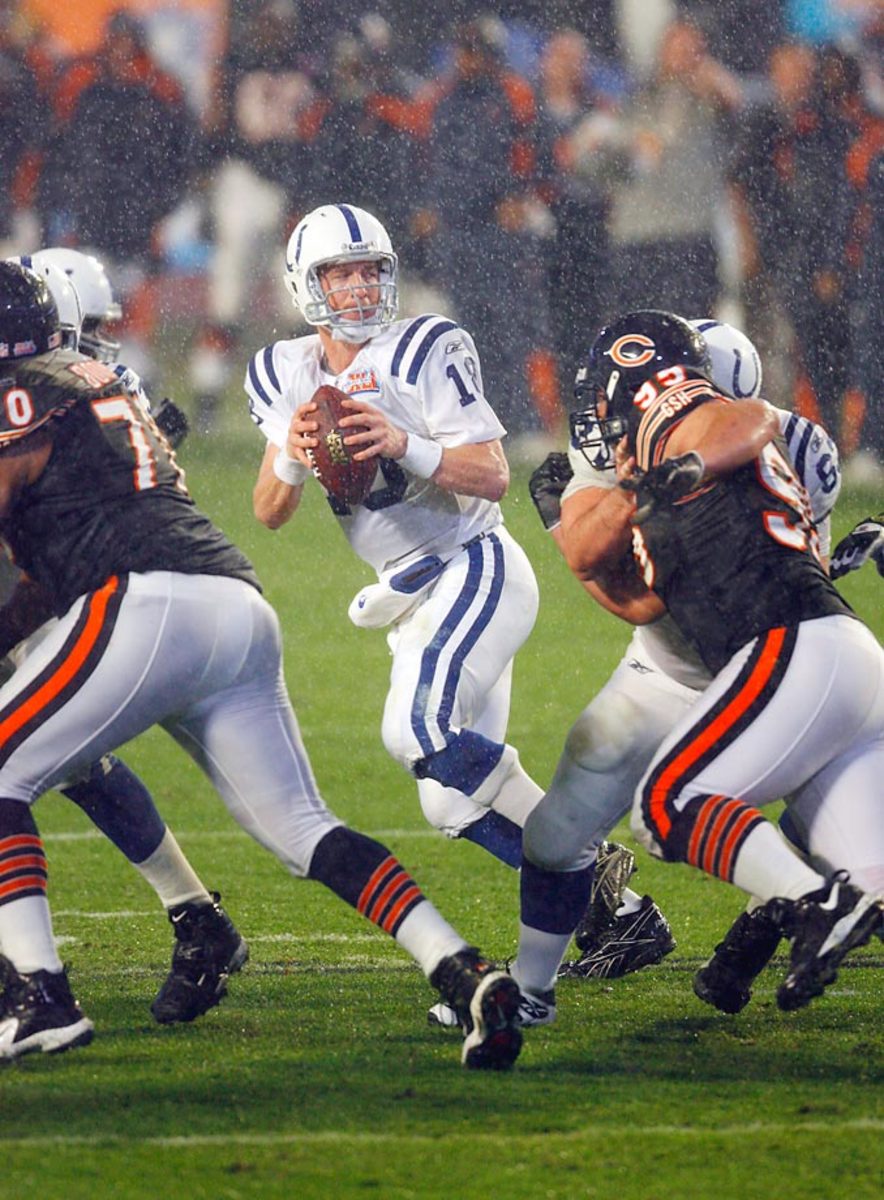
Peyton Manning completed 25 of 38 passes for 247 yards, one touchdown and one interception to take home MVP honors against the Bears.
Super Bowl XLII, Feb. 3, 2008: N.Y. Giants 17, New England 14, at Glendale
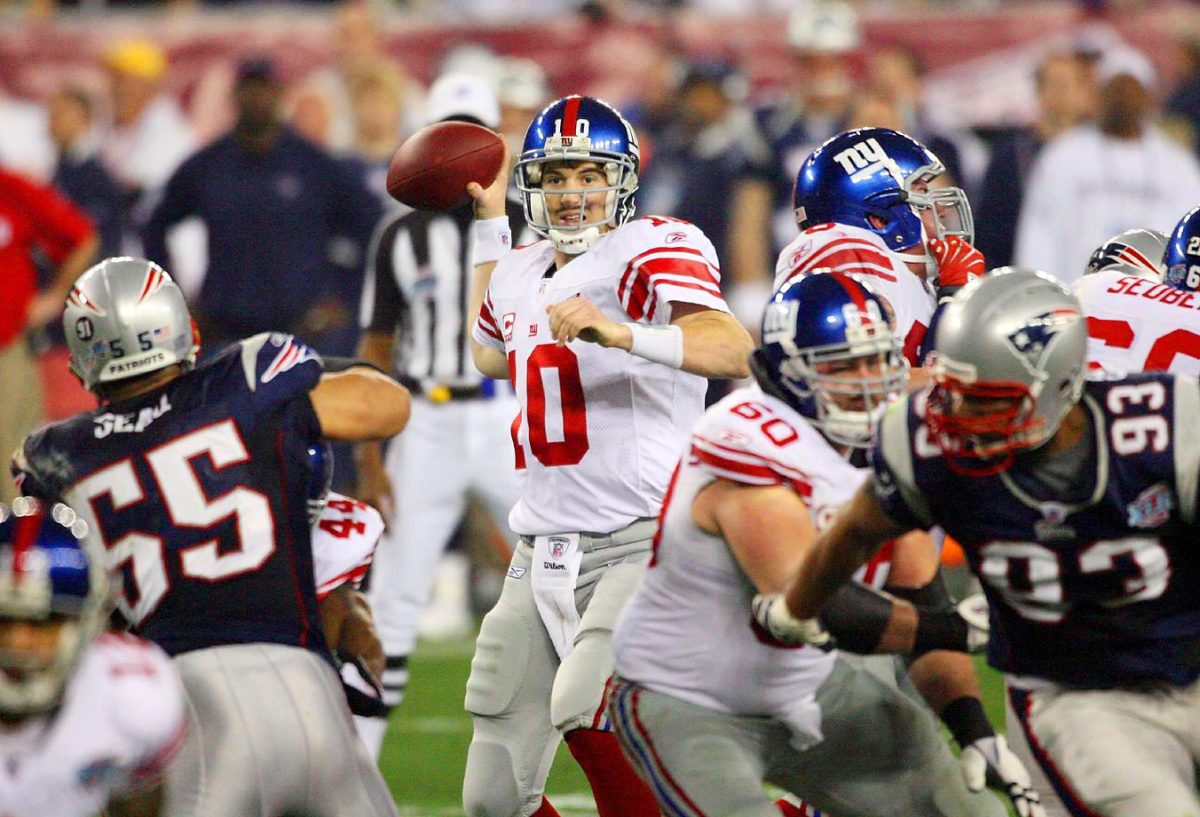
Eli Manning kept the Super Bowl trophy with the Manning family by helping the Giants knock off the previously undefeated New England Patriots.
Super Bowl XLIII, Feb. 1, 2009: Pittsburgh 27, Arizona 23, at Tampa
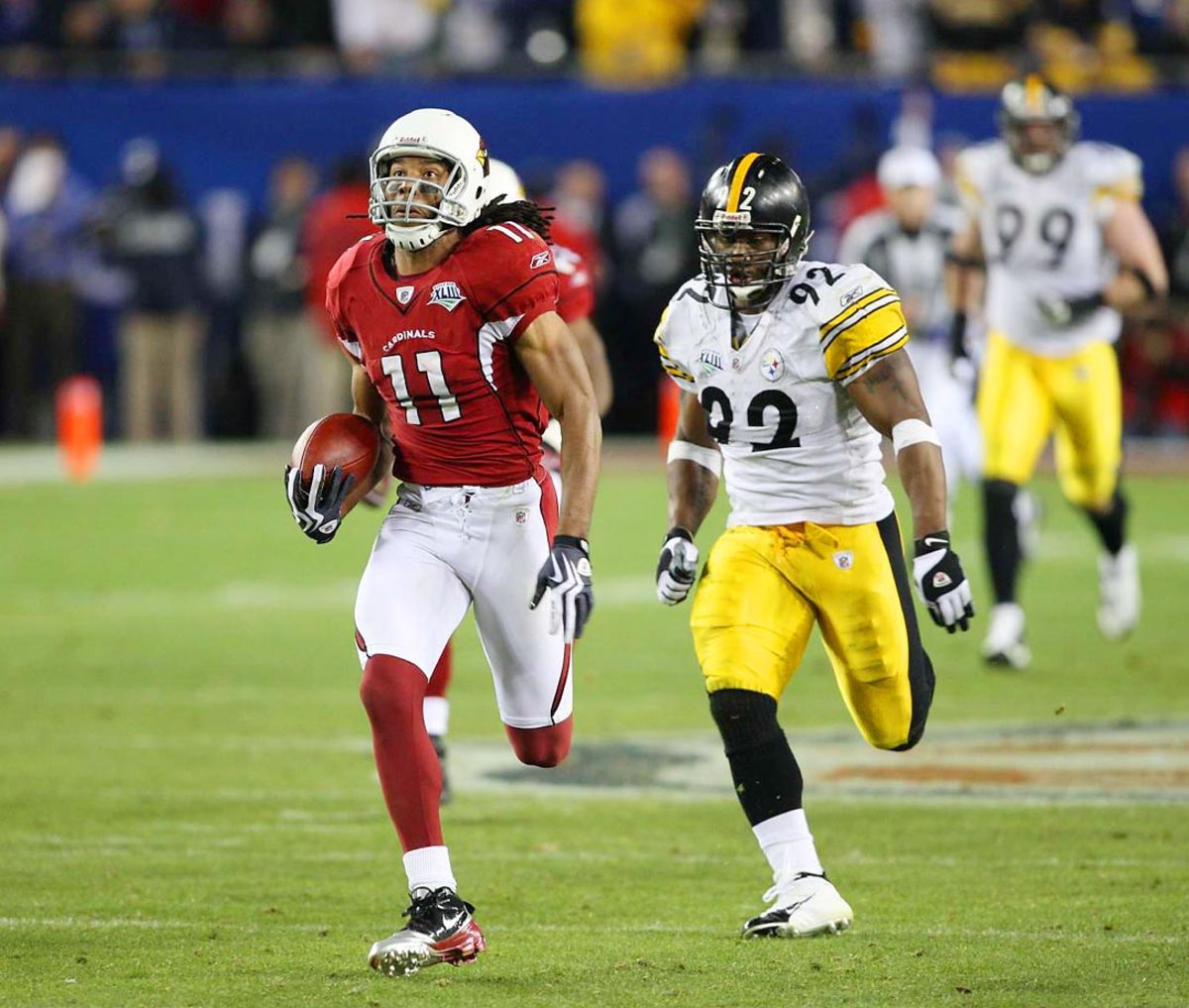
Larry Fitzgerald breaks away for a touchdown after a fourth-quarter reception behind James Harrison (92).
Super Bowl XLIV,, Feb. 7, 2010: New Orleans 31, Indianapolis 17, at Miami
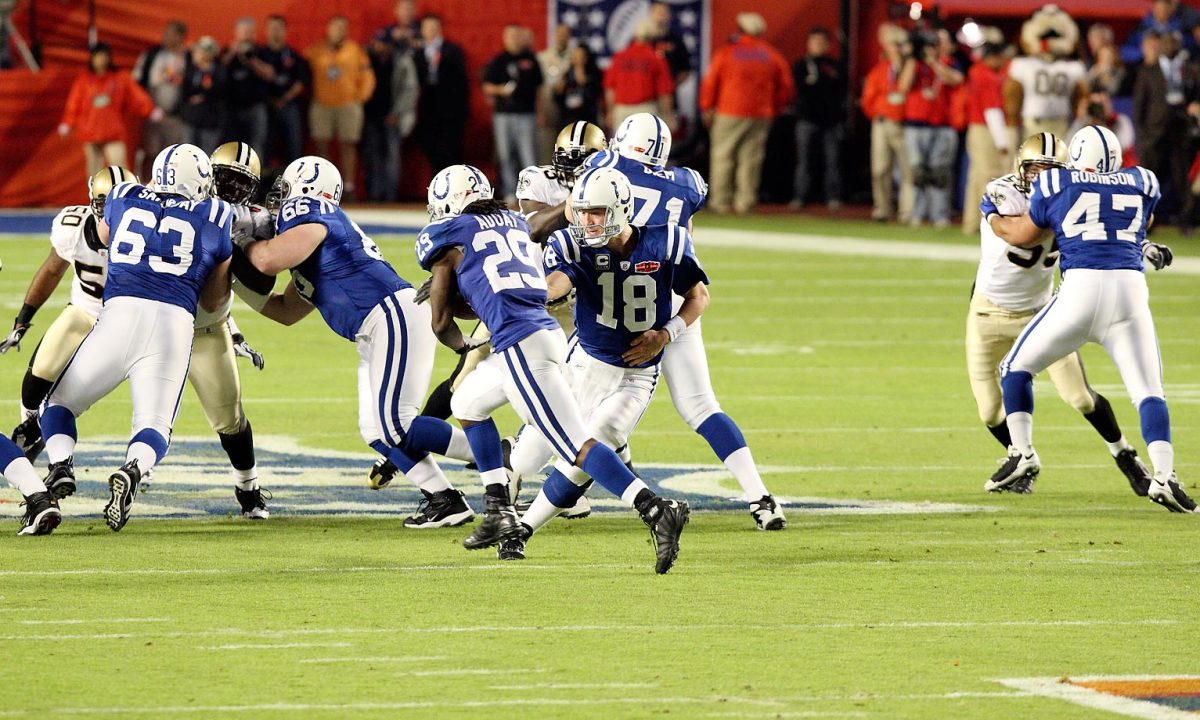
Peyton Manning and the Colts were done in by a gutsy onsides kick by New Orleans to start the second half of Super Bowl XLIV.
Super Bowl XLIV, Feb. 7, 2010: New Orleans 31, Indianapolis 17, at Miami
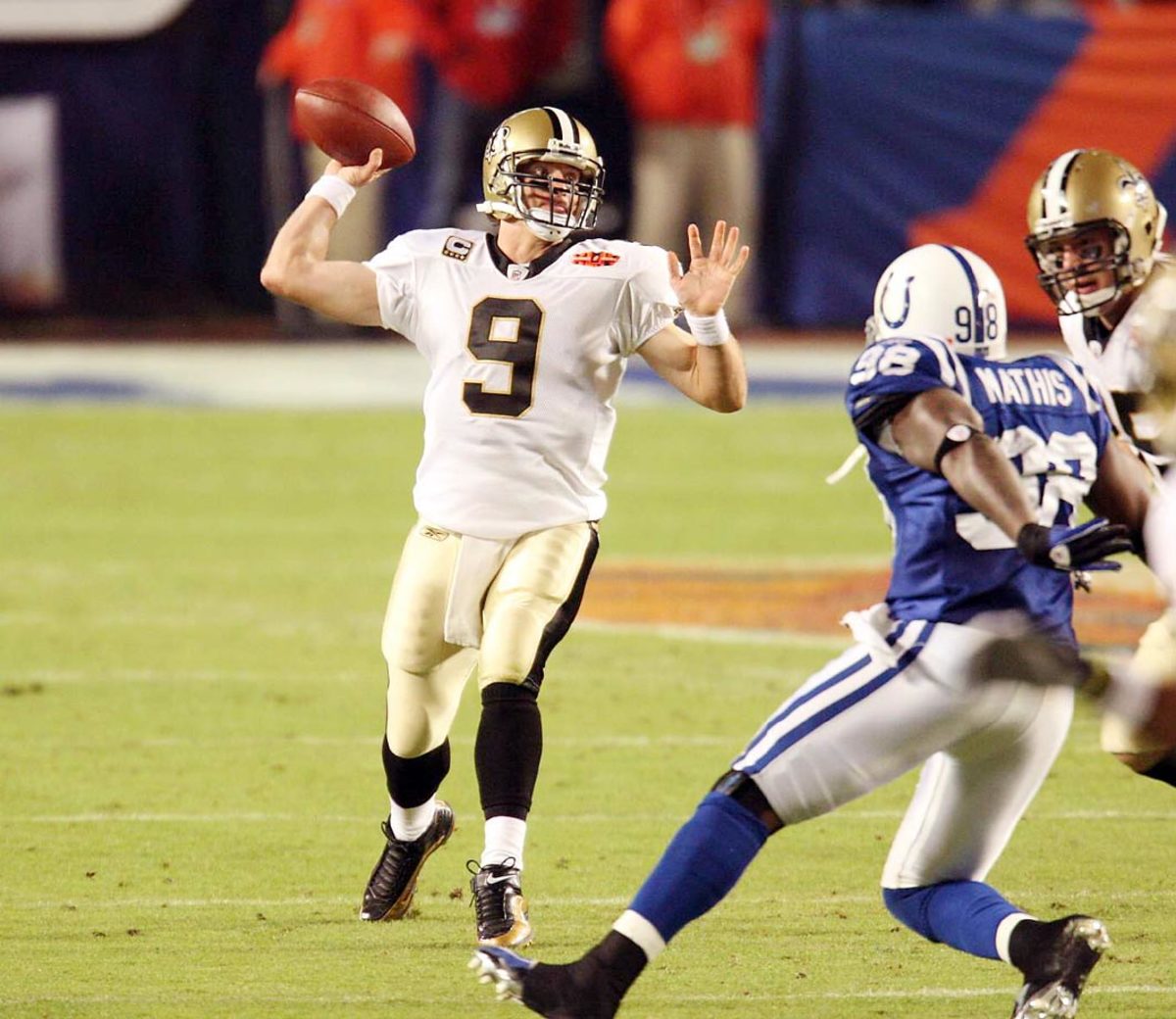
MVP Drew Brees tied a Super Bowl record with 32 completions as the Saints rolled past Indianapolis. Brees threw two touchdown passes in the game.
Super Bowl XLV, Feb. 6, 2011: Green Bay 31, Pittsburgh 25, at Arlington
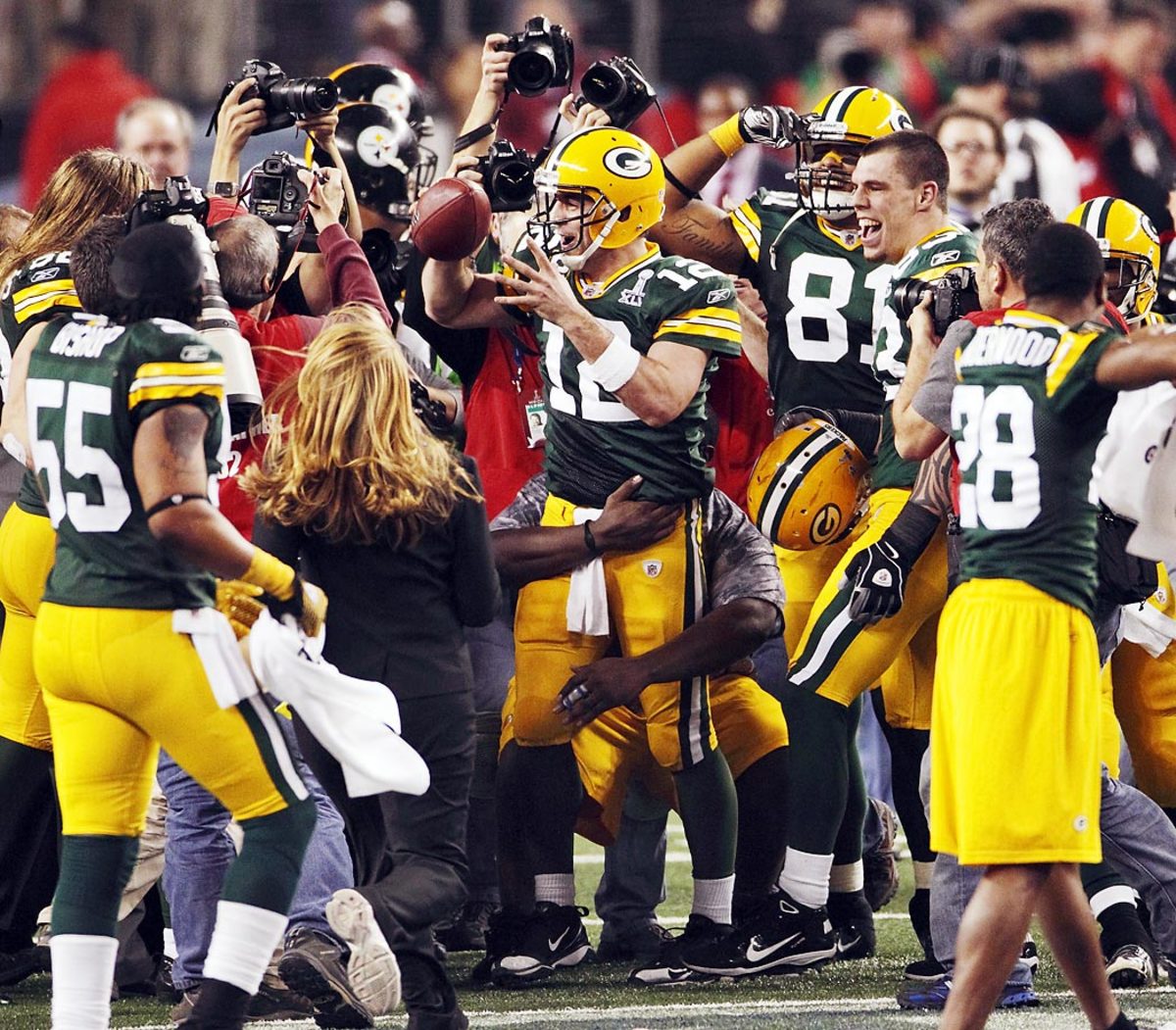
Aaron Rodgers celebrates at the end of a MVP-performance in which he threw three touchdown passes.
Super Bowl XLVI, Feb. 5, 2012: N.Y. Giants 21, New England 17, at Indianapolis
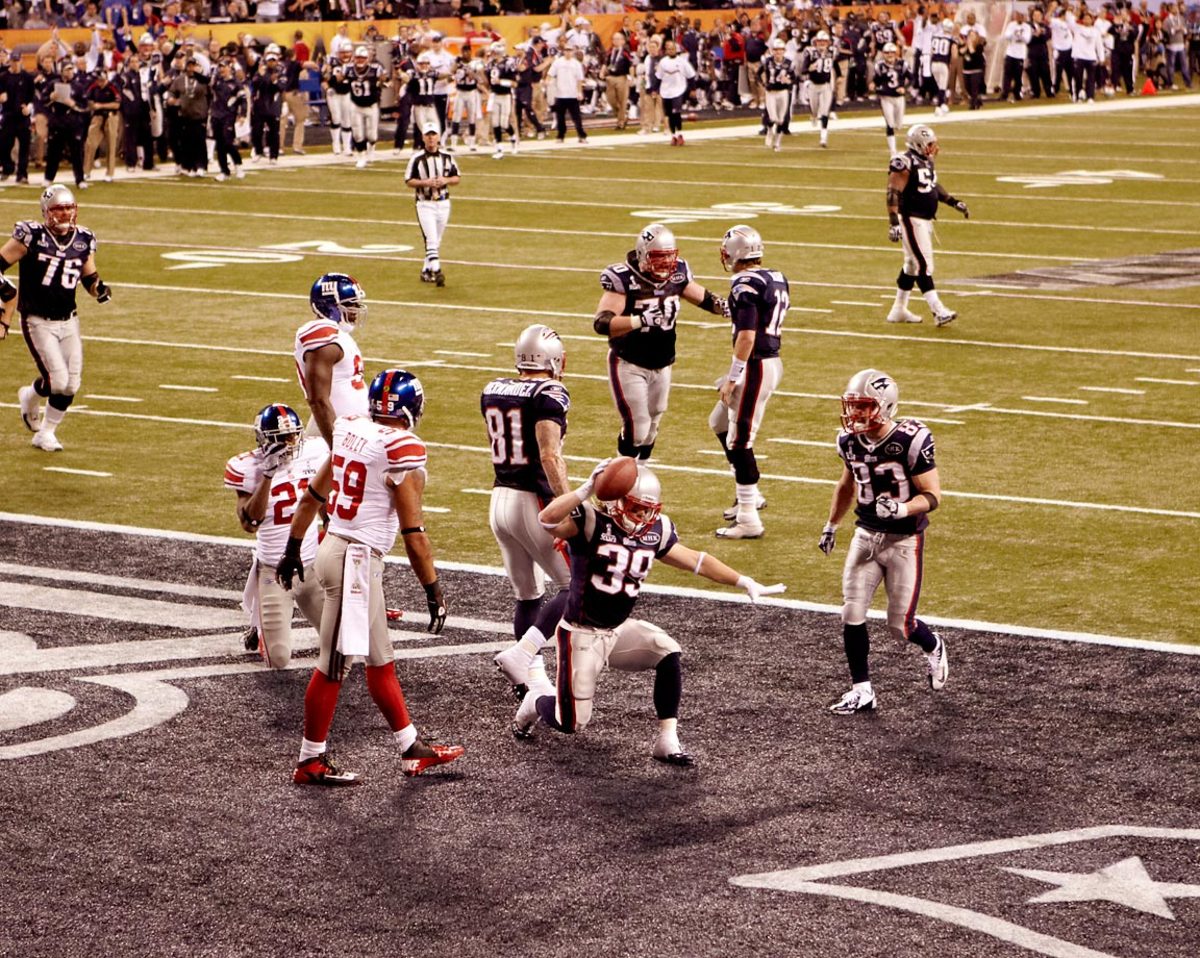
Danny Woodhead spikes the ball after scoring a touchdown against the New York Giants.
Super Bowl XLVII, Feb. 3, 2013: Baltimore 34, San Francisco 31, at New Orleans
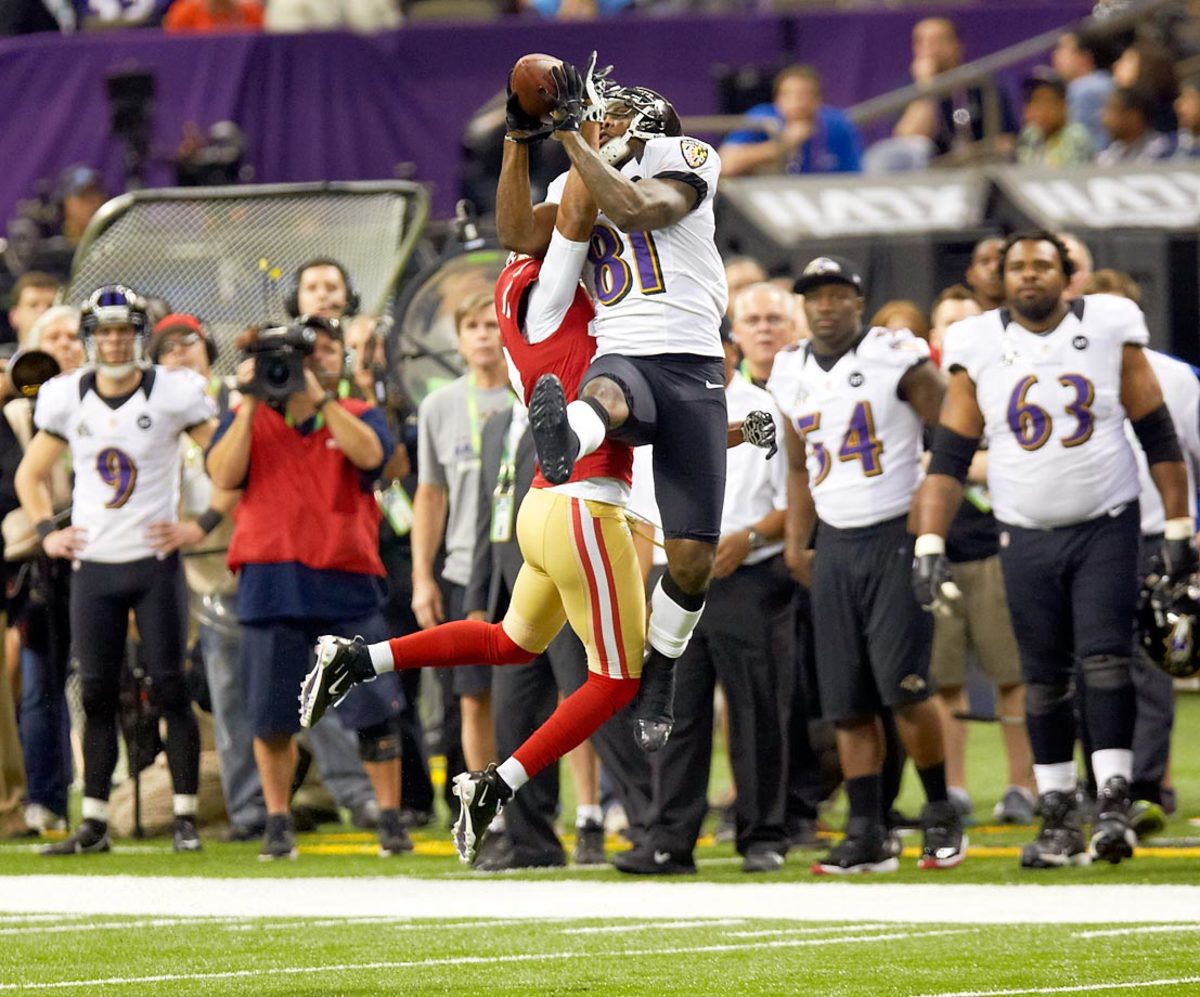
Anquan Boldin made six catches for 106 yards and a touchdown as the Ravens won the second Super Bowl title in franchise history.
Super Bowl XLVII, Feb. 3, 2013: Baltimore 34, San Francisco 31, at New Orleans
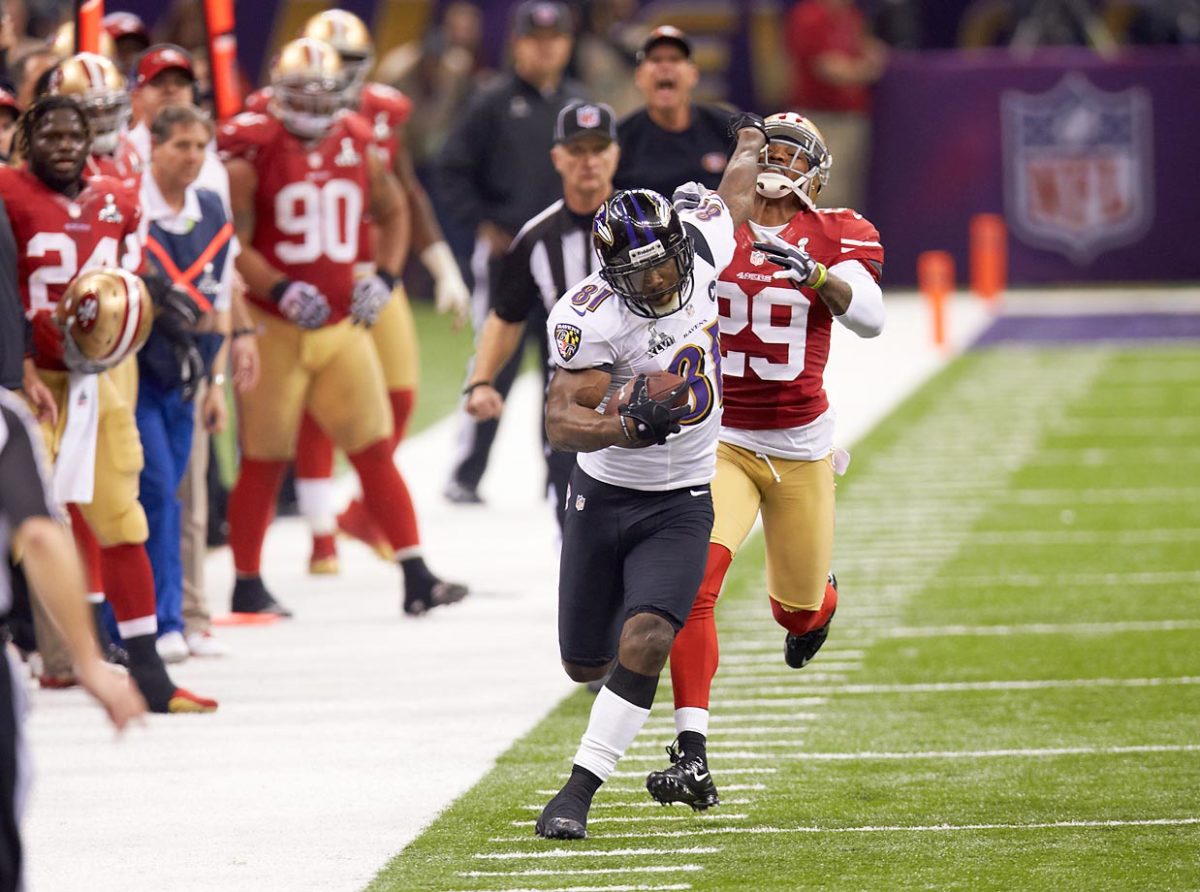
Anquan Boldin fends off Chris Culliver in a game that was delayed for 34 minutes by a power blackout.
Super Bowl XLVII, Feb. 3, 2013: Baltimore 34, San Francisco 31, at New Orleans
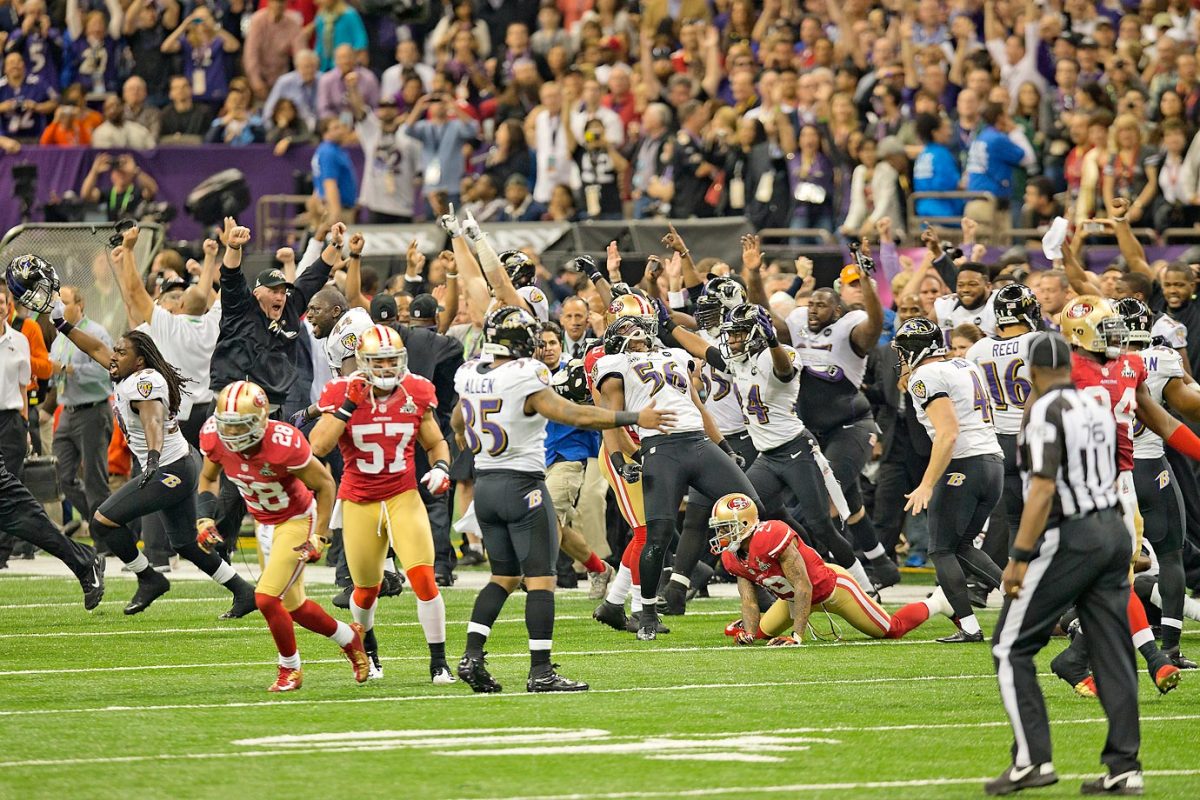
Baltimore Ravens pour onto the field to celebrate their victory -- San Francisco's first ever in a Super Bowl.
Super Bowl XLVIII, Feb. 2, 2014: Seattle 43, Denver 8, at East Rutherford
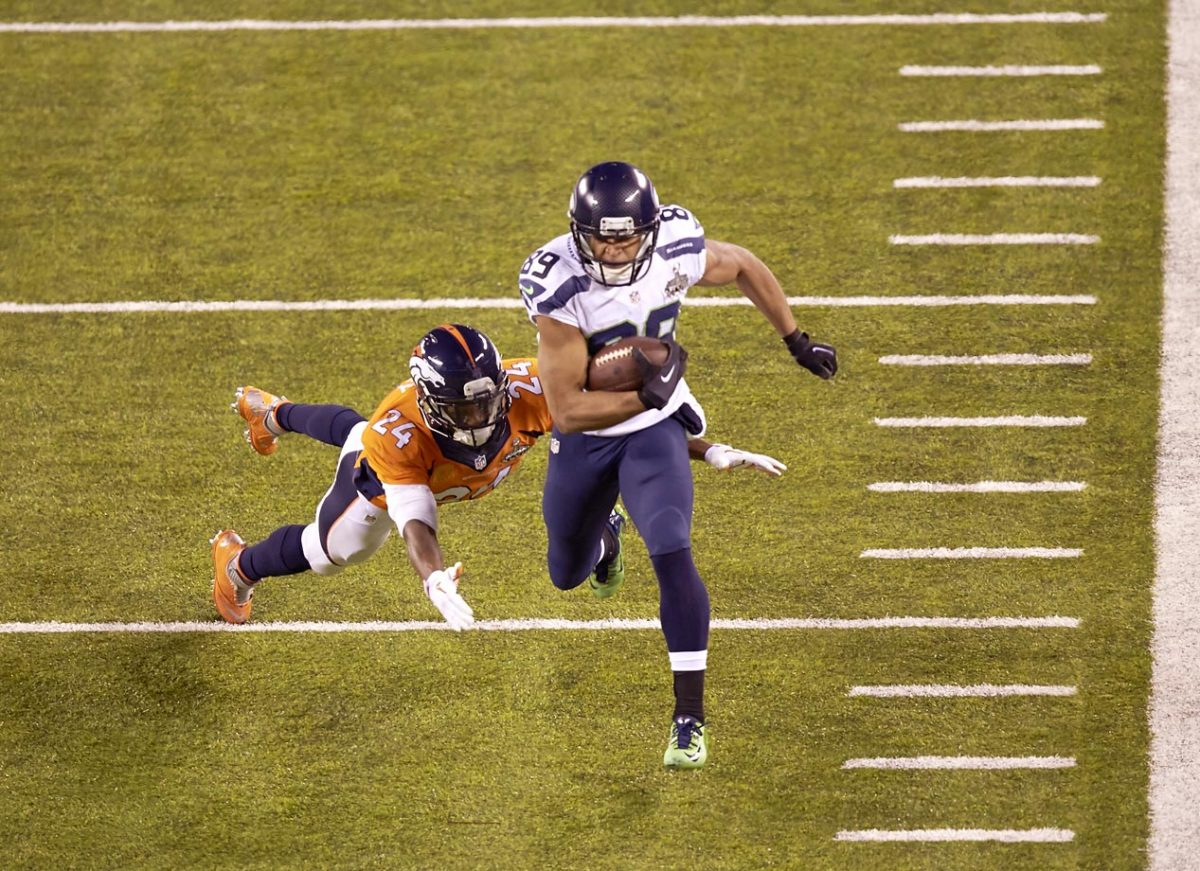
Doug Baldwin tries to escape Champ Bailey in the first Super Bowl played outside in a cold-weather city.
Super Bowl XLVIII, Feb. 2, 2014: Seattle 43, Denver 8, at East Rutherford
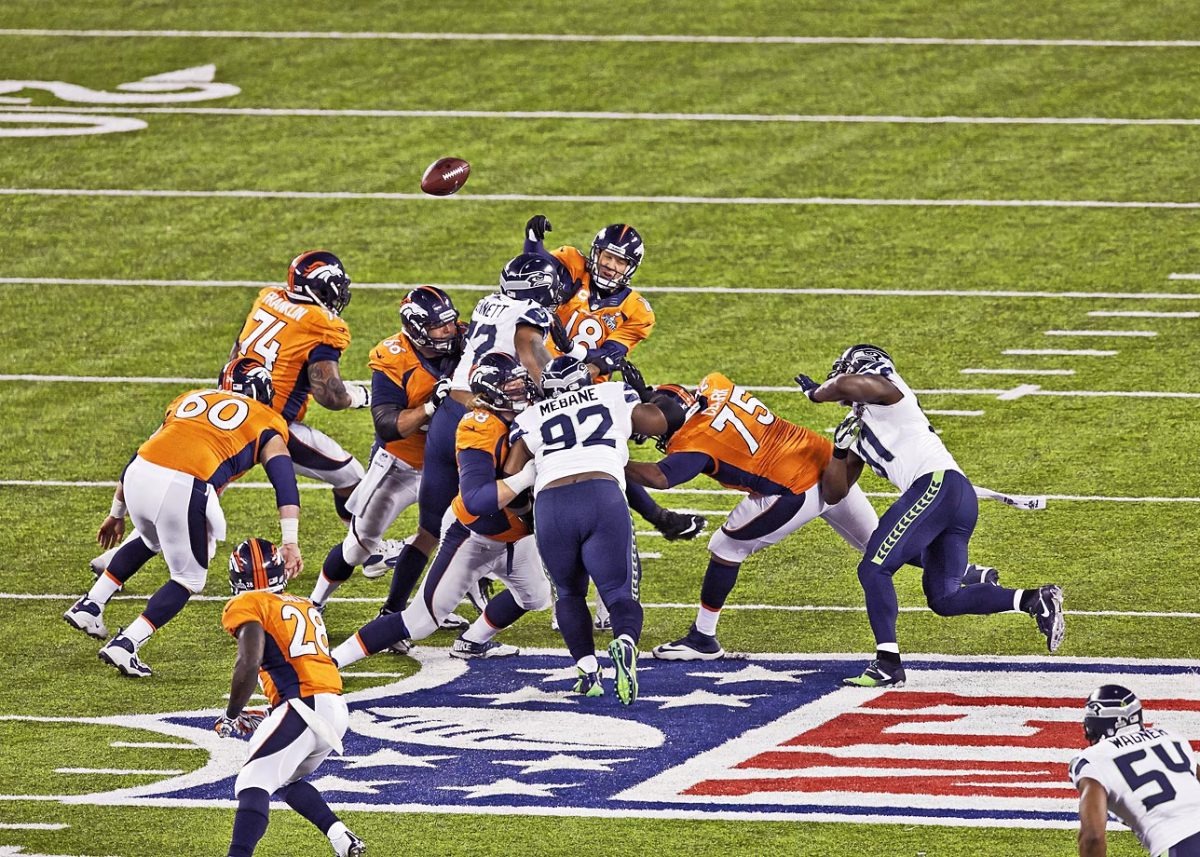
Michael Bennett forces a sack/fumble by Peyton Manning in Seattle's lopsided victory over the Denver Broncos.
[pagebreak]
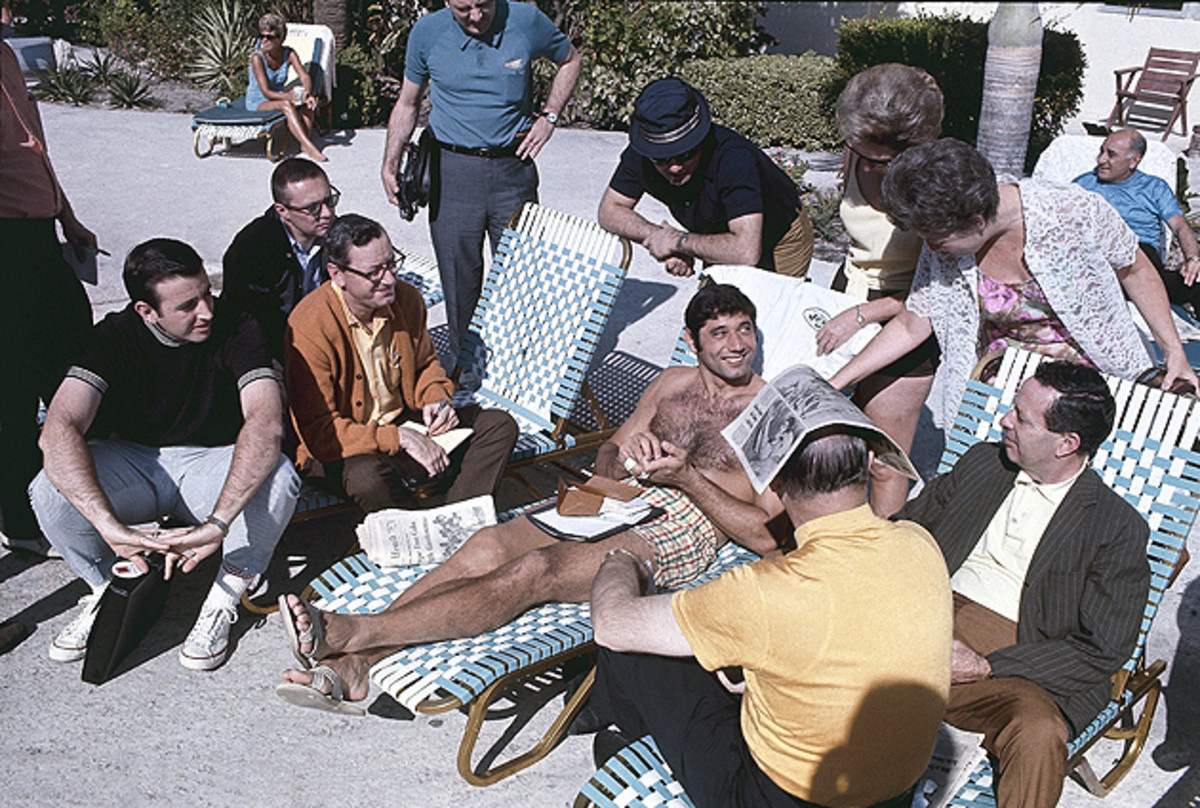
All three writers in interviews last week talked about the impact of Super Bowl III -- the upstart AFL Jets over the NFL’s Colts -- and how memorable the week was to cover. Green was at poolside of the Galt Ocean Mile Hotel in Fort Lauderdale when Jets quarterback Joe Namath conducted an impromptu media session for a dozen reporters who wanted to ask him about guaranteeing a win earlier that week while at the Miami Touchdown Club. This media session produced the iconic photo shot by SI photographer Walter Iosss Jr., one of four photographers to shoot every Super Bowl, of a shirtless Namath relaxing on a lounge chair while talking to the overdressed members of the press.
Green, wearing horned rim glasses and a crew cut, is sitting directly behind a Chicago sports writer named Brent Musburger (whatever happened to that guy?).
“I look like a nerd,” says Green.
Klein was also there and part of another scrum interviewing Namath on the beach. “Namath referred to us as the $200-a-week working slobs,” Klein recalled.
The three Streakers have definitive opinions on the gigantism of Media Week today. Green said he remembered first being hit in the head by television cameras in the locker room after Super Bowl VI. Izenberg said the last football player he interviewed in his hotel room was Cowboys wide receiver Drew Pearson prior to Super Bowl X.
“Media Day is a f------ joke now,” Izenberg says. “You are now dependent on the personality of the guy much more than before because before you were sitting in his room talking to him. At Super Bowl I two days before the game I was sitting in a coffee shop at a Long Beach hotel having breakfast with [Kansas City linebacker] E.J. Holub. We were talking about how if they won the game he would get $15,000. If you lost, you got $7,500. Today that might be tip money, but it was an enormous pay day then. His hands were out and shaking talking to me and he says, 'Look, feel my palms; they are sweating.' I was just a shmucky kid so I asked, 'Is that because you have the opportunity to prove yourself against the NFL?' He said, 'No. It’s because if we win, we are going to make $15,000.' To a football player then that was a tremendous amount of money. That tells you what you need to know about that first Super Bowl.”
Klein said he also thought things started changing in the late 1970s.
“It’s a circus now,” he says. “I try not to attend Media Day. It’s like being in the middle of a teeming crowd in New Delhi. But the NFL loves it because it attracts people and fans.”
Izenberg said one of the moments where he felt the Super Bowl had crossed the Rubicon was when MTV VJ Julie Brown was credentialed for Super Bowl Media Day in 1992. Wearing a tuxedo, she sat on lap of Redskins defensive lineman Dexter Manley for an interview.
"She comes bouncing in, jumps into his lap, strokes his thigh and says, 'Can I talk to you, Dexter?'" Izenberg says. "I said, 'Well, f--- this.' And I walked away and I wrote about it. I’ve written about it off and on to show you how the league has made a circus with Media Day."
“They are both octogenarians and things change,” says Joe Browne, the NFL’s longtime public relations head and now a special advisor to the league. “That is what I would tell the two Jerry’s. Yes, Media Day has grown. If it is interfering with the legitimate media, I am not in favor of it. … When Pete Rozelle resigned in 1989, the media asked him if he ever could have envisioned the Super Bowl getting as big as it had. He just took a puff of his cigarette and said, 'There was no way.' Now 25 years later it has gotten X times bigger than when Pete was here.”
For years this group of three was a quartet. Last year 86-year-old Edwin Pope, the brilliant Miami Herald columnist who had covered the first 47 games, did not cover the game for health reasons. The last Super Bowl for Bob Oates, the famed Los Angeles Times writer, came in 2005. He missed the 2006 game to stay with his wife, Marnie, who had suffered a fall a few months earlier. She died in February of that year, and Oates passed away three years later at 93, never returning to the Super Bowl.
The current trio has had some near misses over the years. Izenberg has Meniere's disease, a disorder of the inner ear that causes spontaneous episodes of vertigo, and it hit him at home two weeks before Super Bowl XXXVII in 2003. He covered the game in San Diego but was very shaky on his feet and recalled how he got dizzy in the upper deck of the stadium prior to kickoff. Longtime Dolphins PR head Harvey Greene helped him back to the press box with a wheelchair.
“I did not go down to the locker room,” Izenberg said. “Pete Finney Sr., one of my closest friends, wrote his piece and then grabbed my arm and got me down to the media bus.”
Prior to Super Bowl XXXVI in New Orleans in 2002, Green dropped his wife Nancy off at her sister’s home in Gulf Shores, Ala. He left his car there and took the bus from Mobile to New Orleans for the game. The morning of the Super Bowl, he received a call that his wife had a stroke.
"I told her, 'I am leaving, I’m coming to see you,'" Green said. “She said, 'What about your streak?' I said, 'I don’t care about the streak. I care about you.' But Nancy talked me in to staying. The next morning I took the first Greyhound from New Orleans to Mobile at 5 a.m. By that time she had improved. The streak was important to her.” Nancy Green died a couple of months later. The two were married for 40 years, six months and two days.
Green and Izenberg are not overly close but they do share dinner together and like each other. But there is some tension between Klein and Izenberg, former colleagues at the Star-Ledger.
“He was there writing the column, and I was there doing the hard work,” said Klein, laughing, about their shared Super Bowl experiences.
Green, an exceedingly friendly man, gets along with both men.
“I use the phrase that Jerry and I are the last two newspaper writers to cover Super Bowls because Dave Klein is not doing it for a newspaper,” Green said. “I saw Dave at Media Day last year and we chatted. As far as I am concerned, Dave Klein has been a friend of mine since we covered a championship game in Dallas in 1966. He’s fine. I have nothing against him. I know Jerry doesn’t like him.”
Klein does not see any distinction between he and the newspaper men when it comes to the streak. “No difference at all,” Klein says. “I still work at a keyboard. I still write stories. I still am read by people.”
But don’t get the impression this is the Cocoon version of Tupac-Biggie. Klein says if he sees Izenberg and Green at the Super Bowl he will certainly say hello. “And if they see me, I certainly hope they say hello, too” he says.
The only time Green got chafed in interviews was when talking about the NFL brass’ relationship with the Streakers.
“I get the idea that would like us to go away,” Green says. “They are not very friendly. They do just a little bit for us where Rozelle used to have a party and [Paul] Tagliabue had a party. There used to be a note in the program that so-and-so had covered every Super Bowl, stuff like that. Now we are pretty much just the same. I am disappointed in that.”
Green recalled a couple of years ago seeing NFL commissioner Roger Goodell at a hospitality area during Super Bowl Week. “He looked at my badge and said, 'Oh, you are one of the guys who has covered every one.' I said, “Yes.” And that was it. He’s a cold fish.”
What about their younger media colleagues?
“I would be surprised if most of them were interested in us because they have their own jobs to do and they better be f------ doing them,” says Izenberg.
All three men share a great fondness for Rozelle. Last October, Izenberg published a book titled “Rozelle: A Biography” that he says took him 32 years to write. He told the story of how the league set up a conference call with Rozelle and veteran NFL reporters at the 1996 Super Bowl so Rozelle could say a few last words to them via speaker phone (Rozelle died in December that year).
“He was dying, there were no two ways about it,” Izenberg says. “I’m thinking this is really going to be hard. We were close. I just hoped it would do some good for him. There was a squawk box and they put each of us on with him. We came there to console him and he wound up consoling us. He had a smart-ass remark for every one of us. He busted me on for my 48-sentence leads. Have a drink on me was the last thing he said. I remember someone yelled out, 'For Pete!,' and we all took a drink.”
Streaks can become burdensome in sports, and in life, but all three men have a healthy attitude about it, including some gallows humor.
“It is a reminder,” Izenberg says, laughing, “that I am still alive.”
